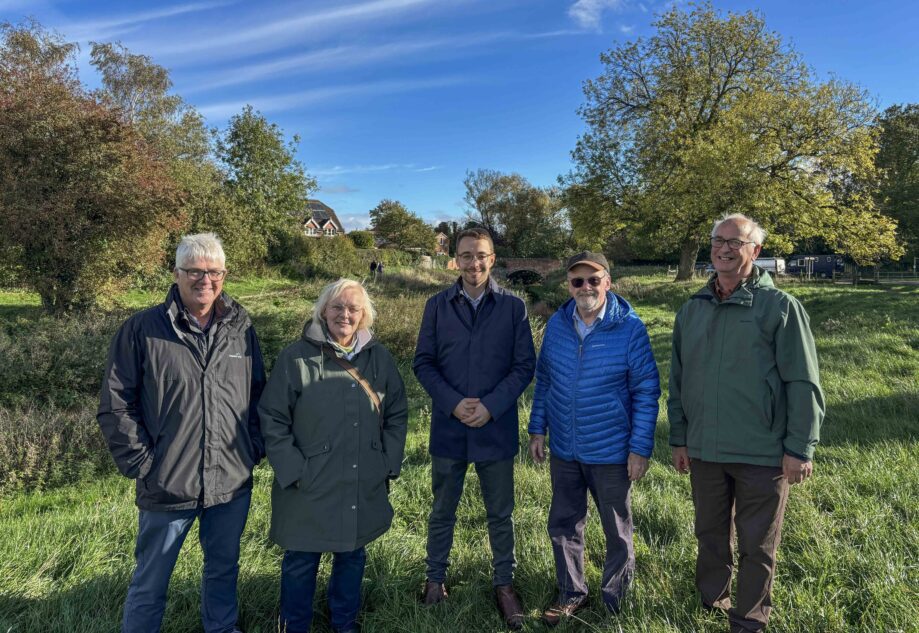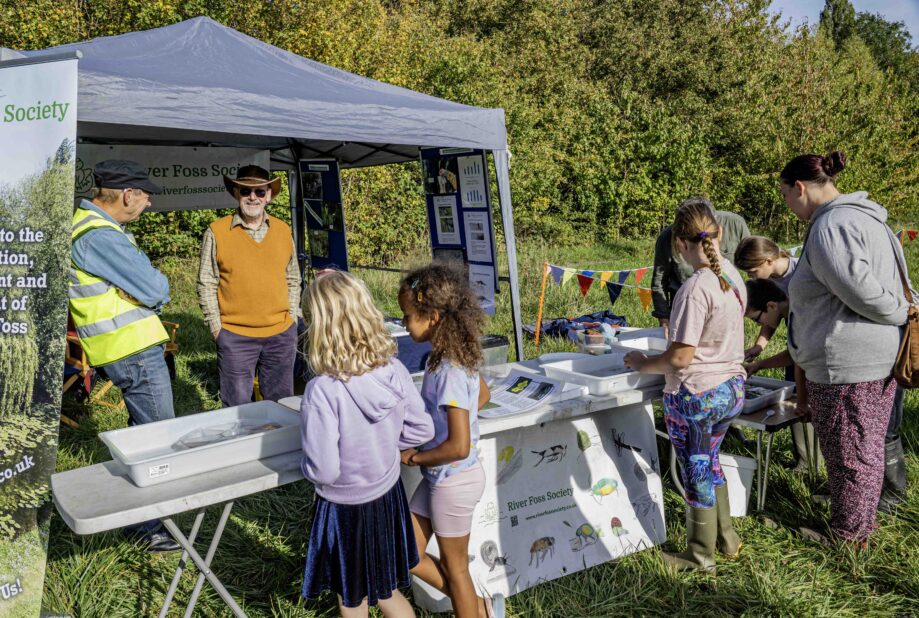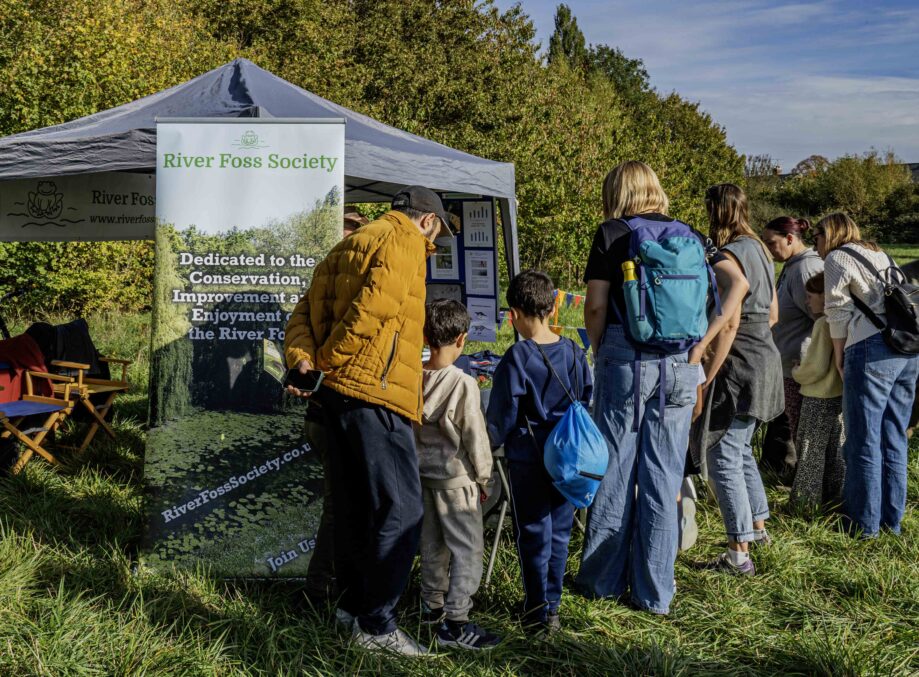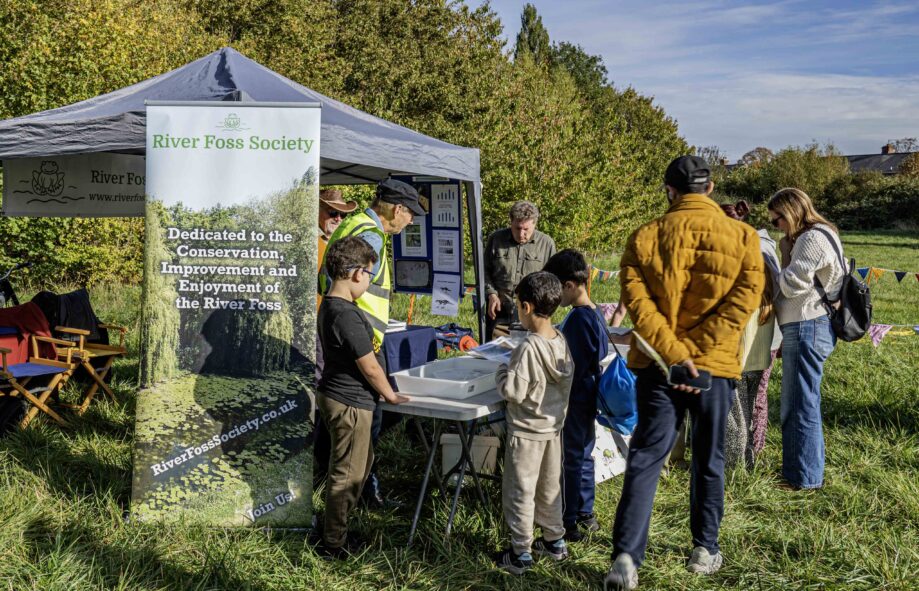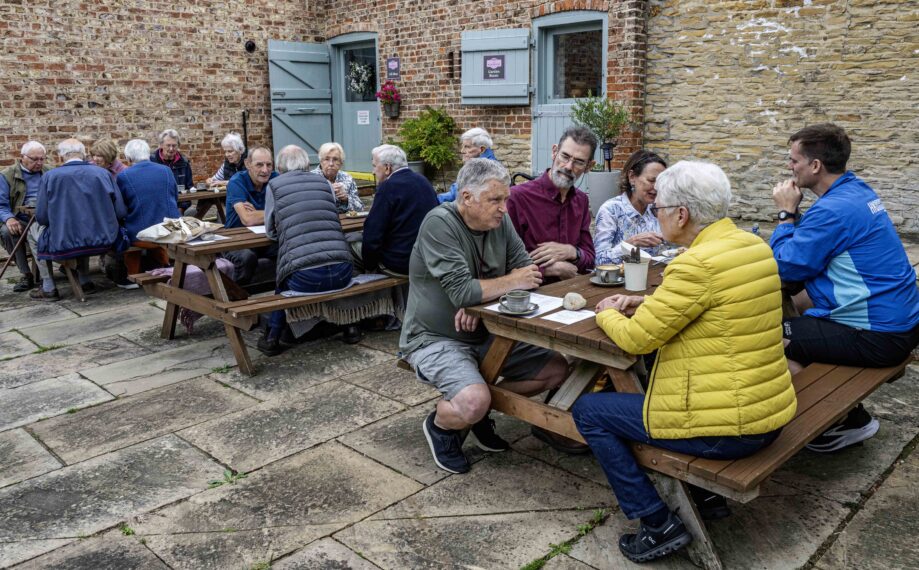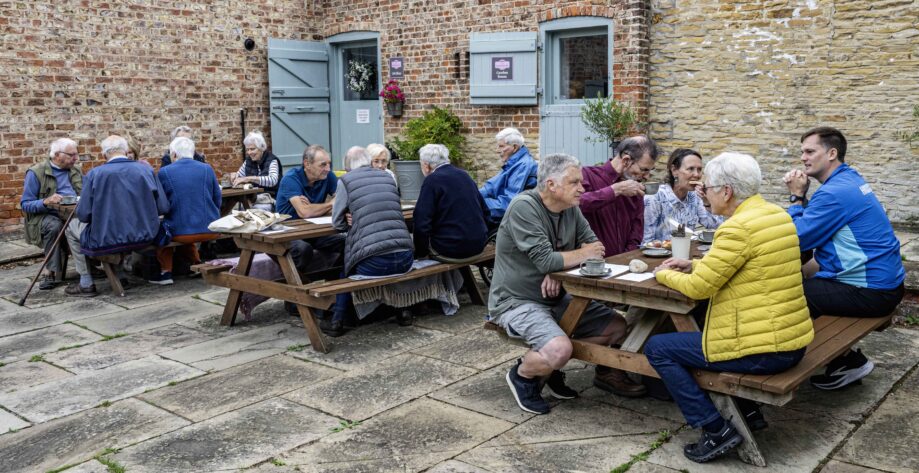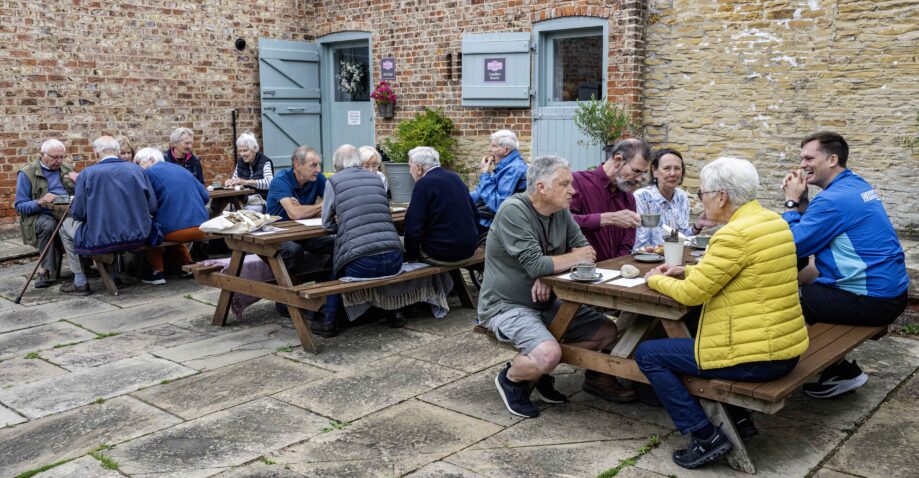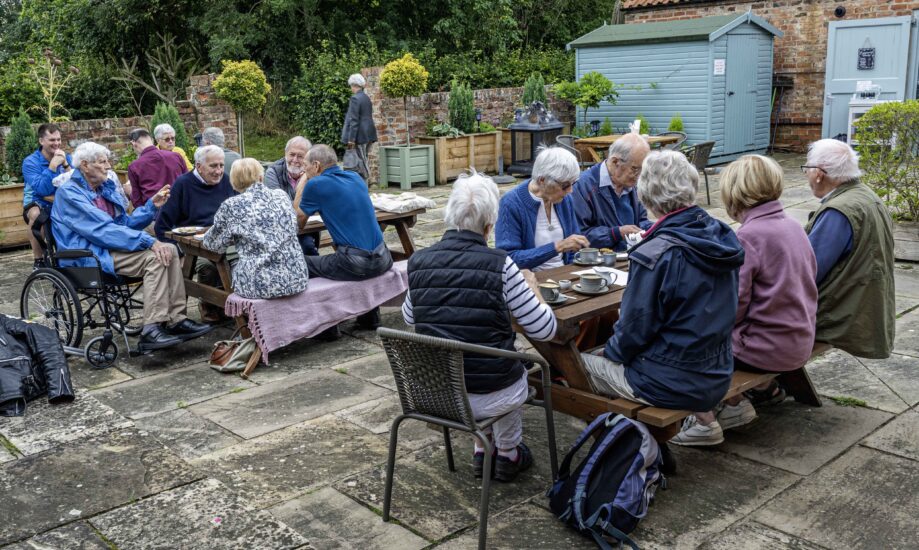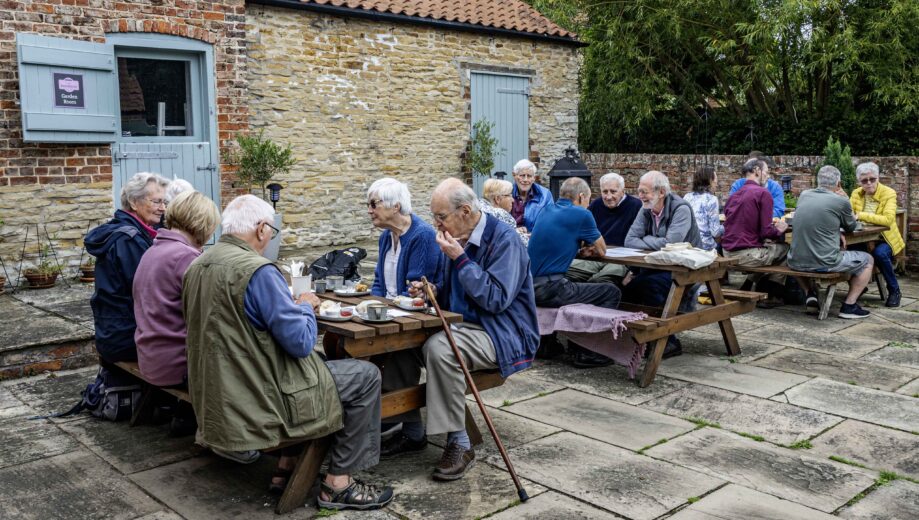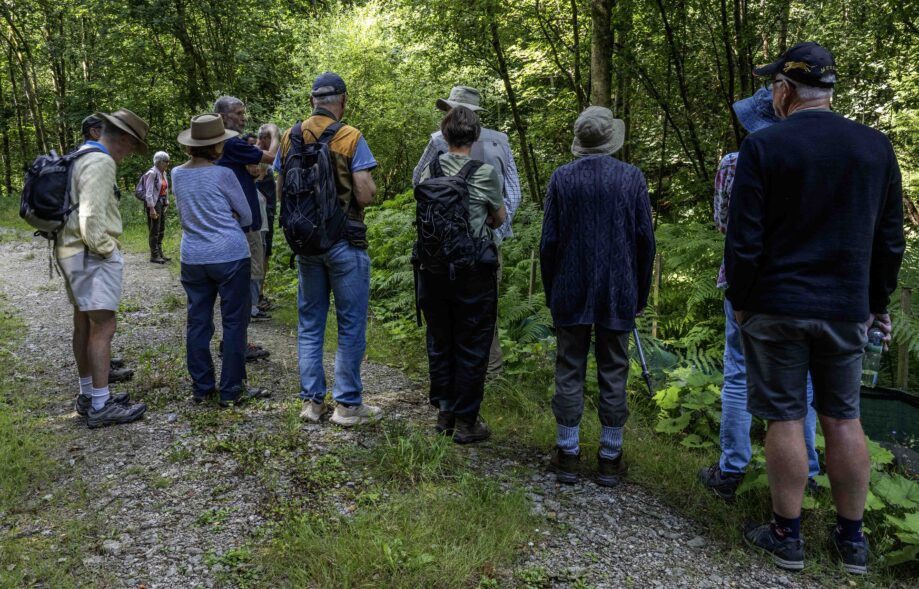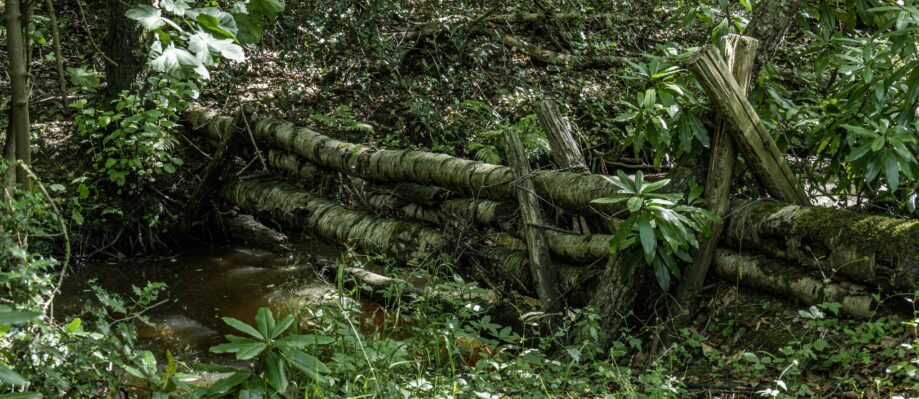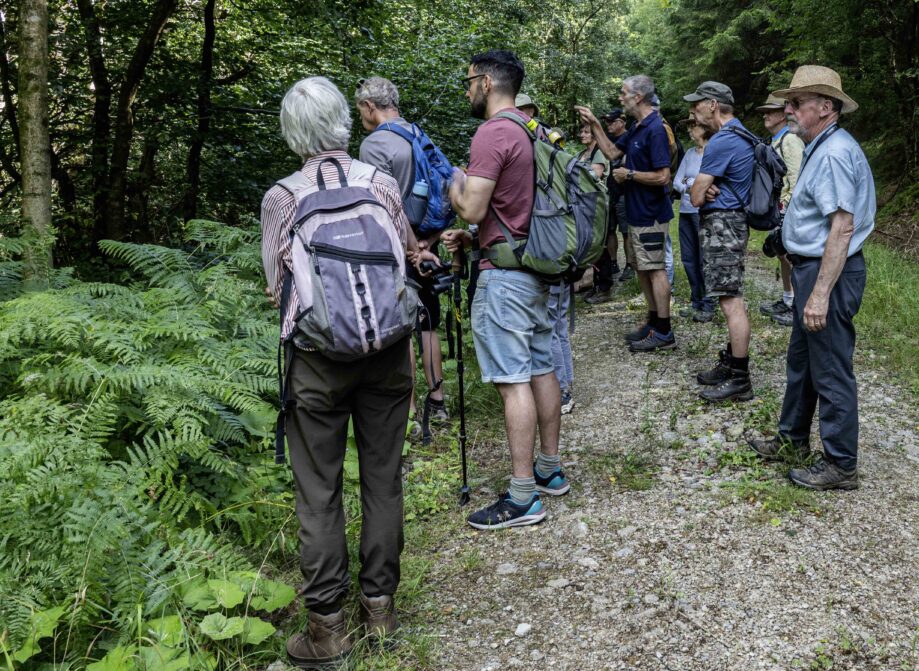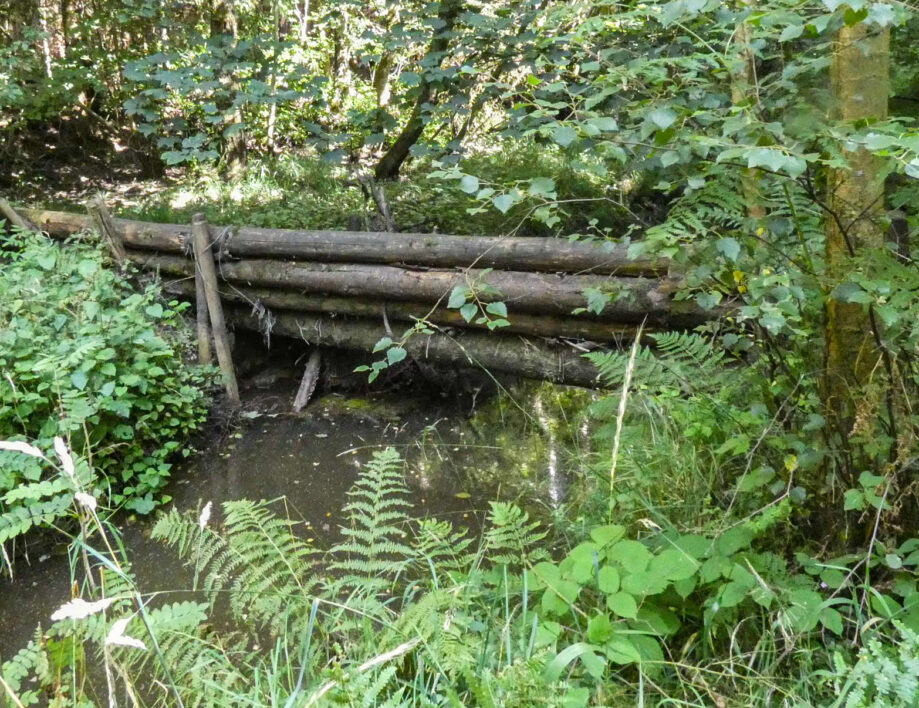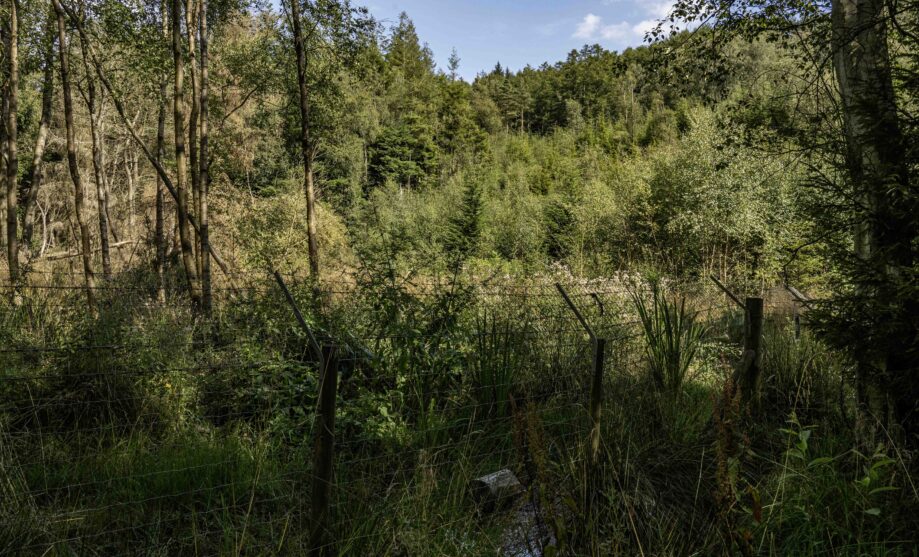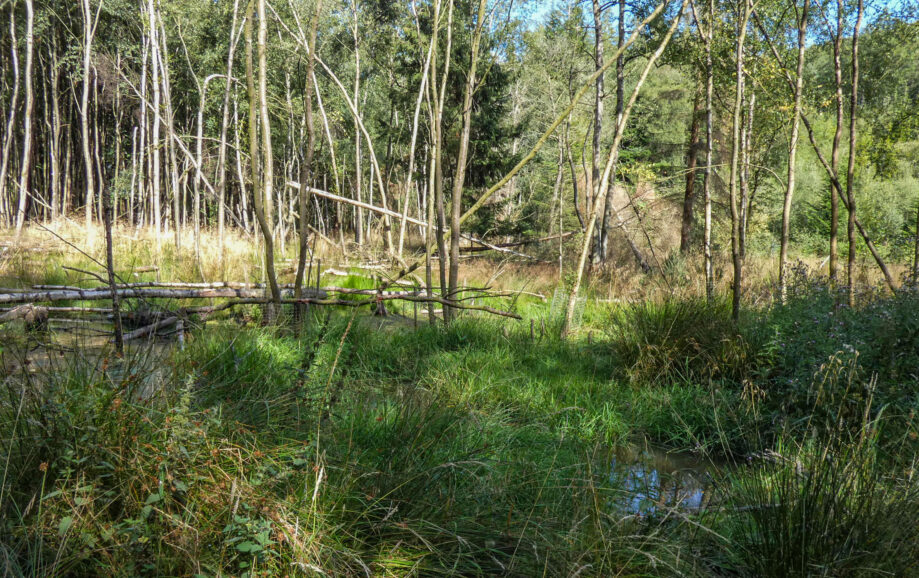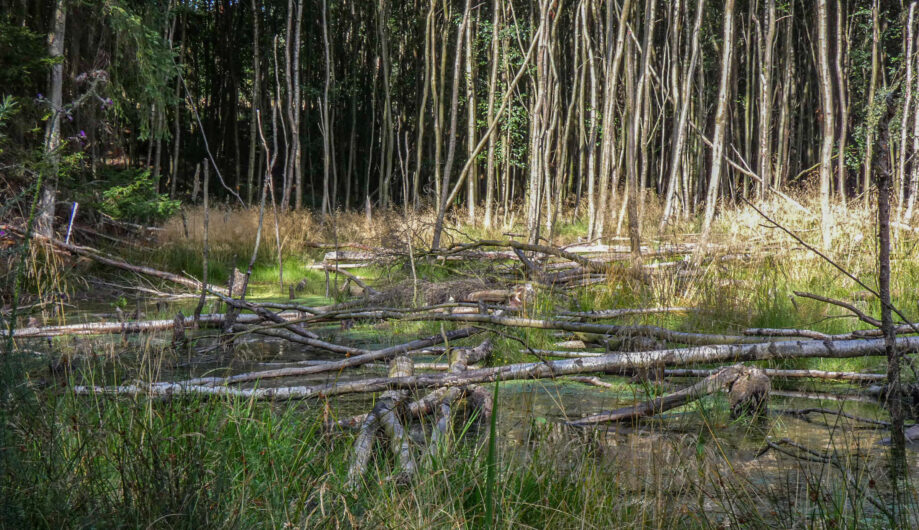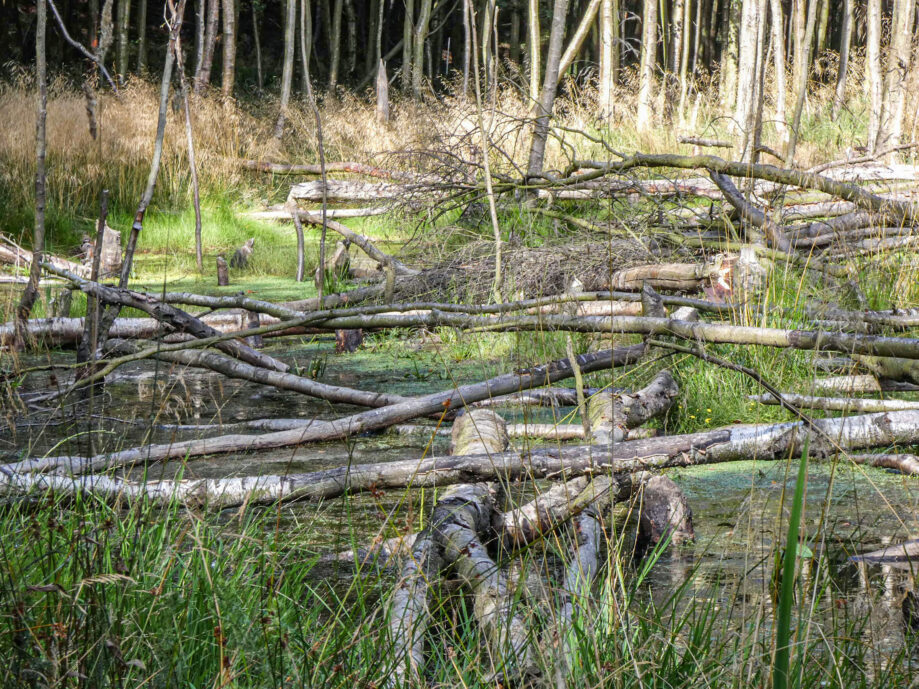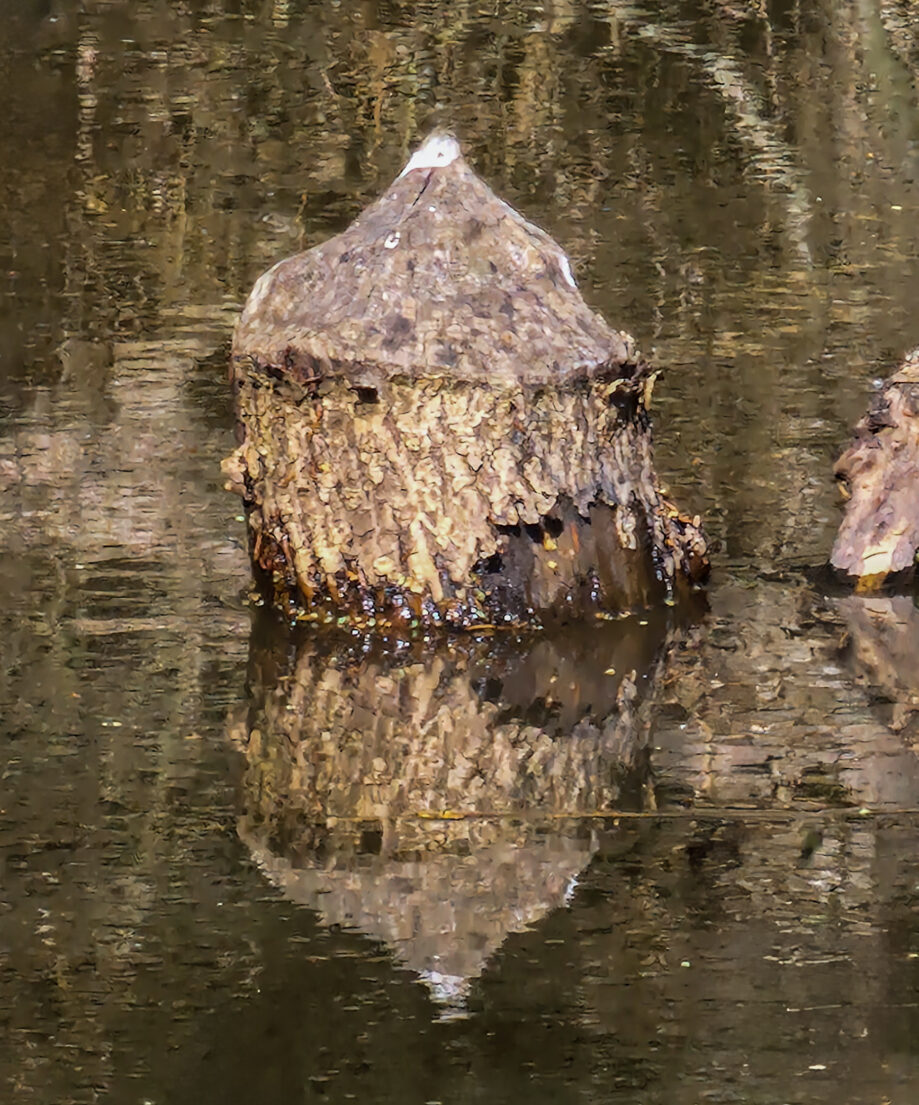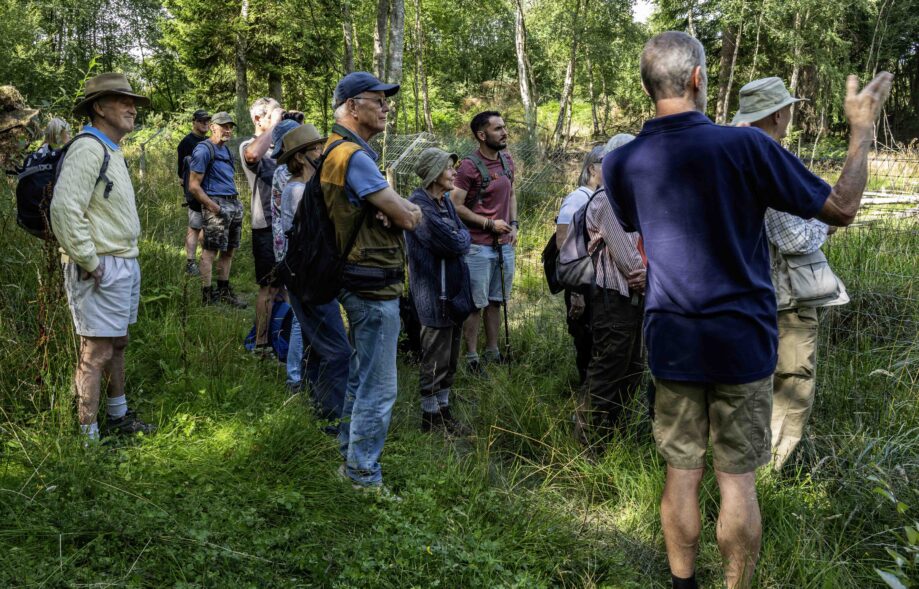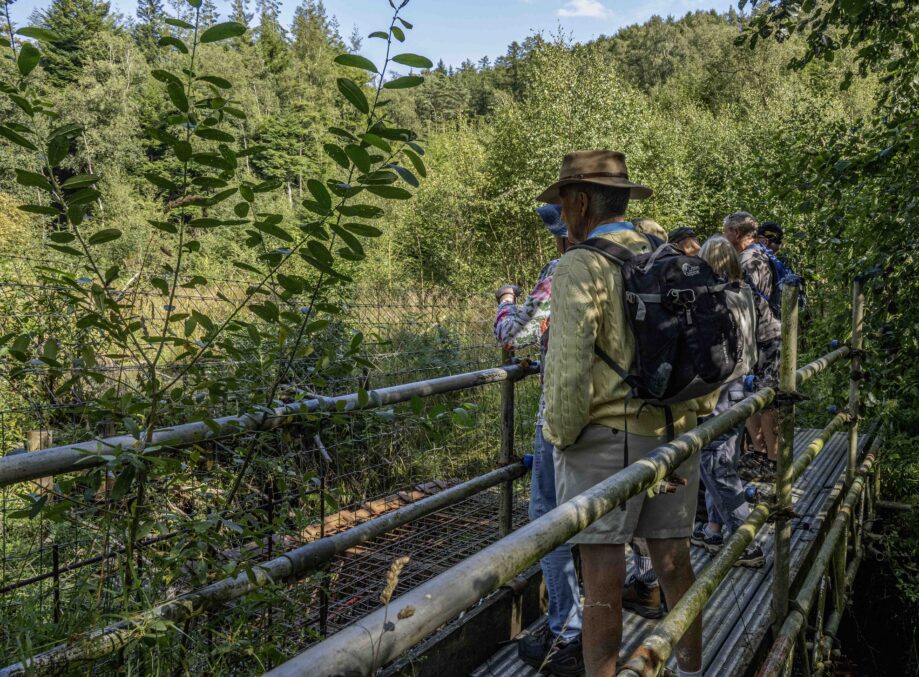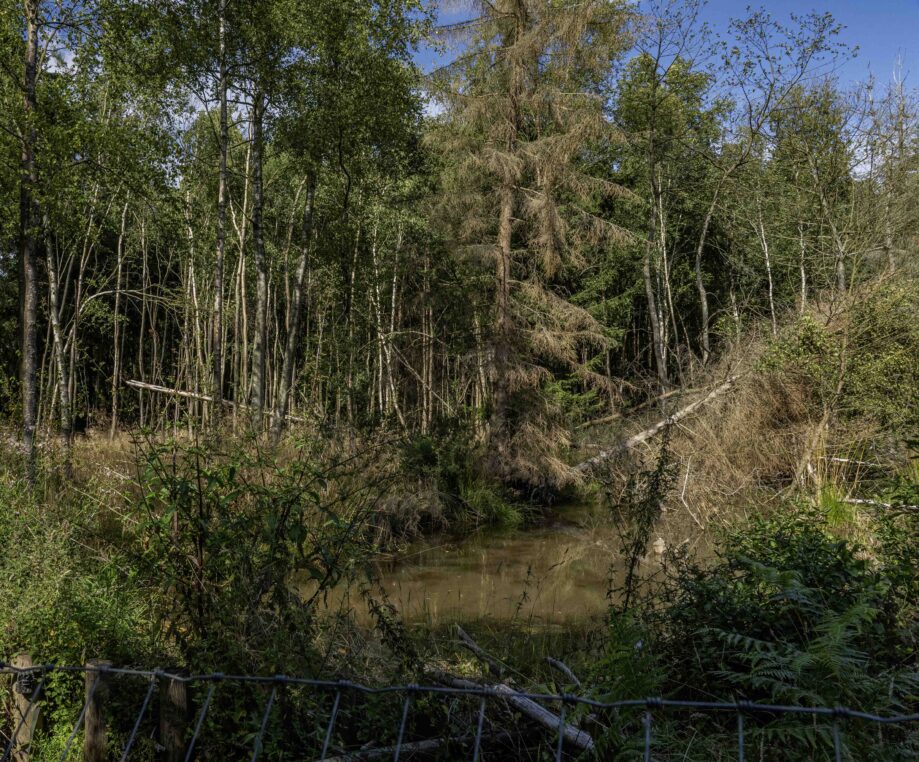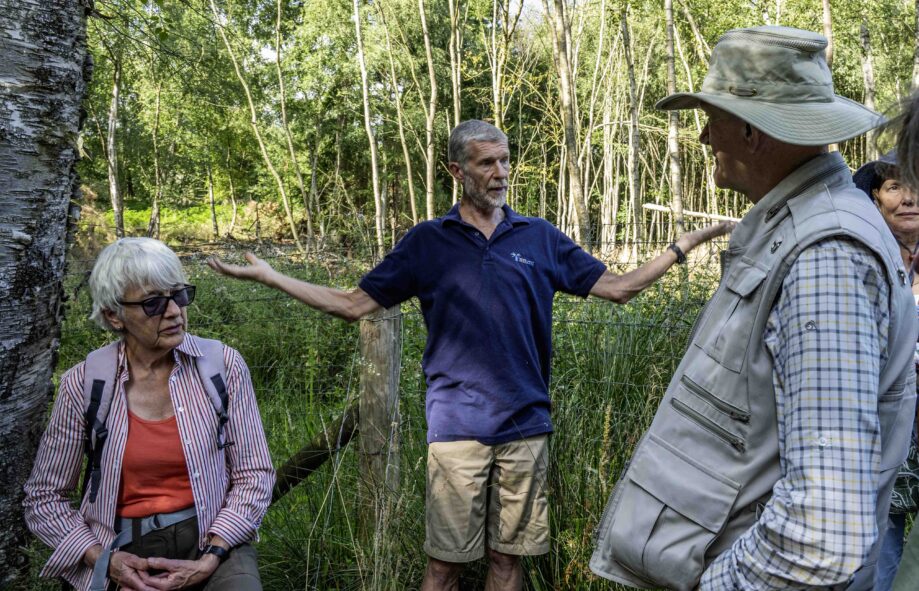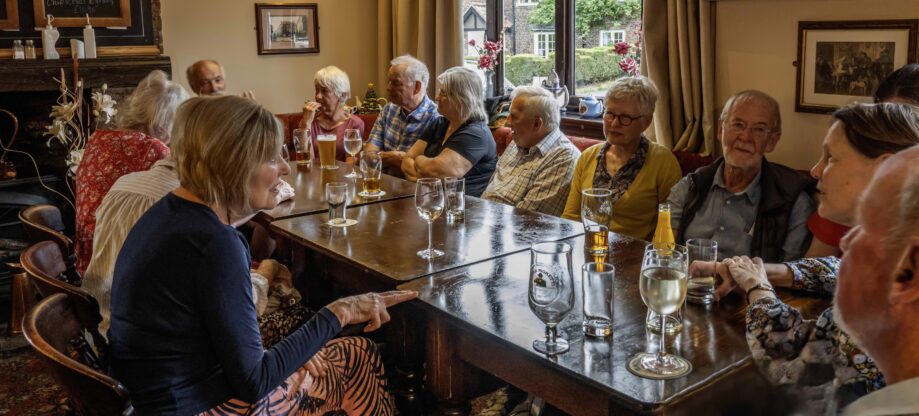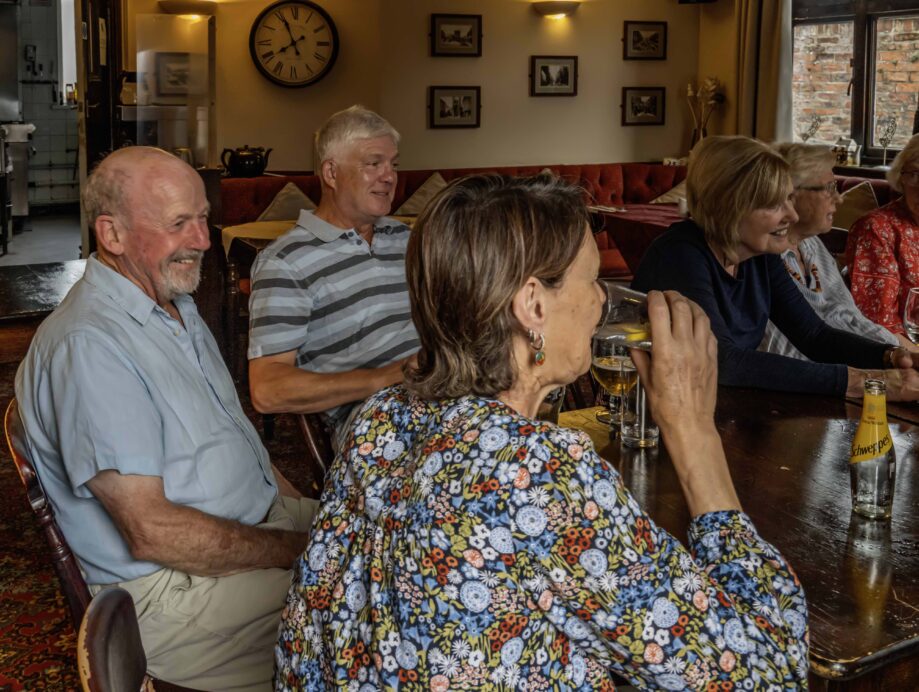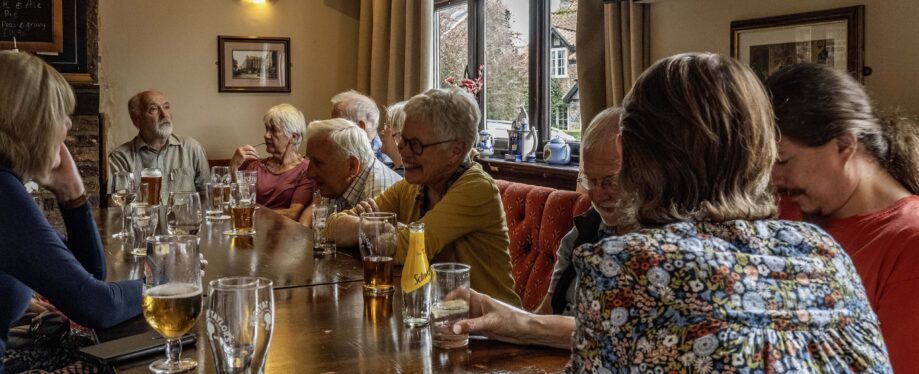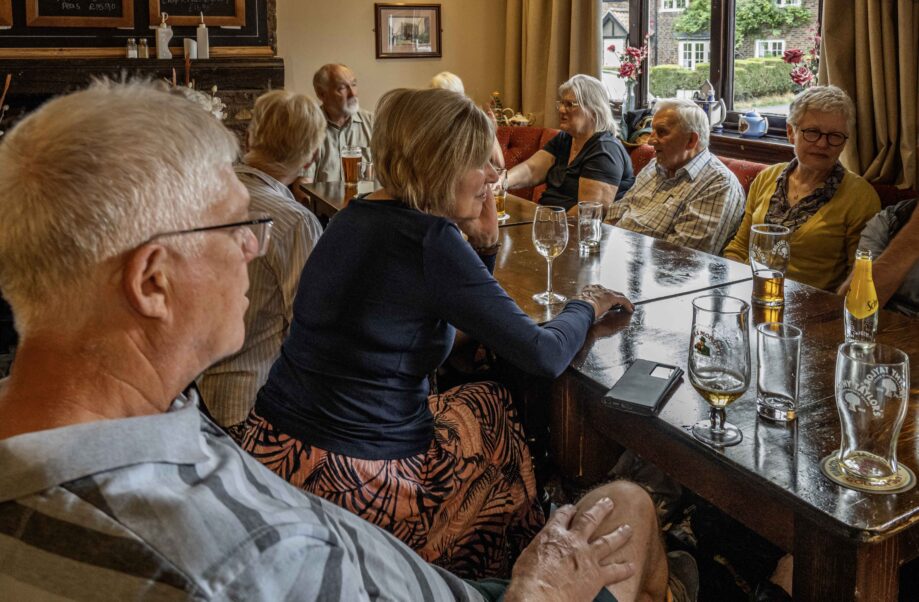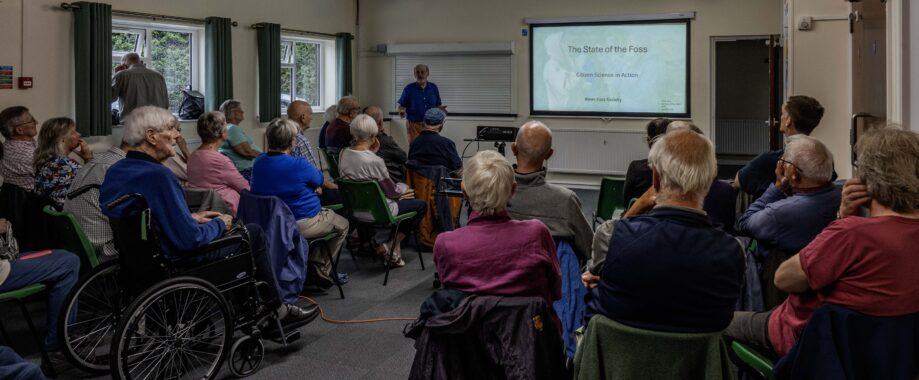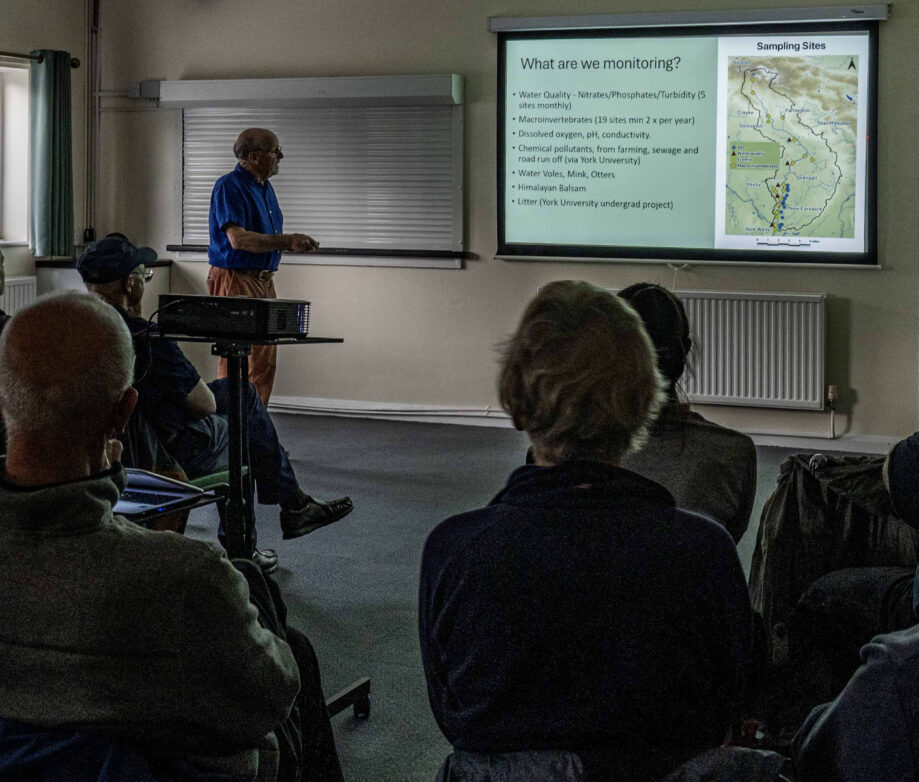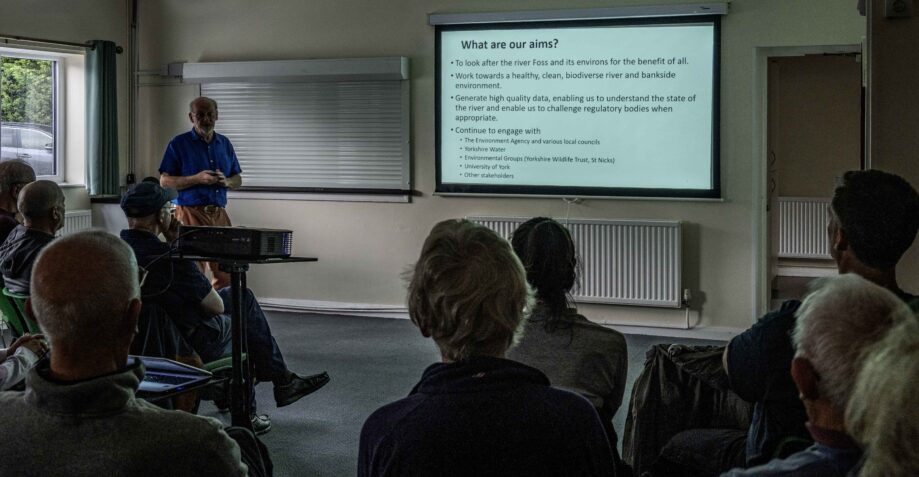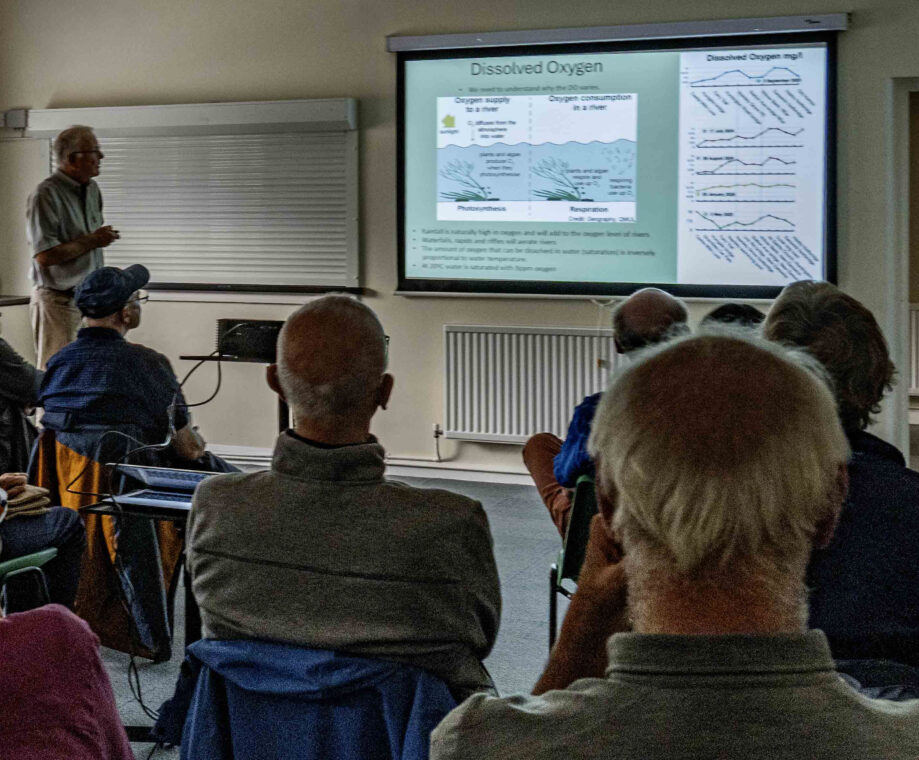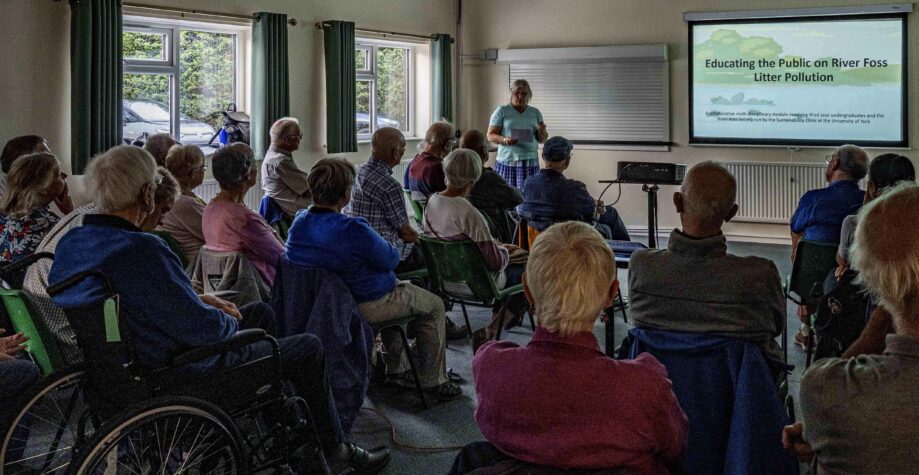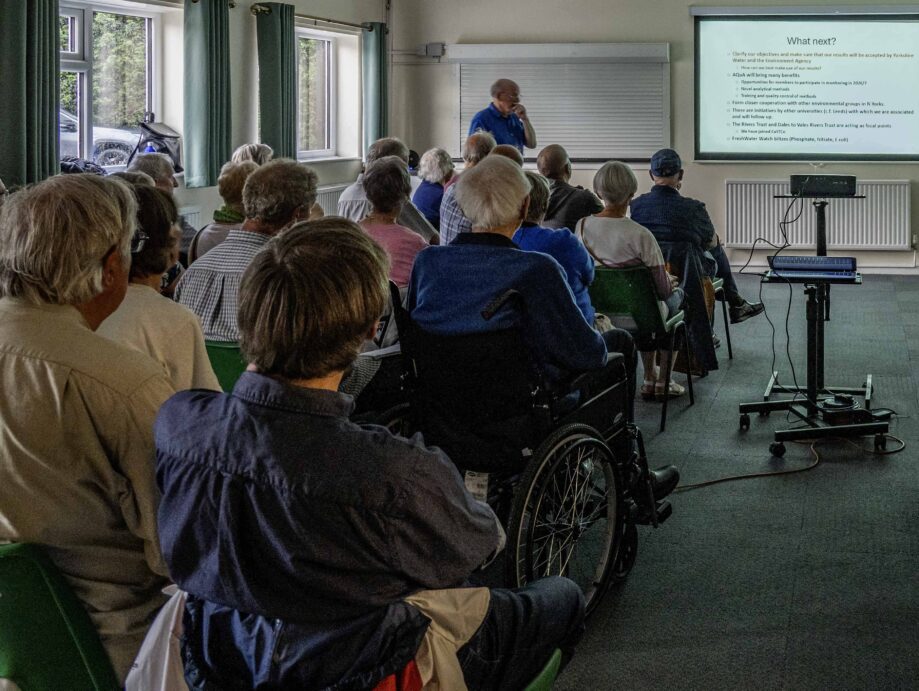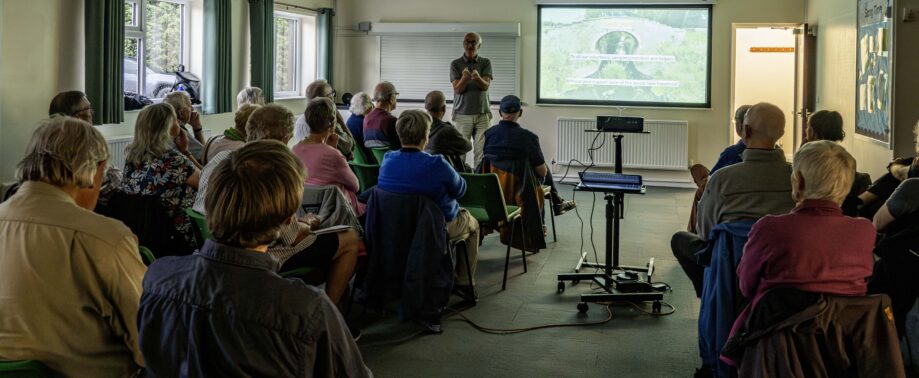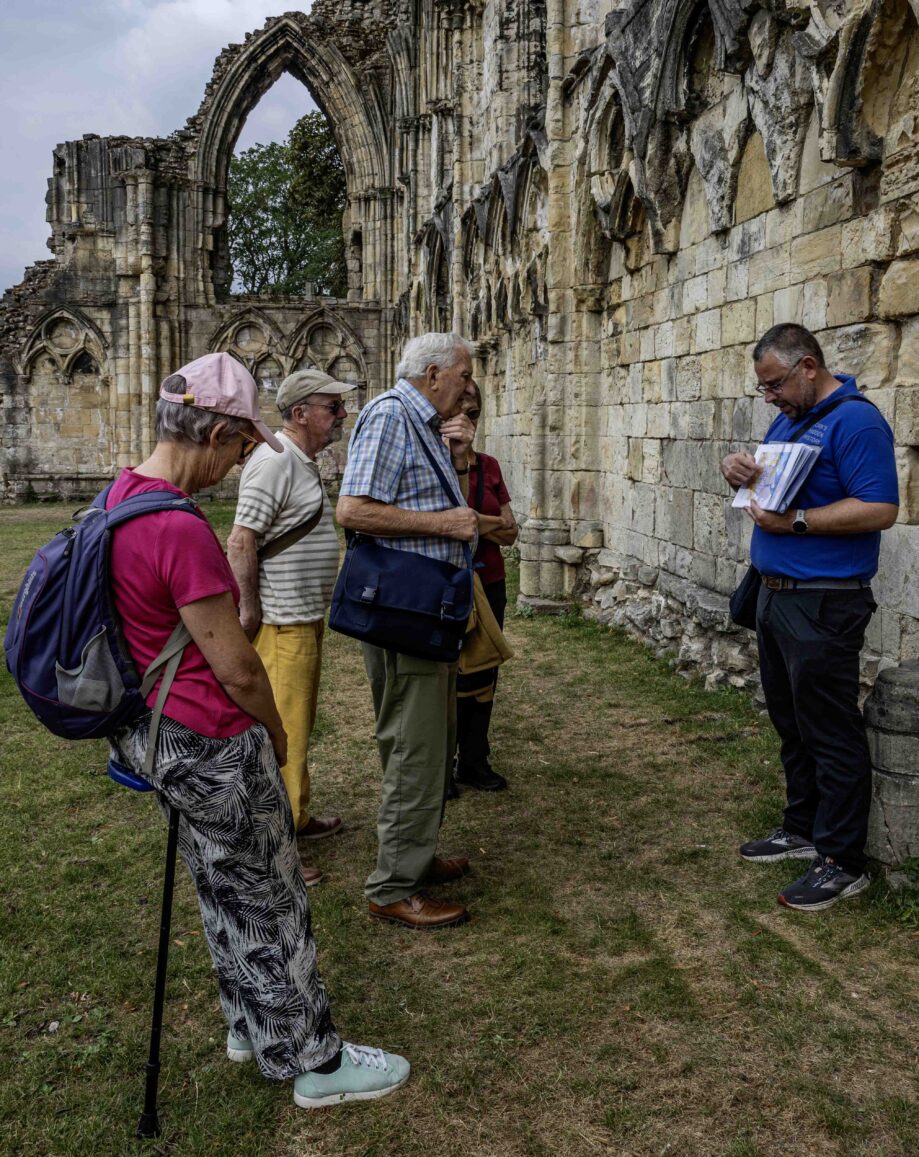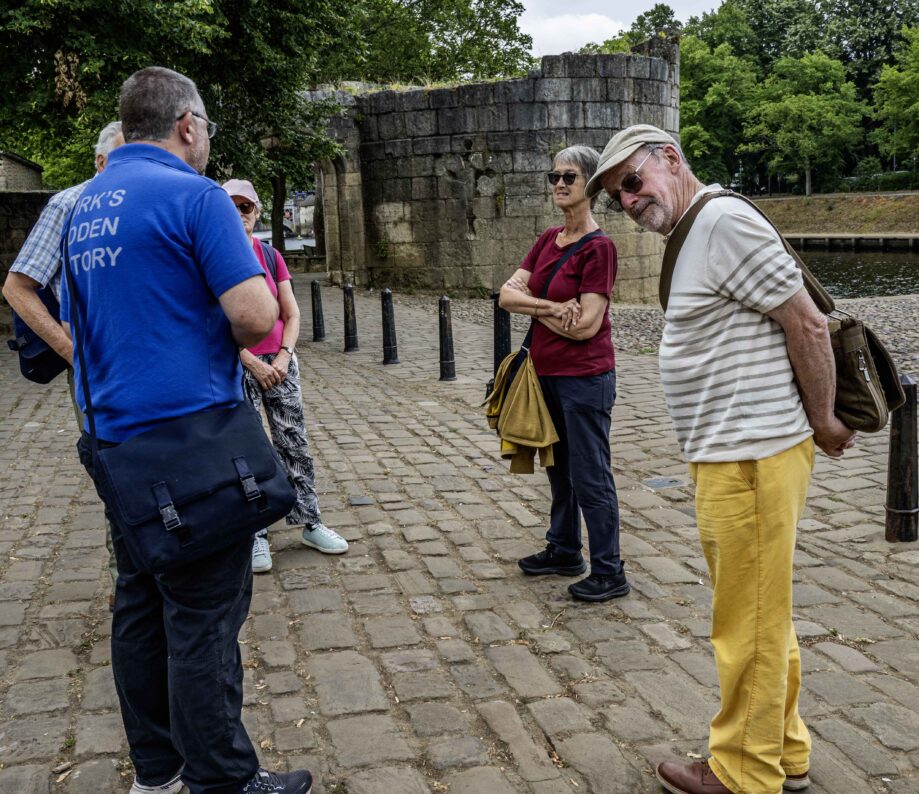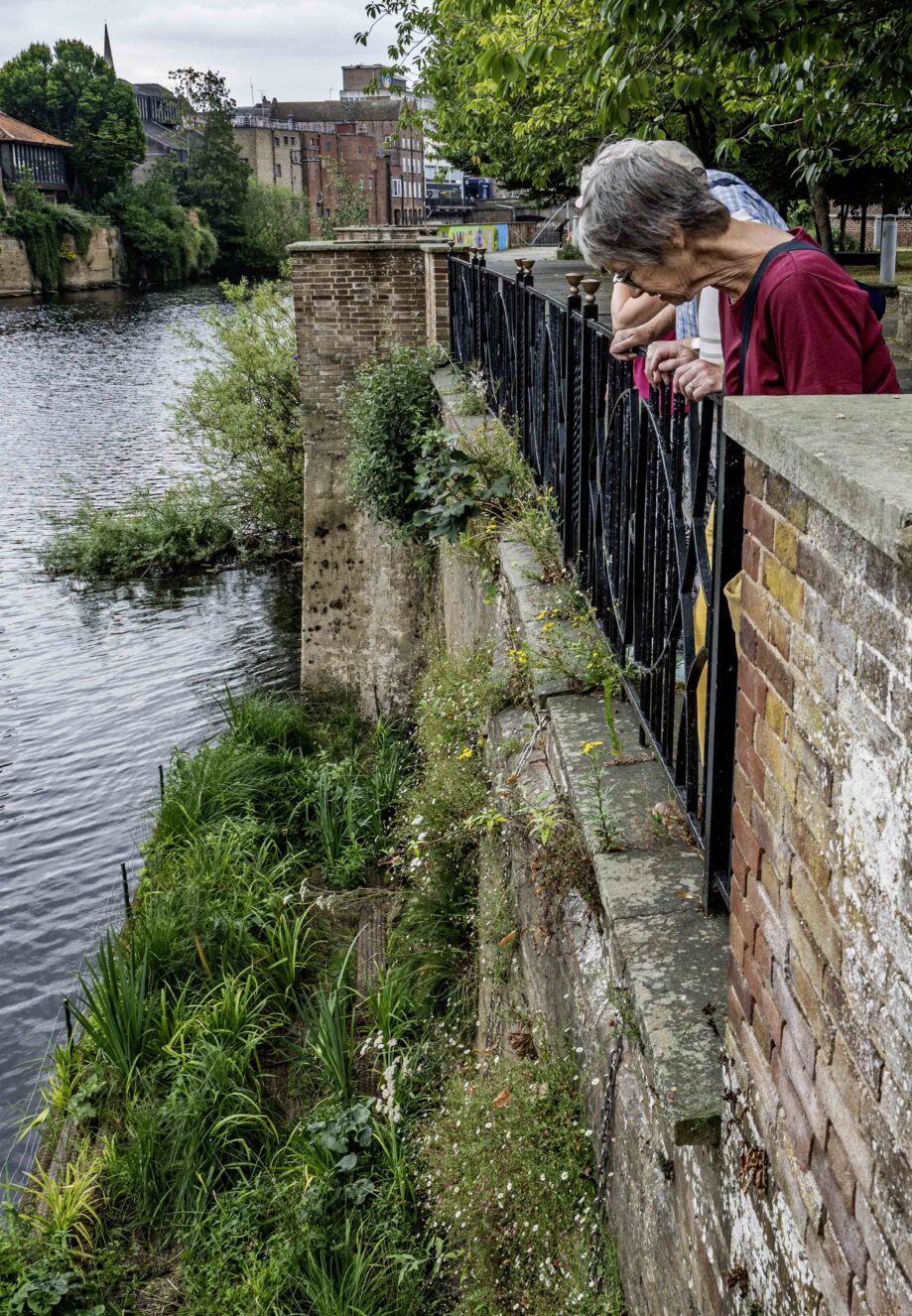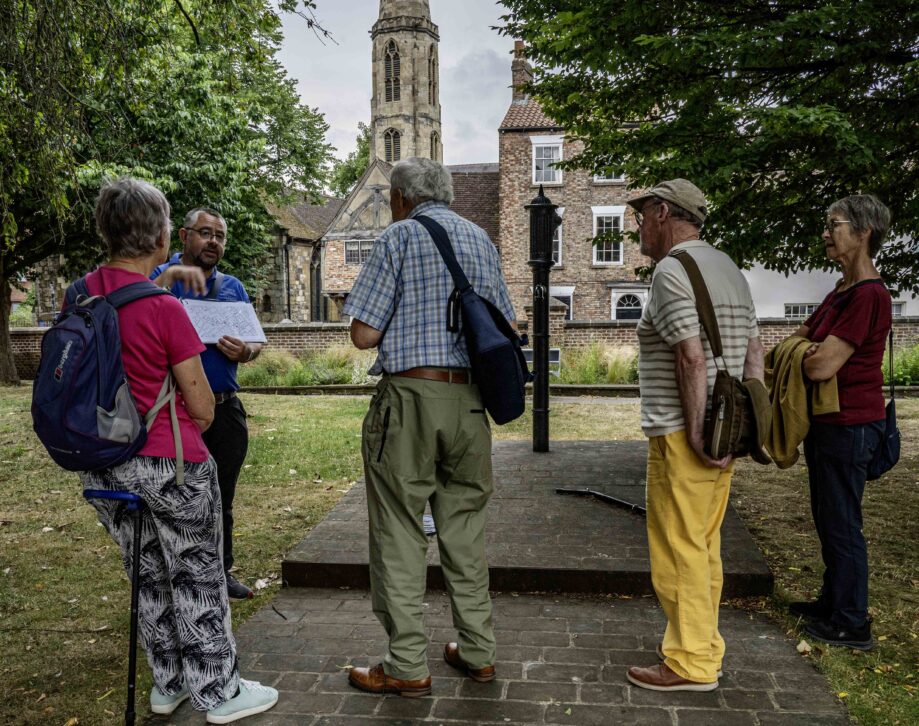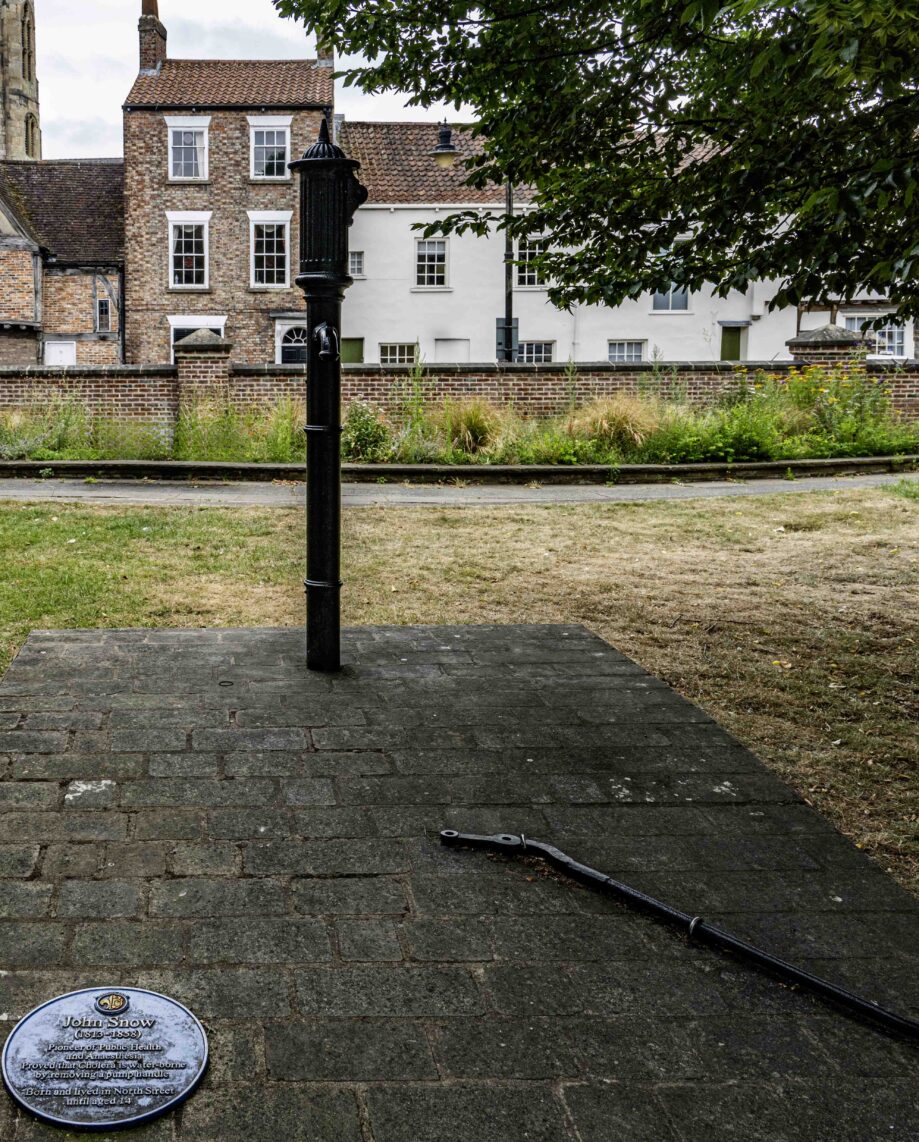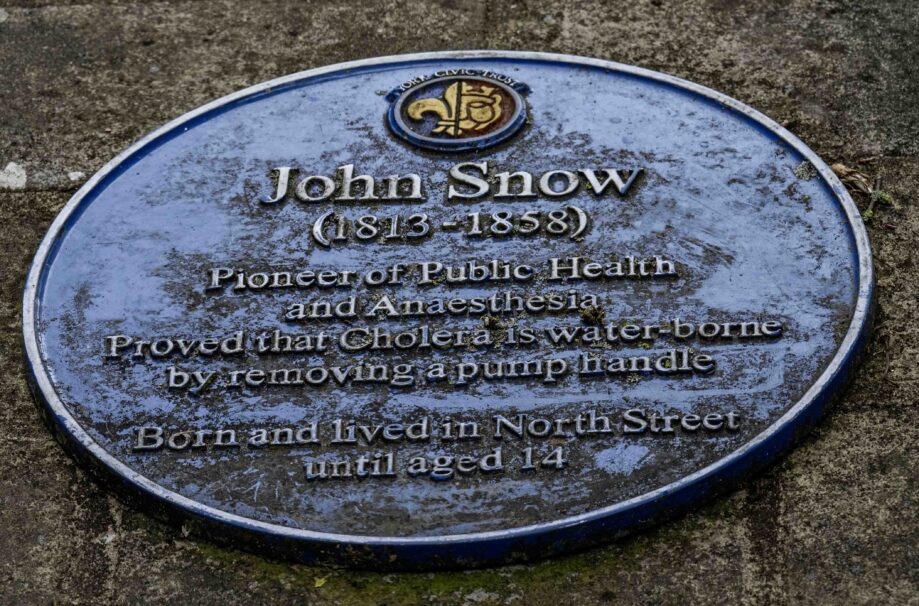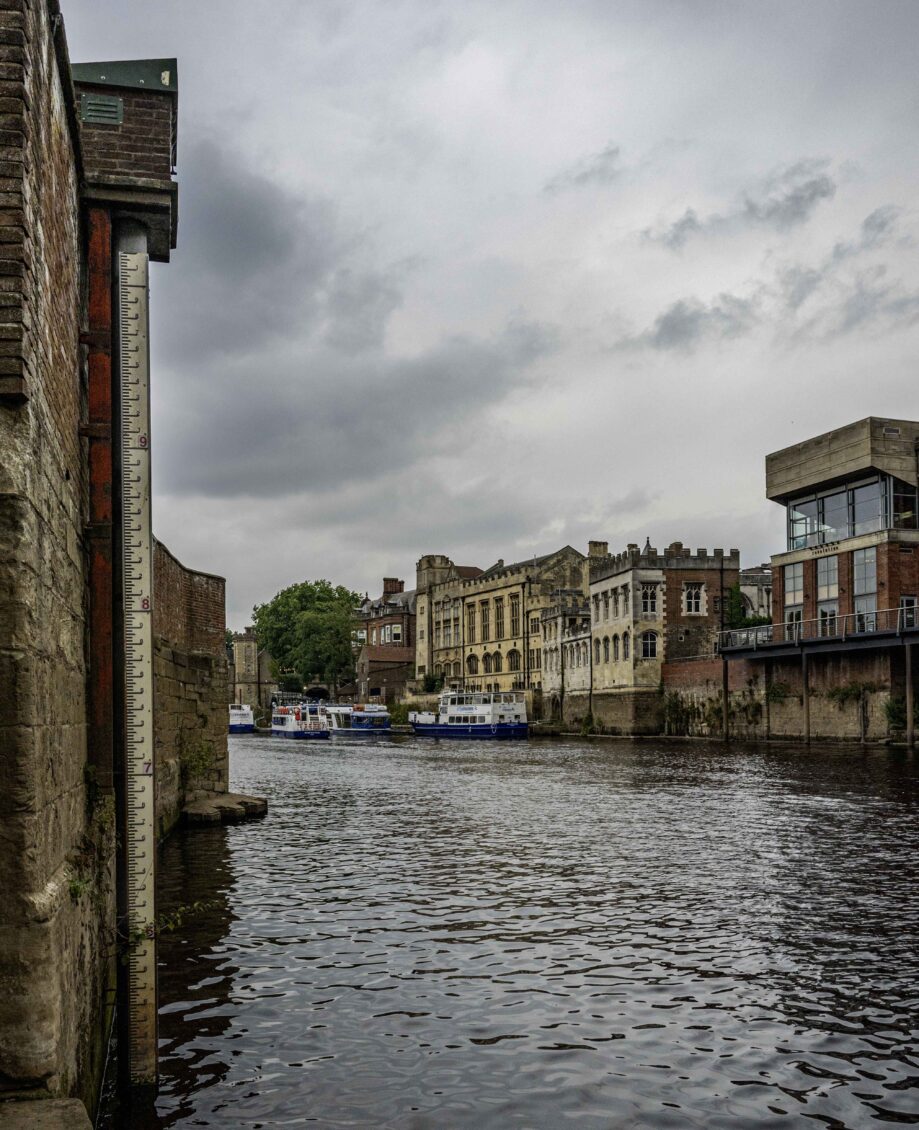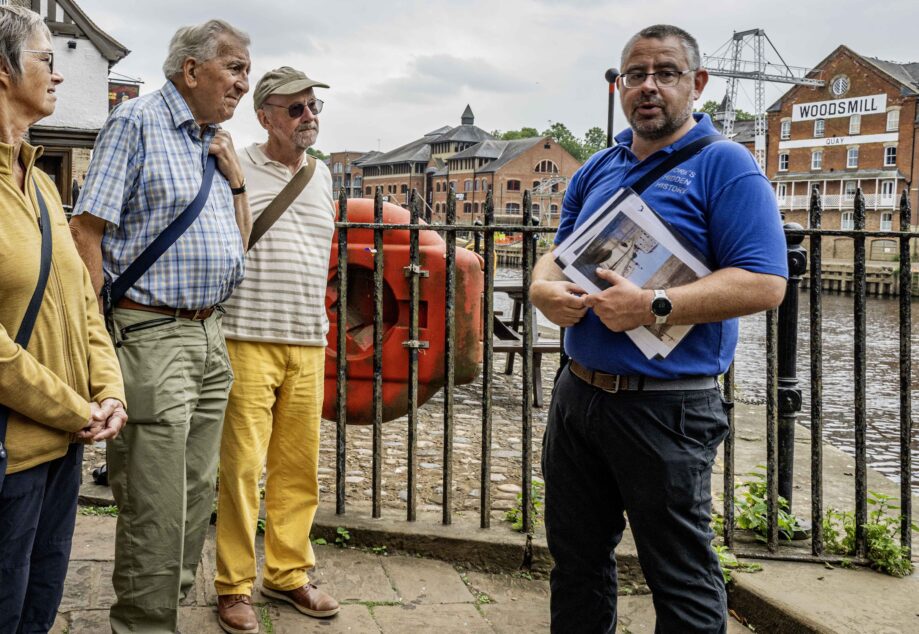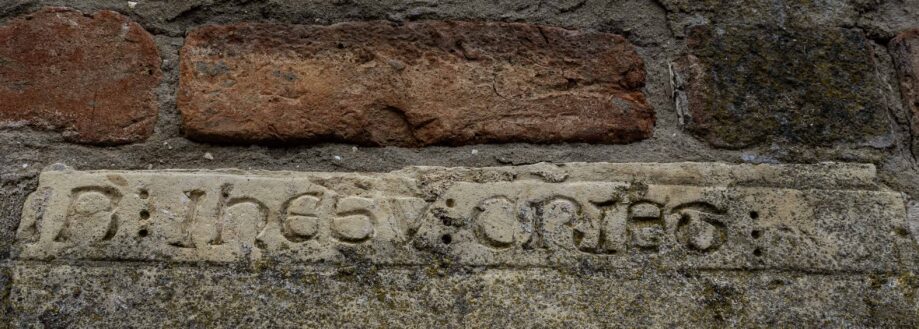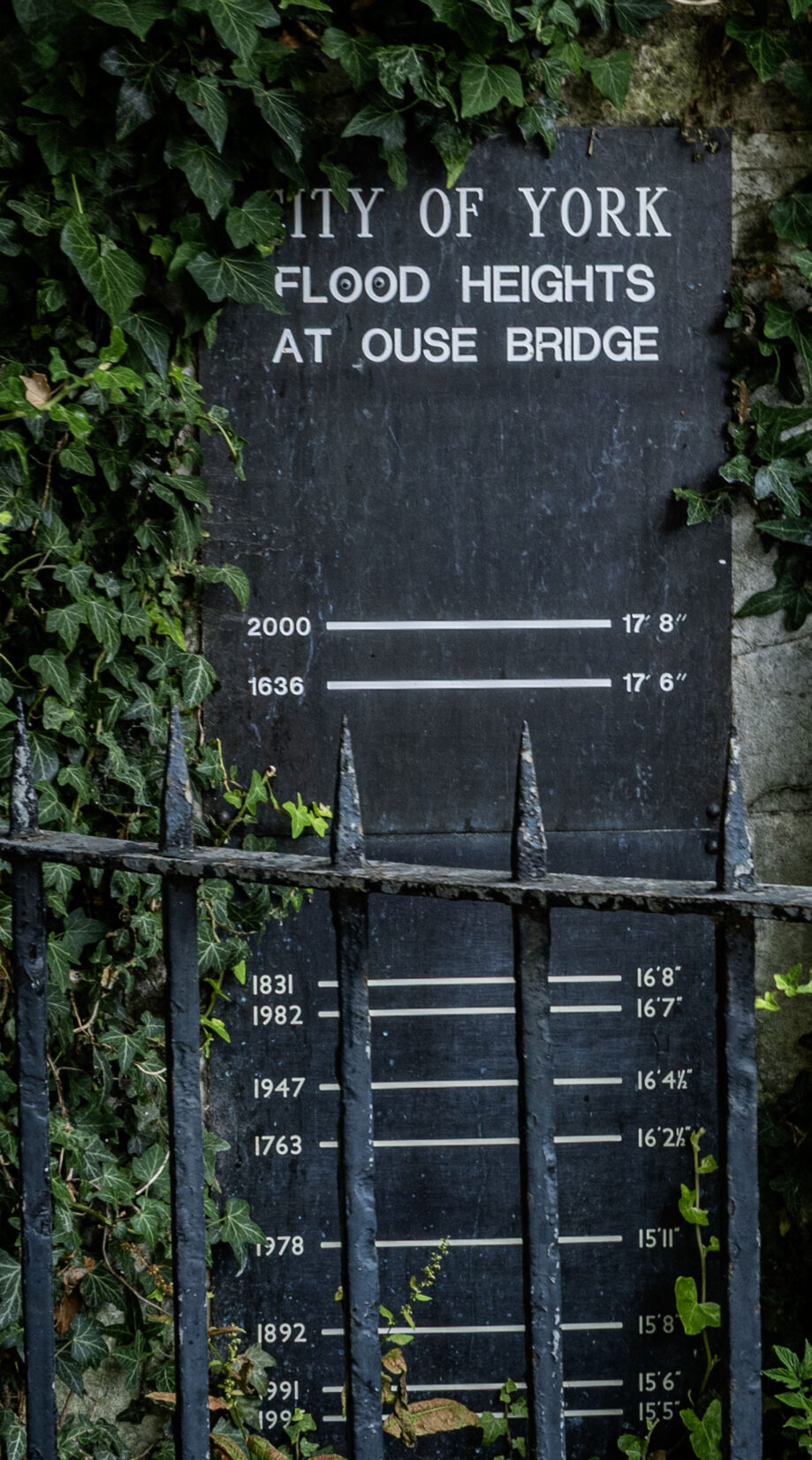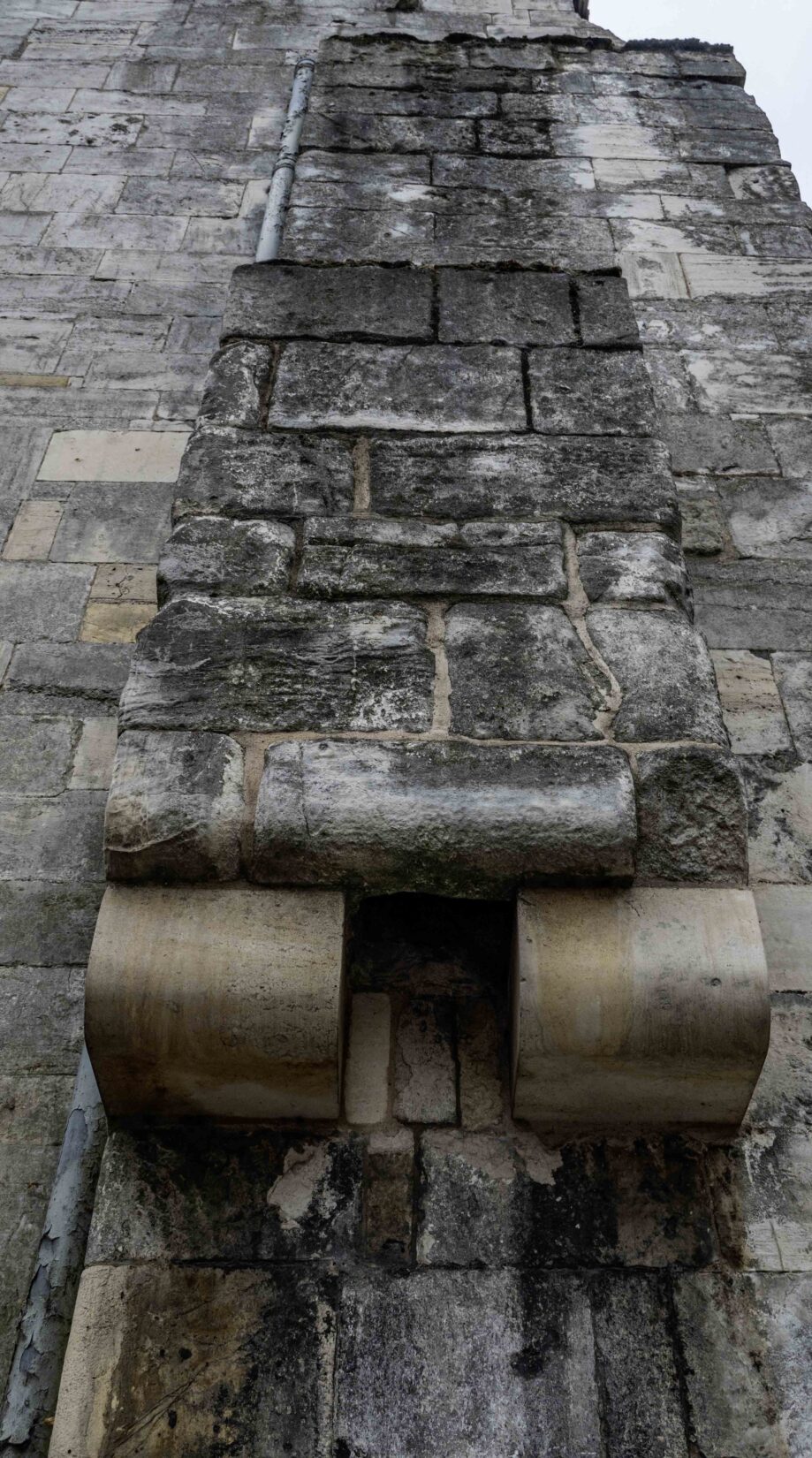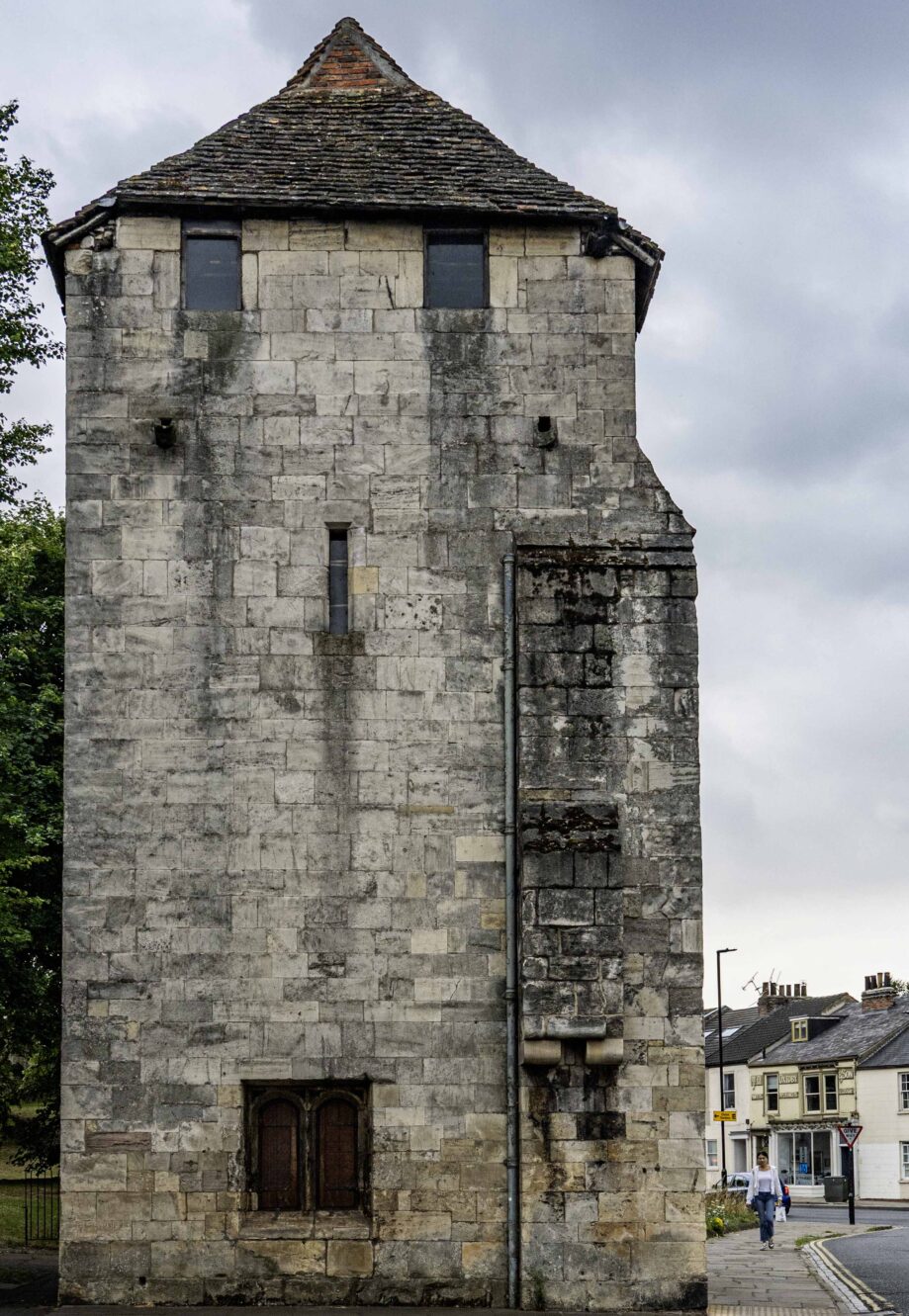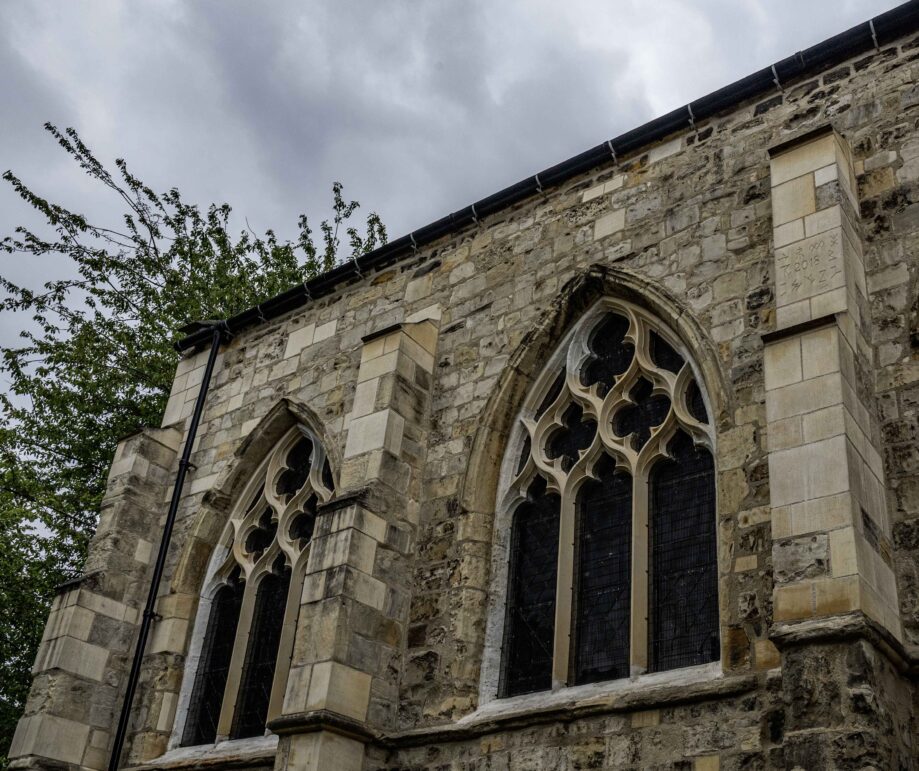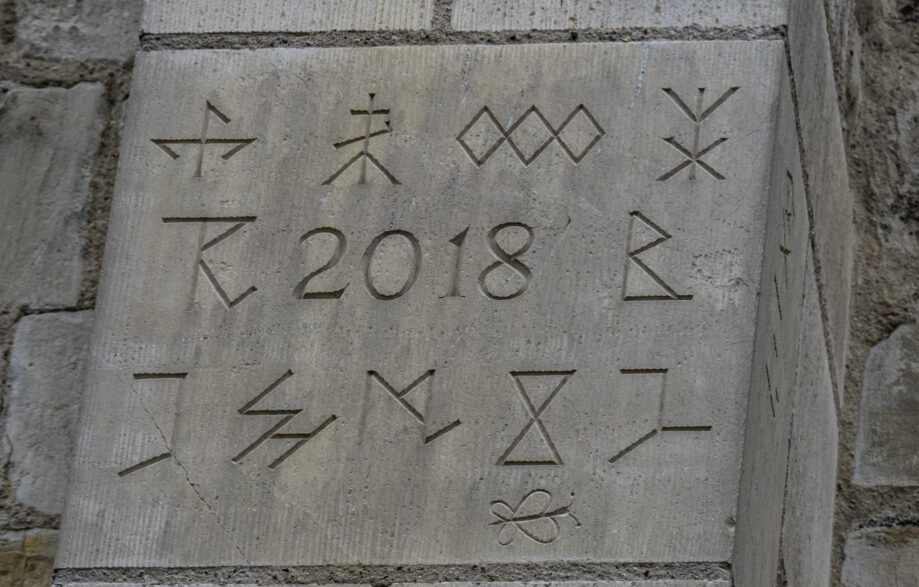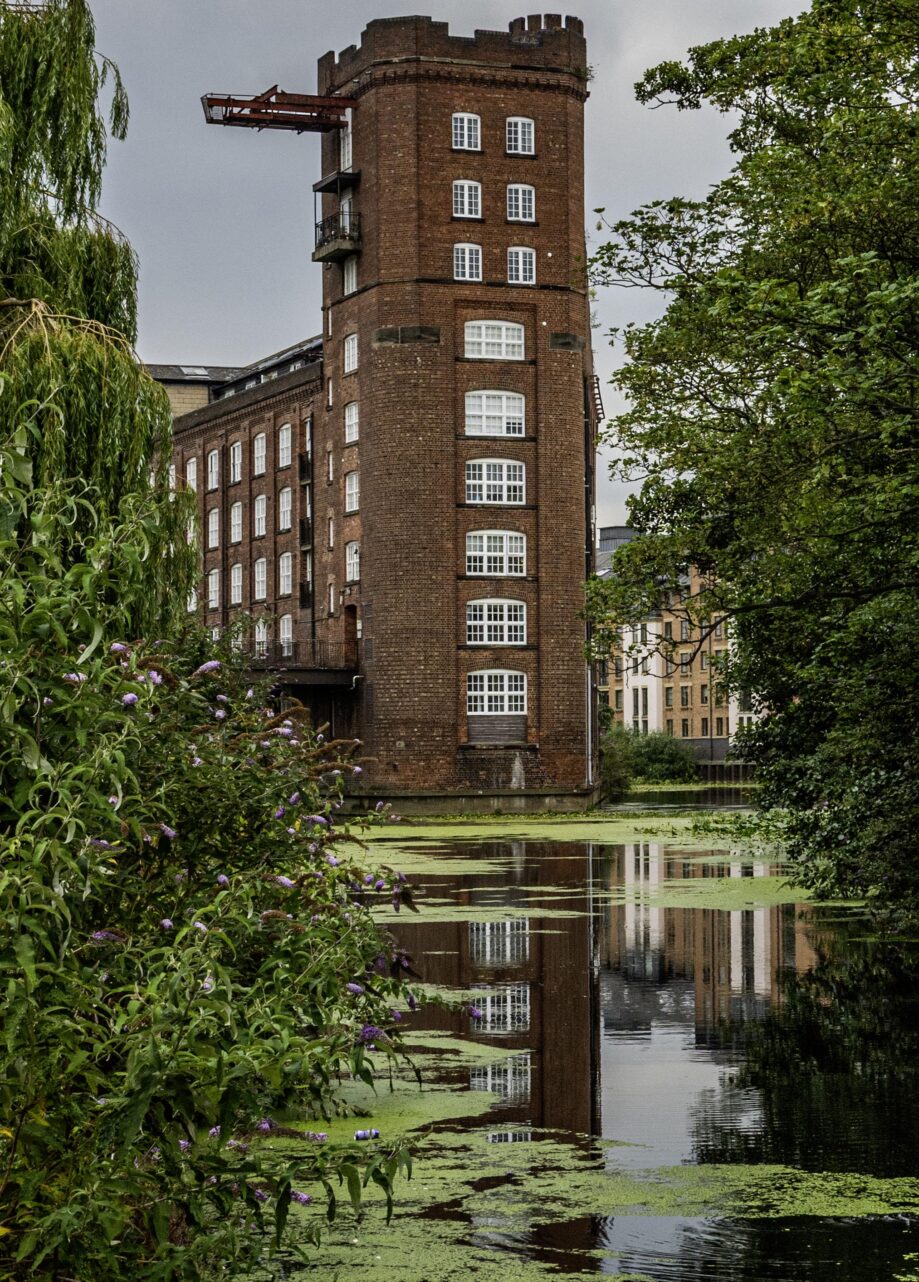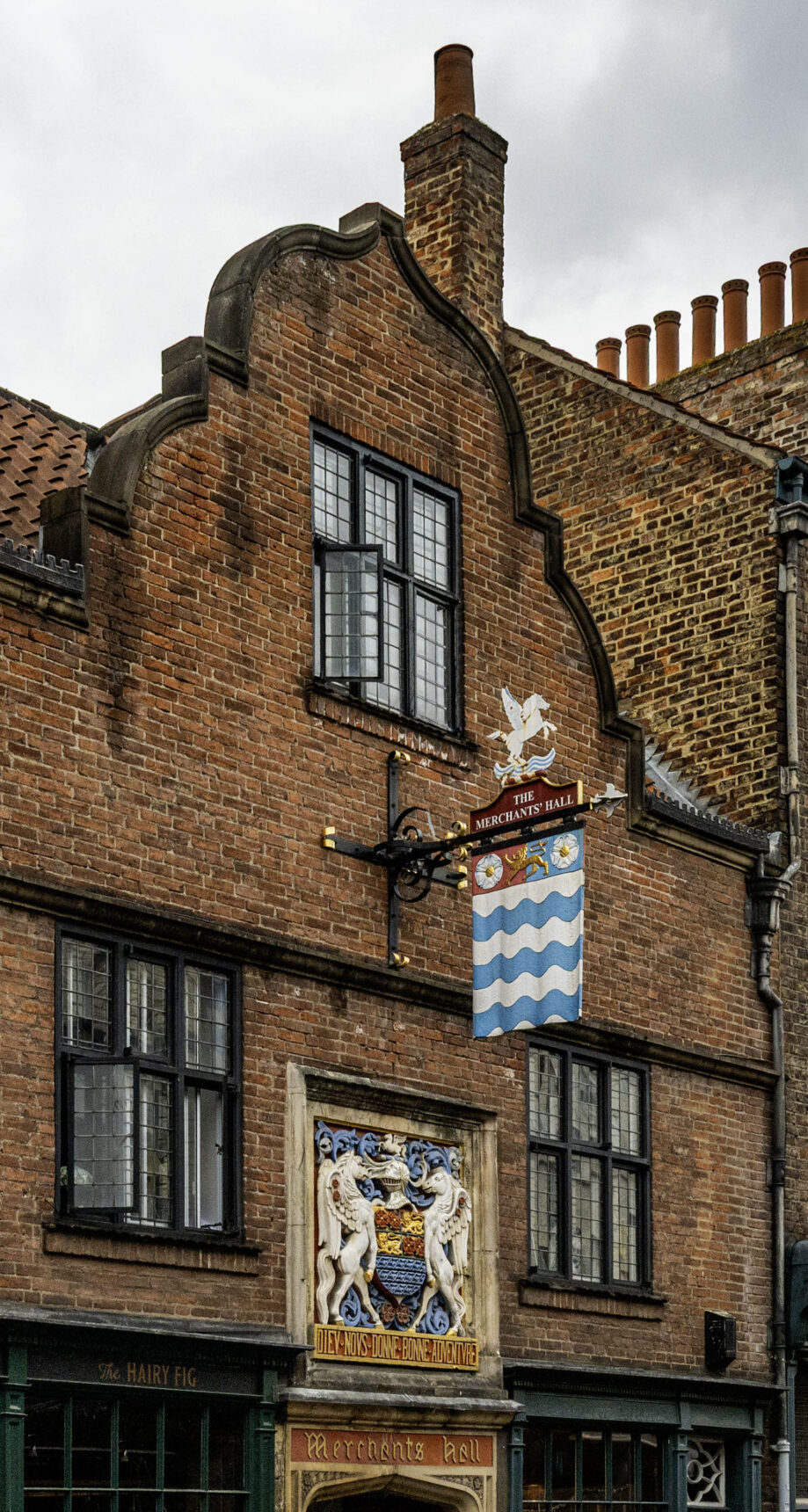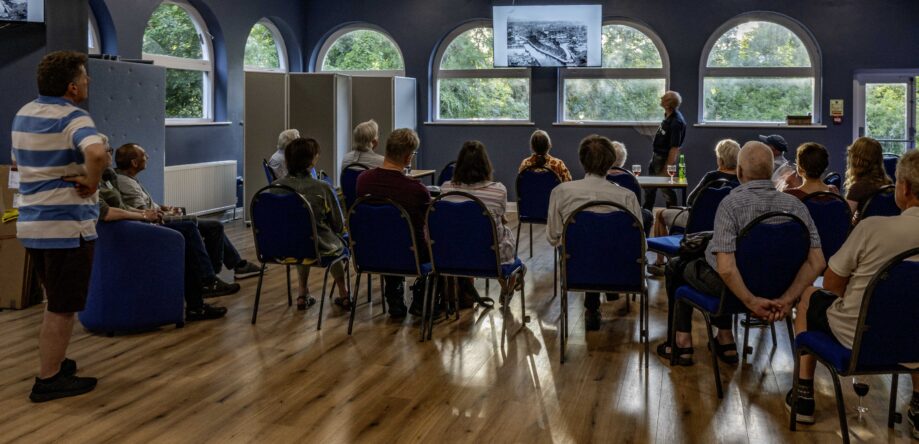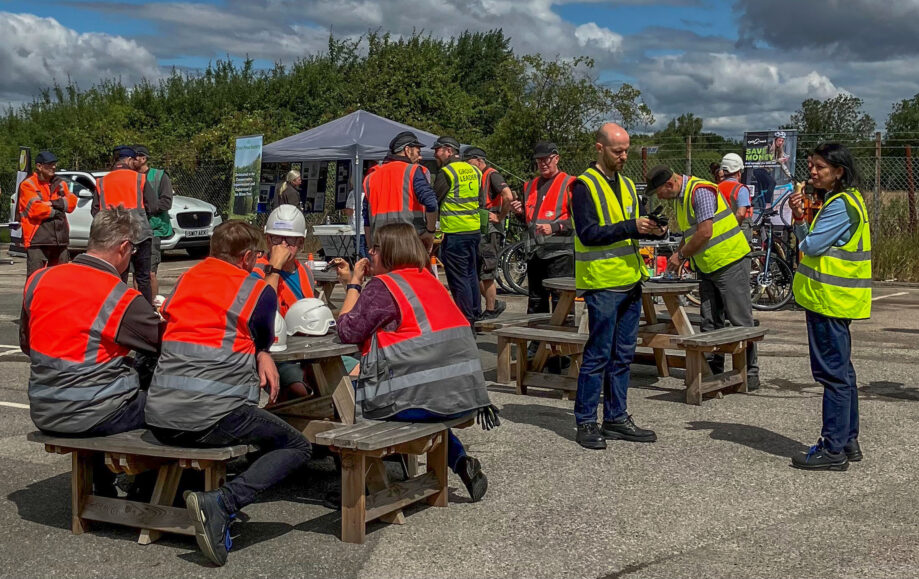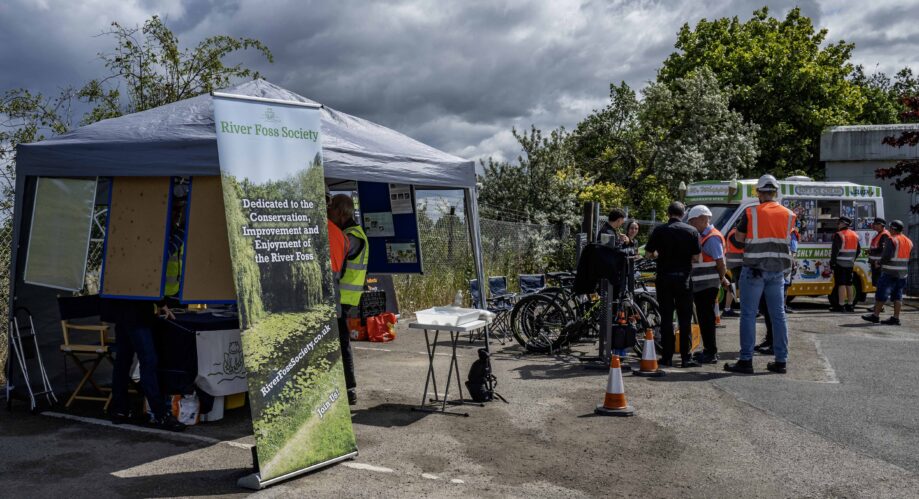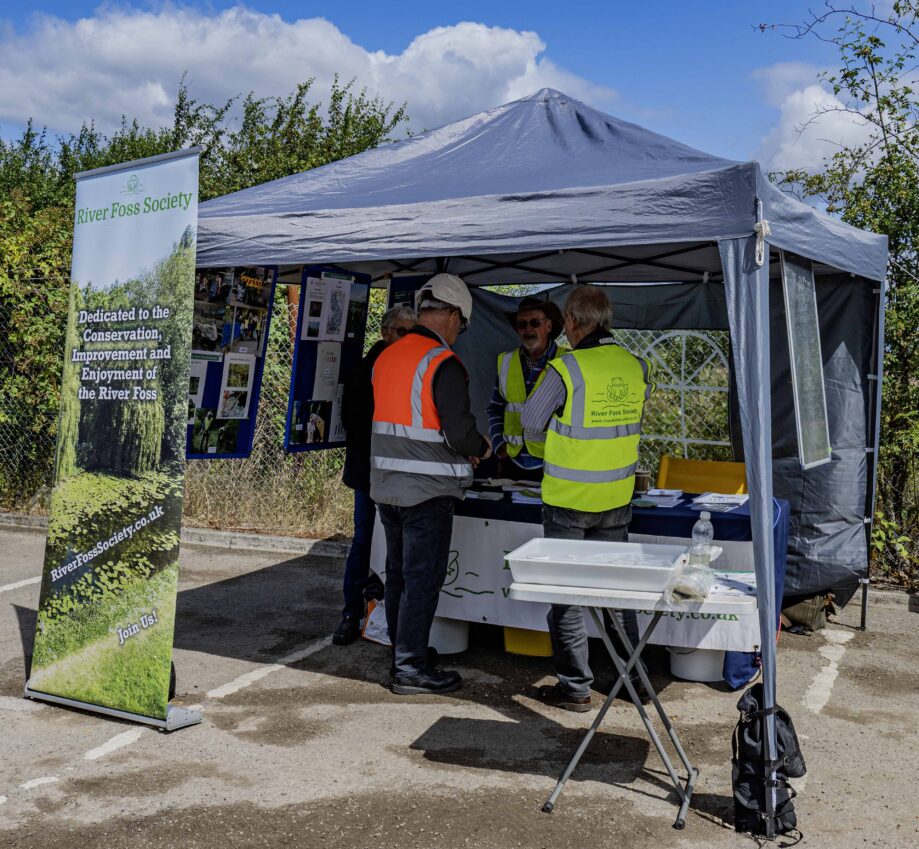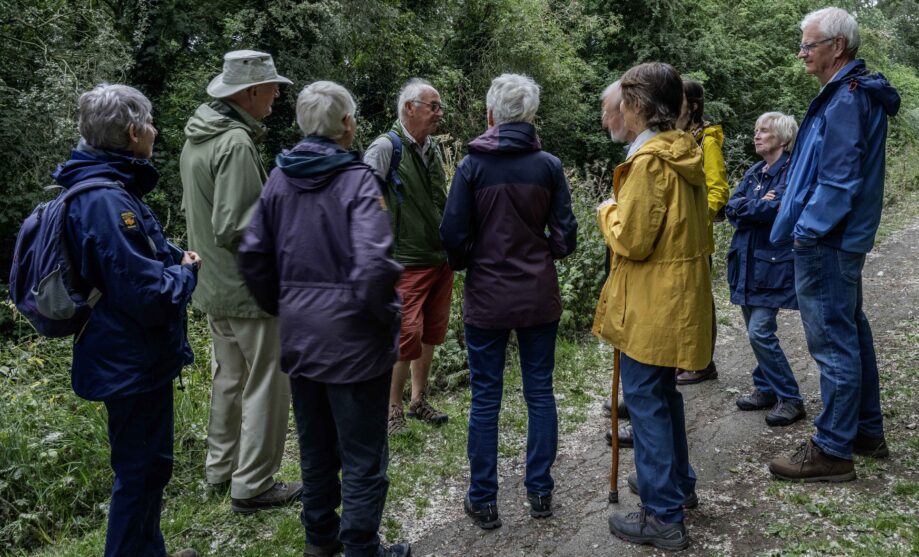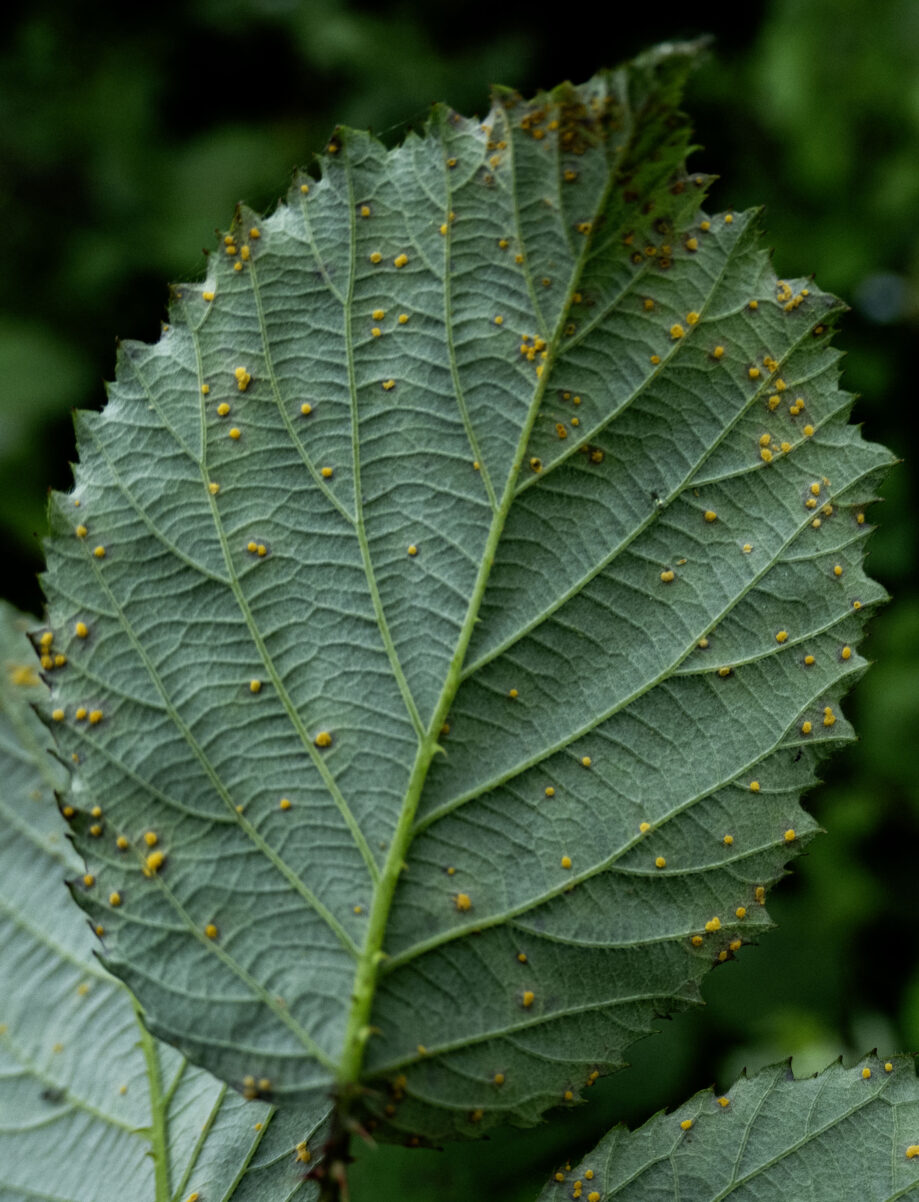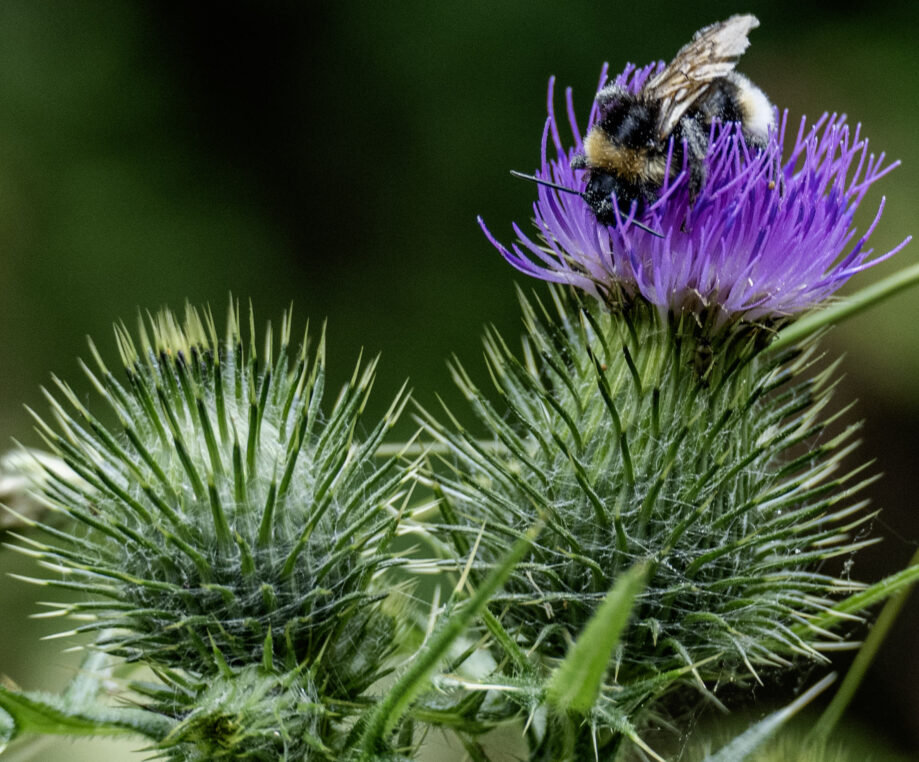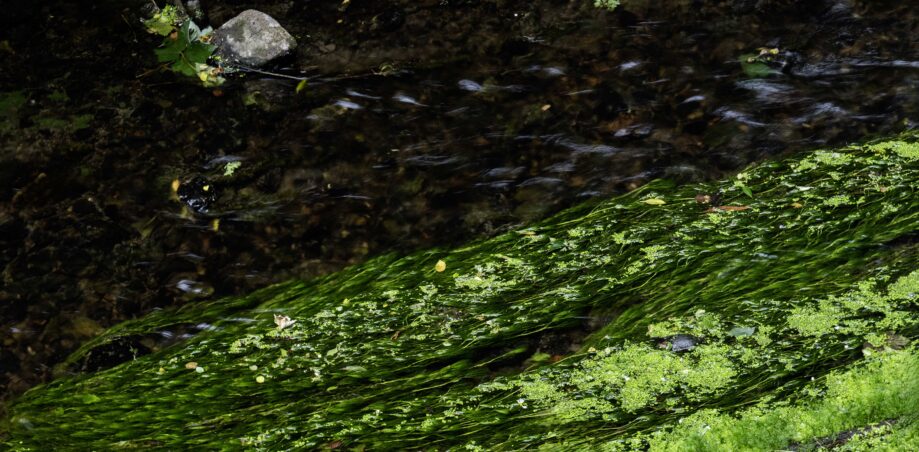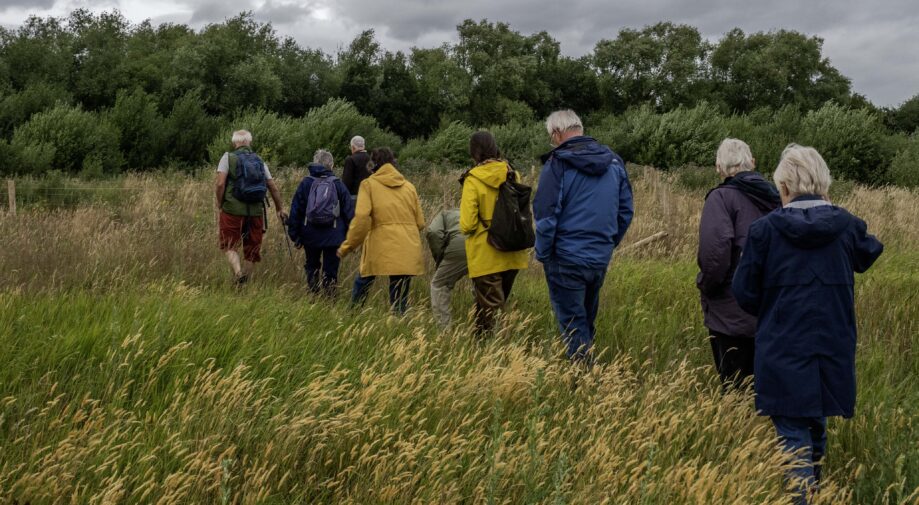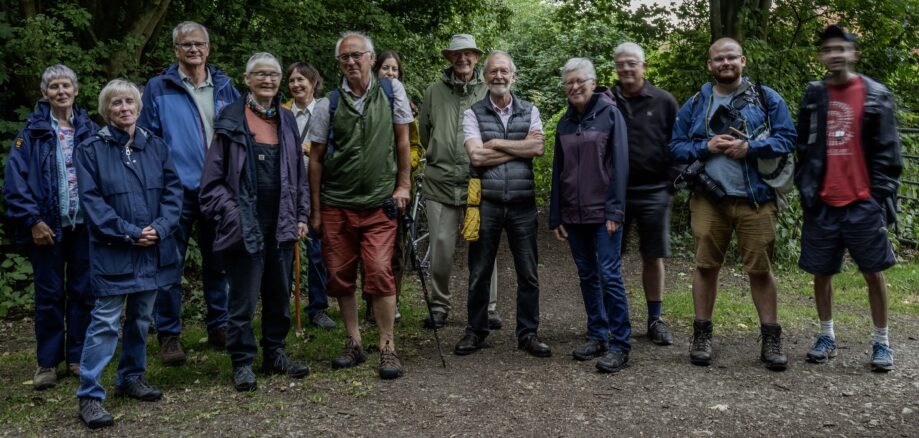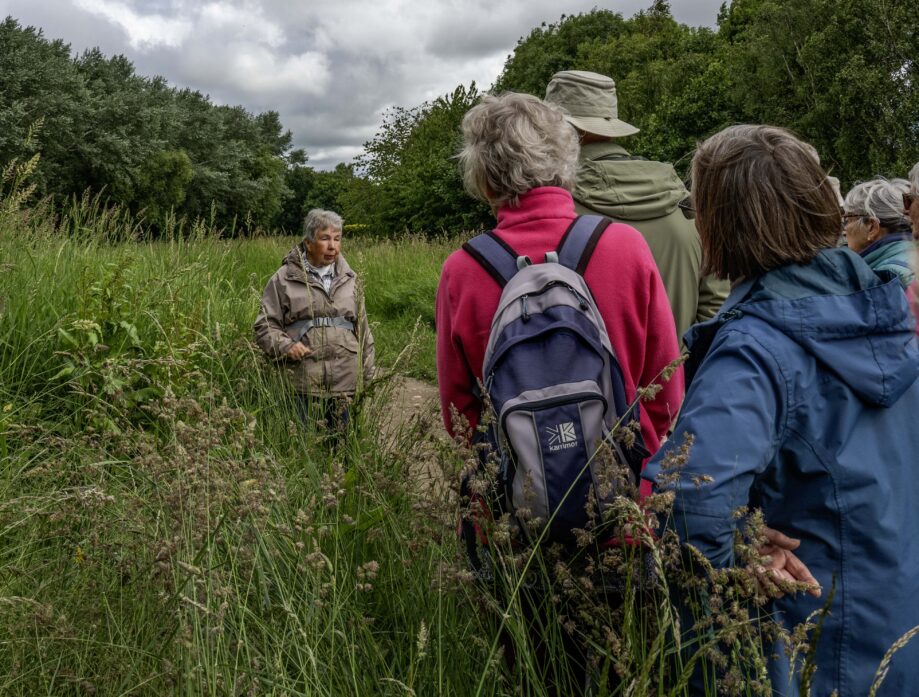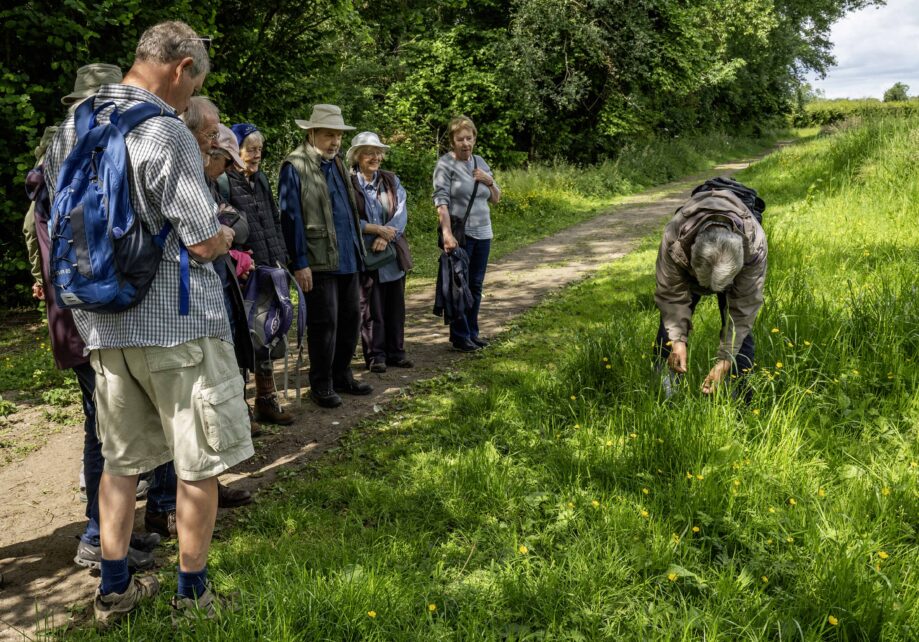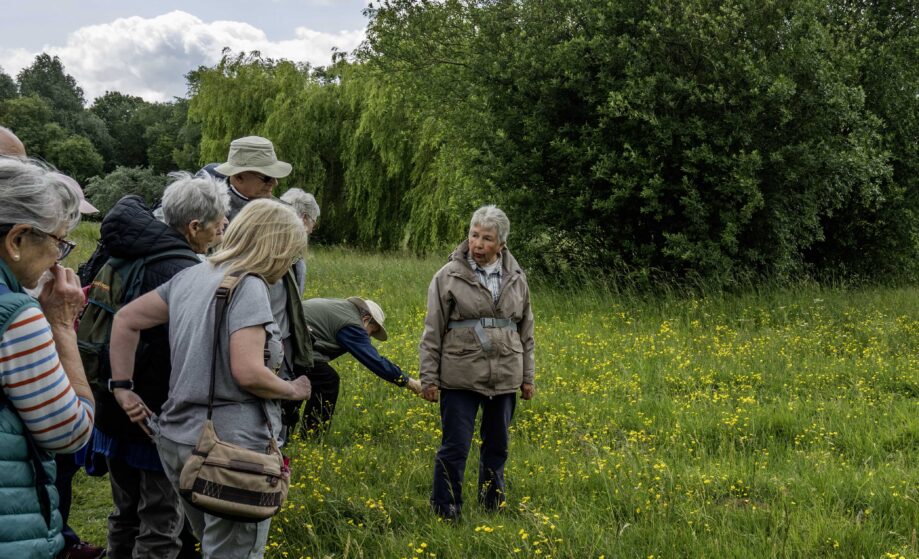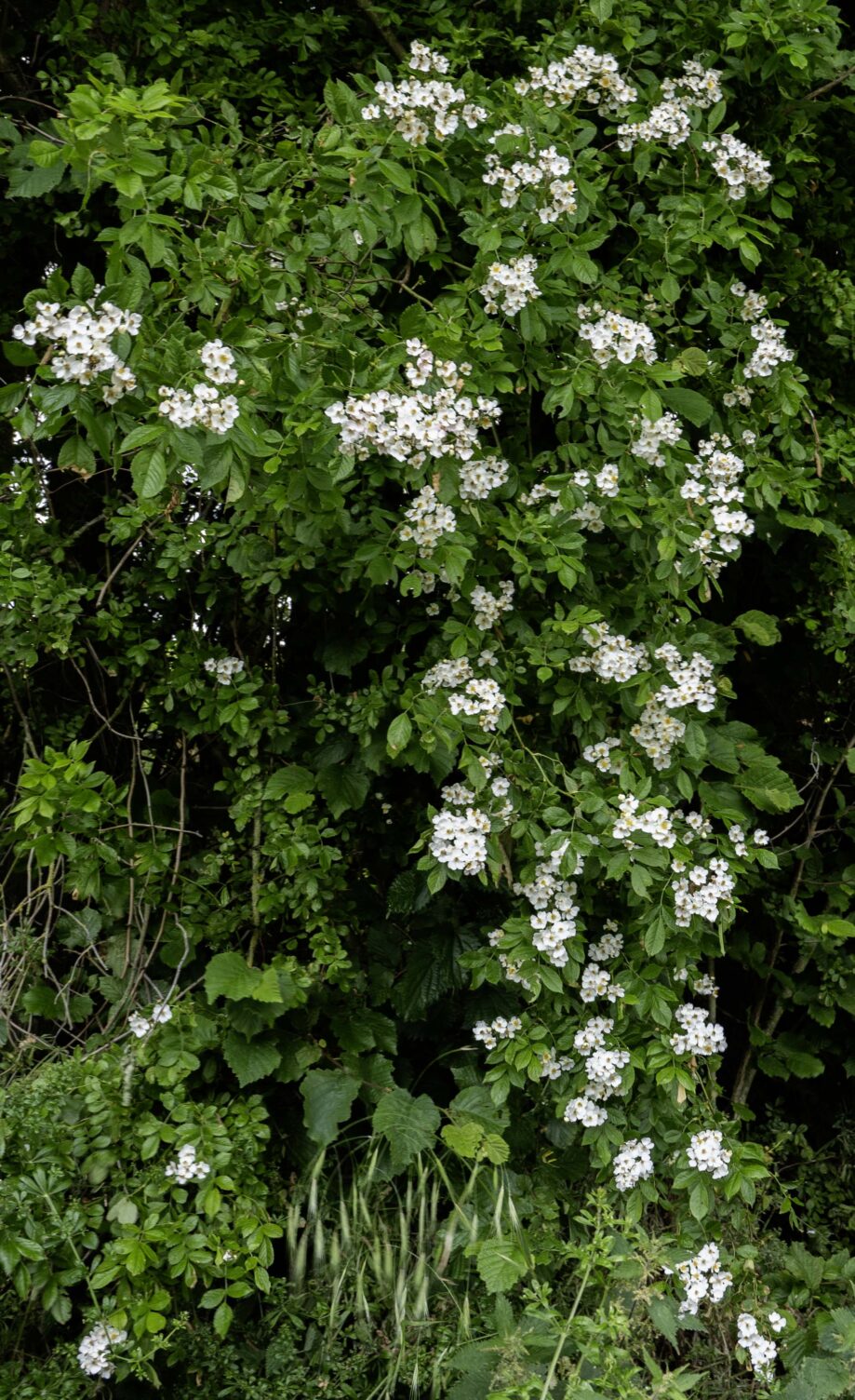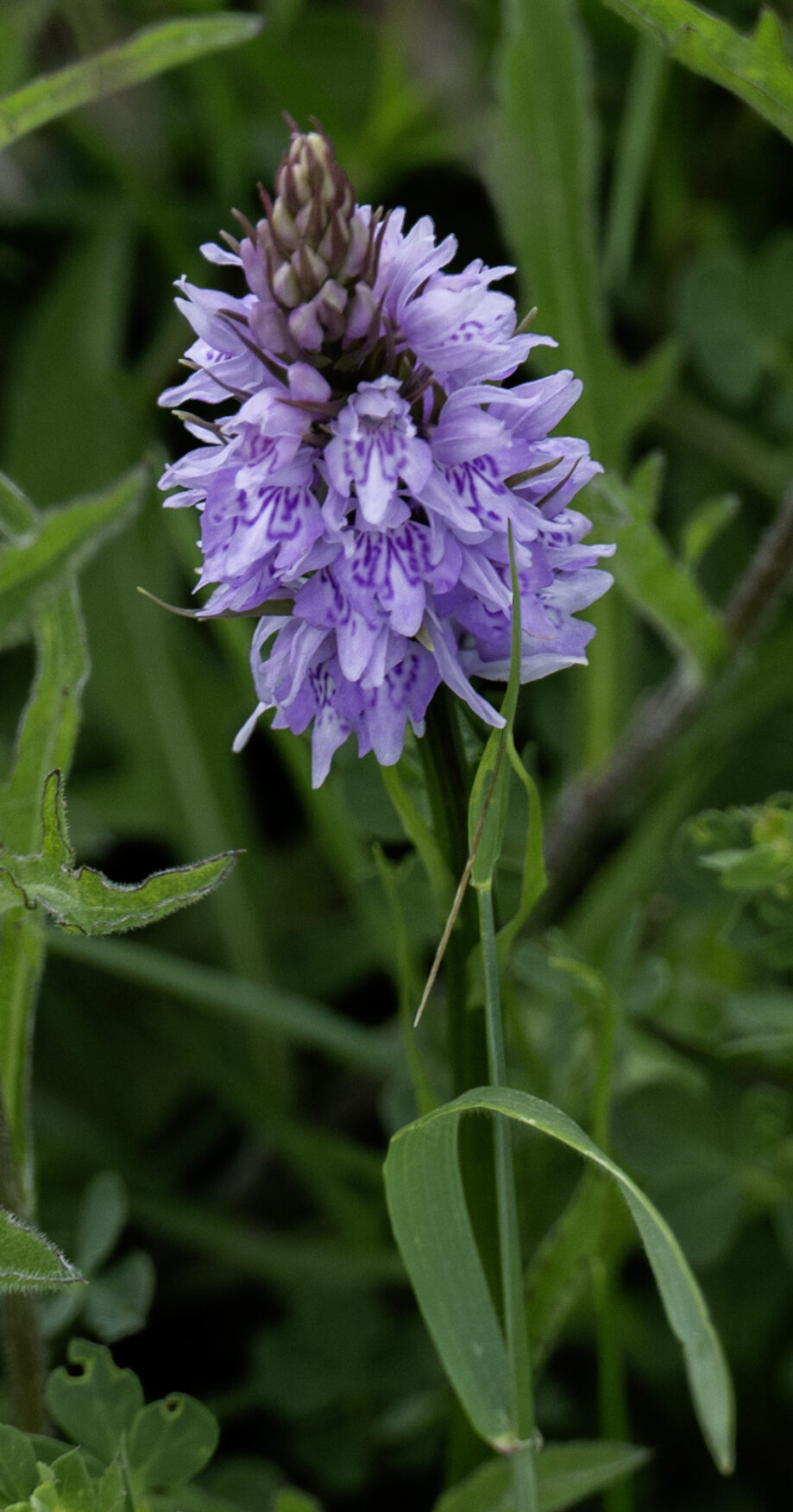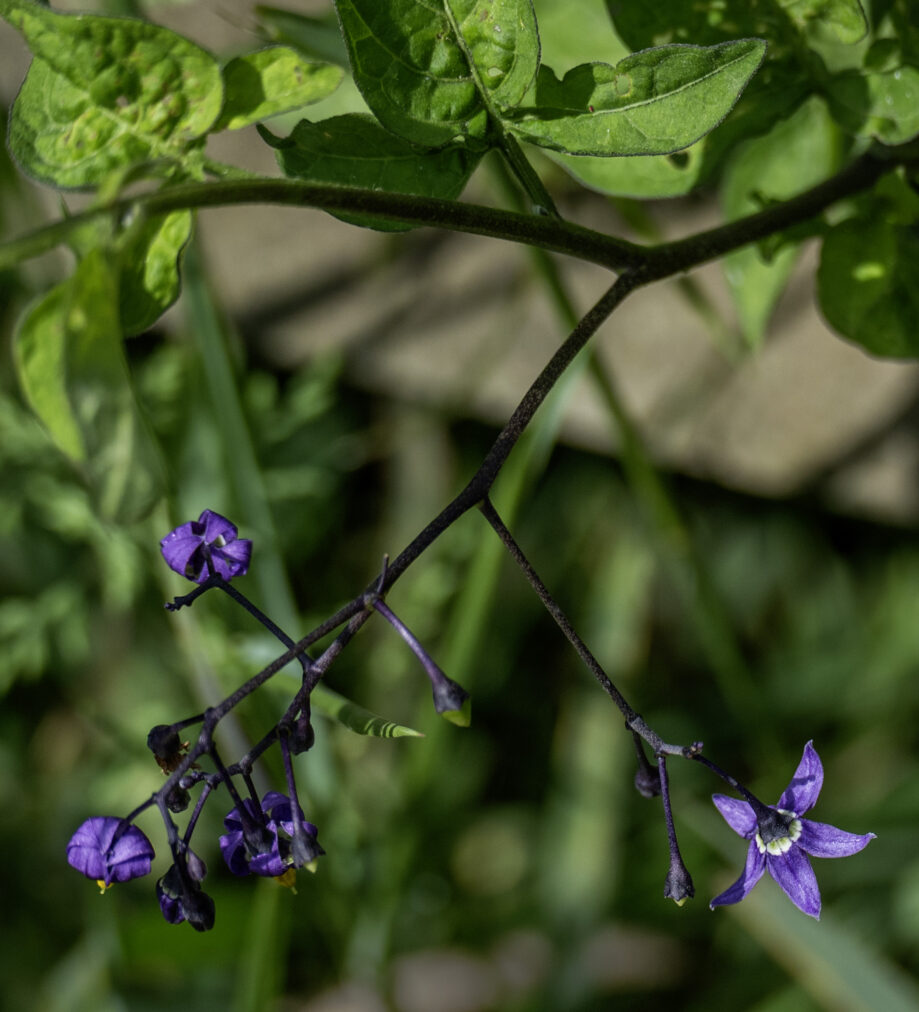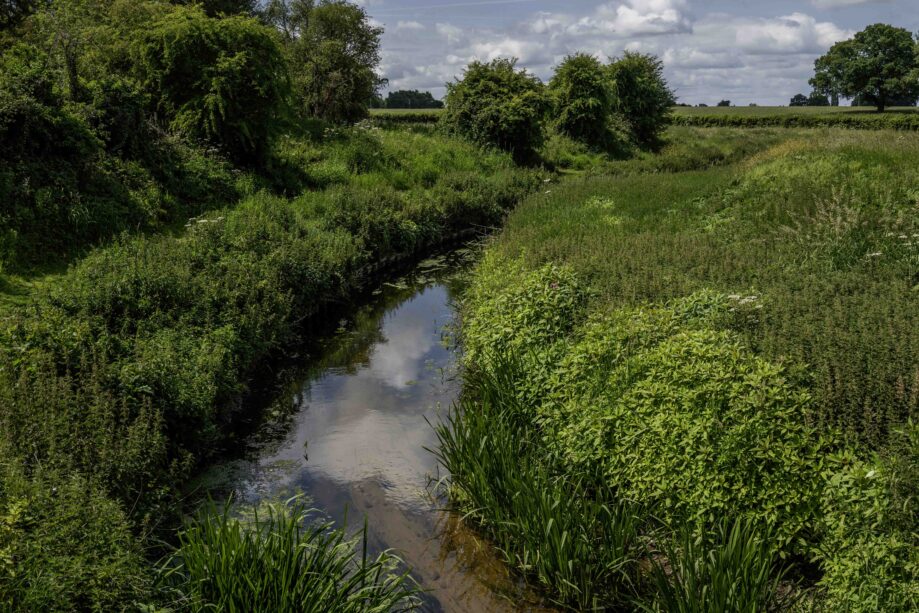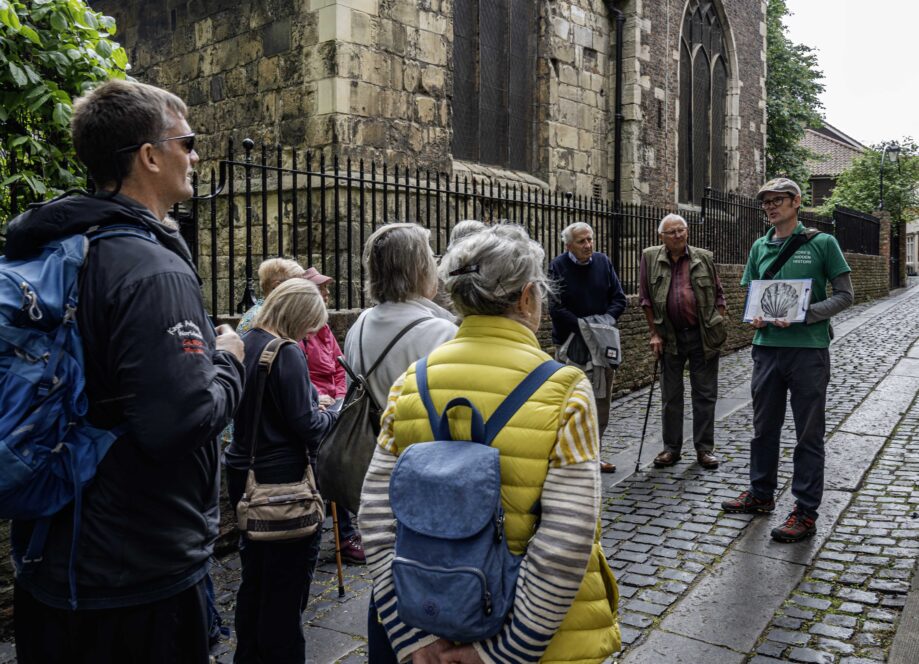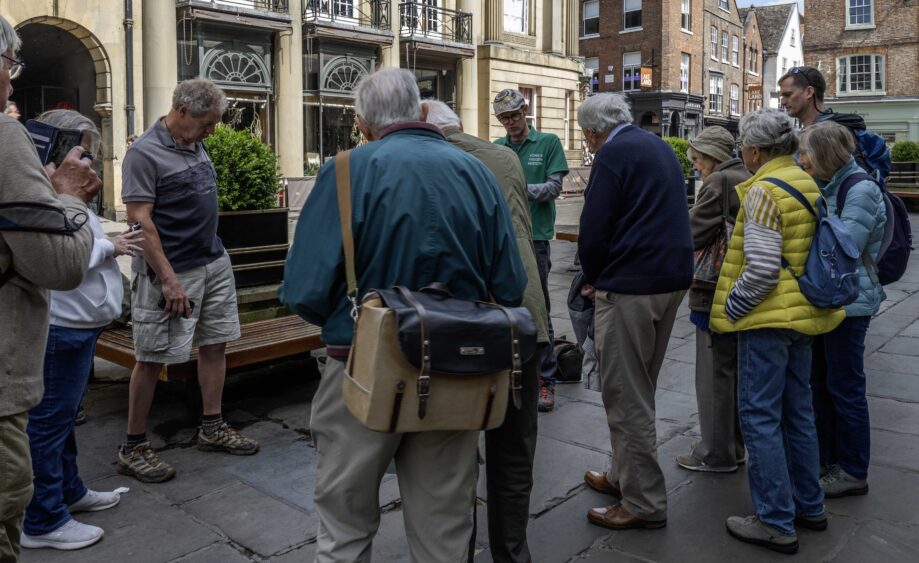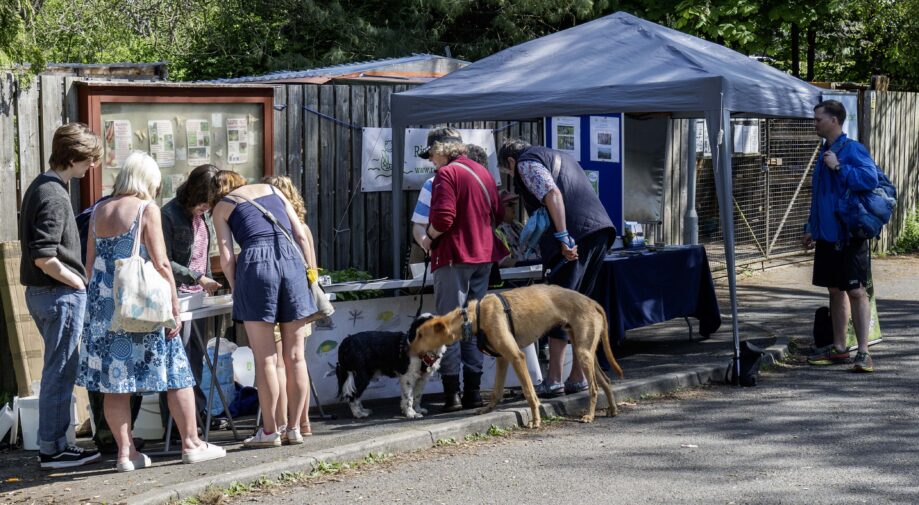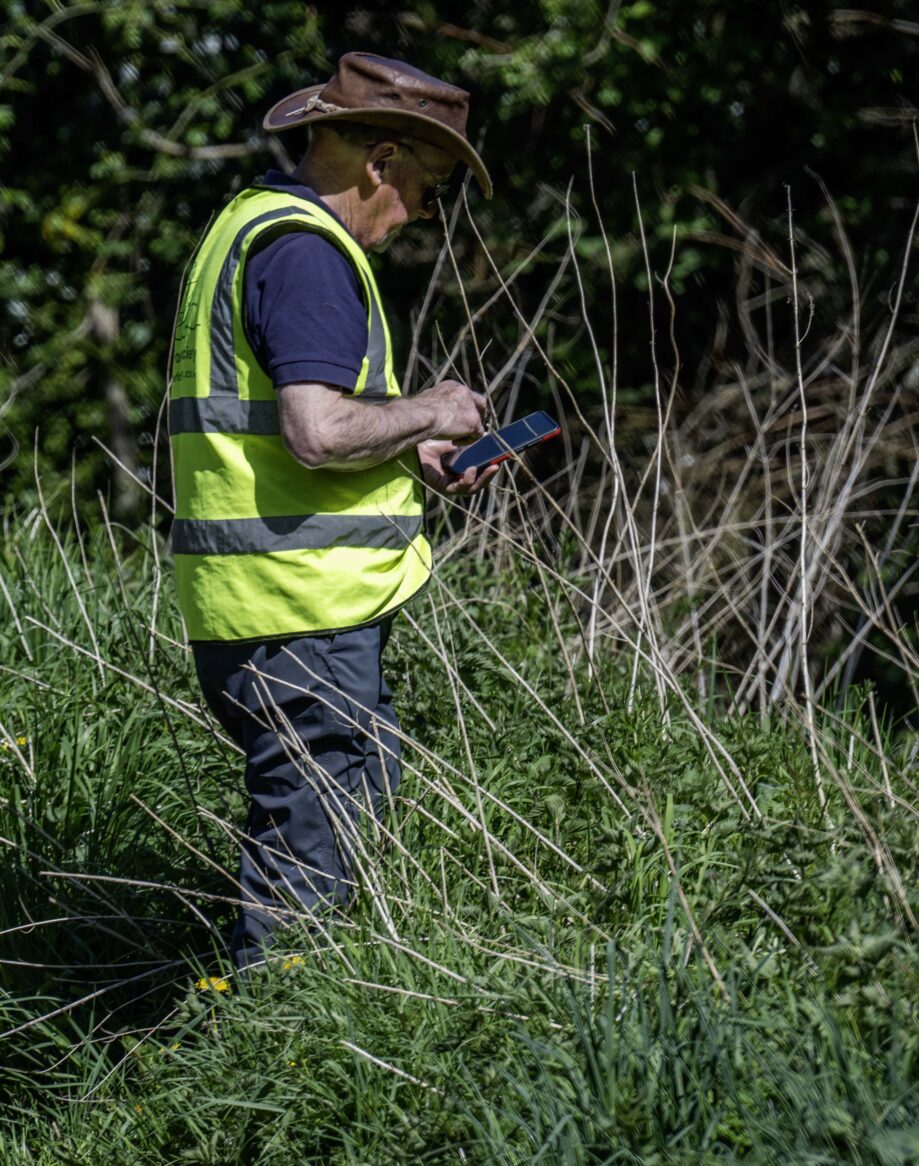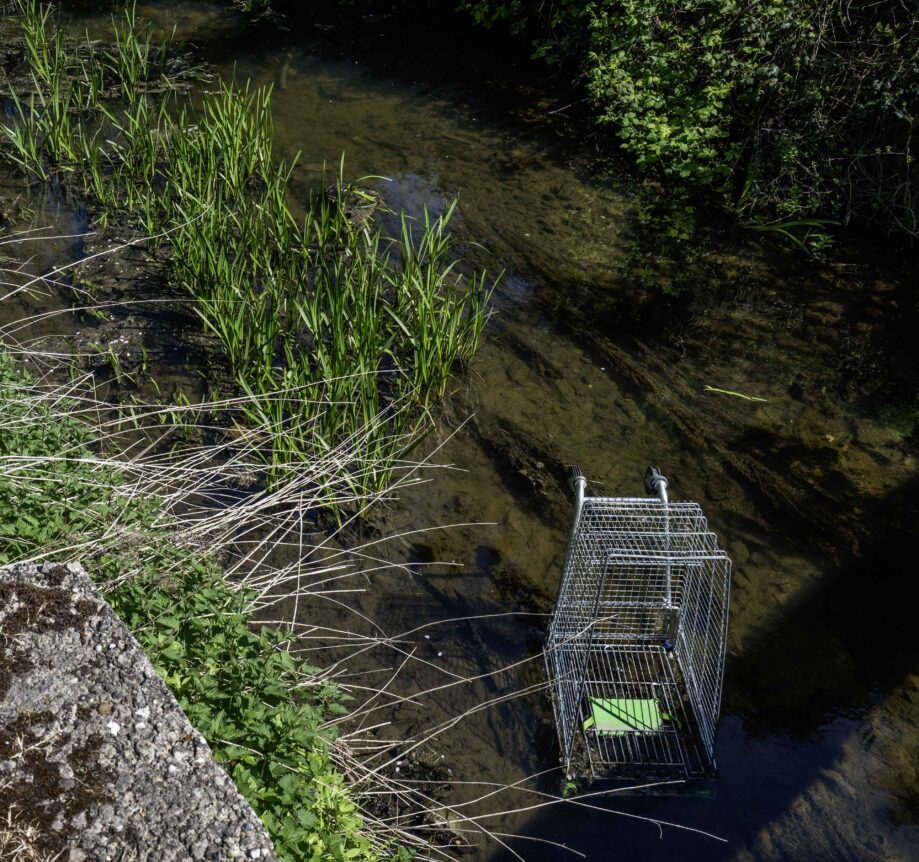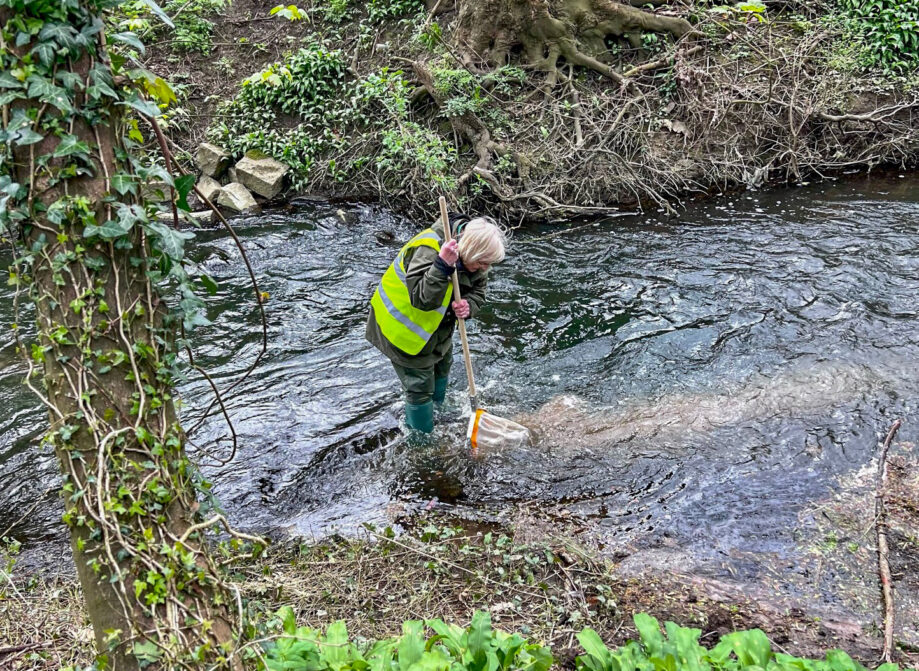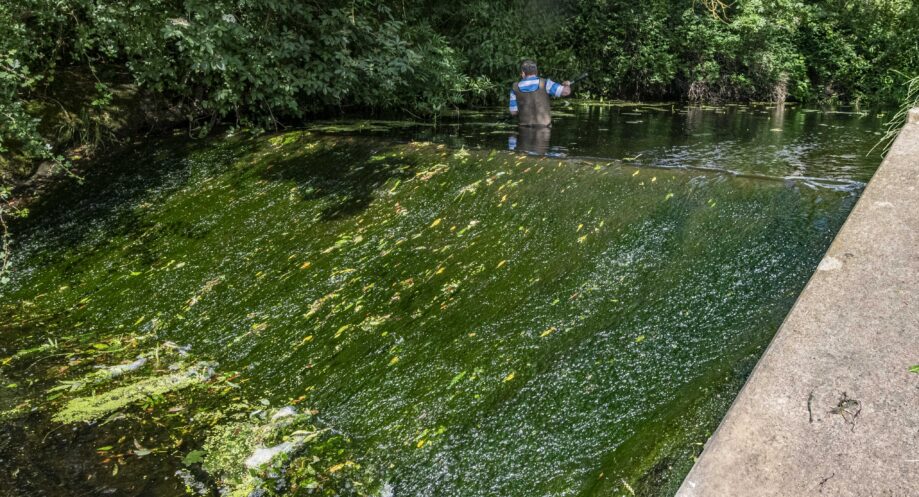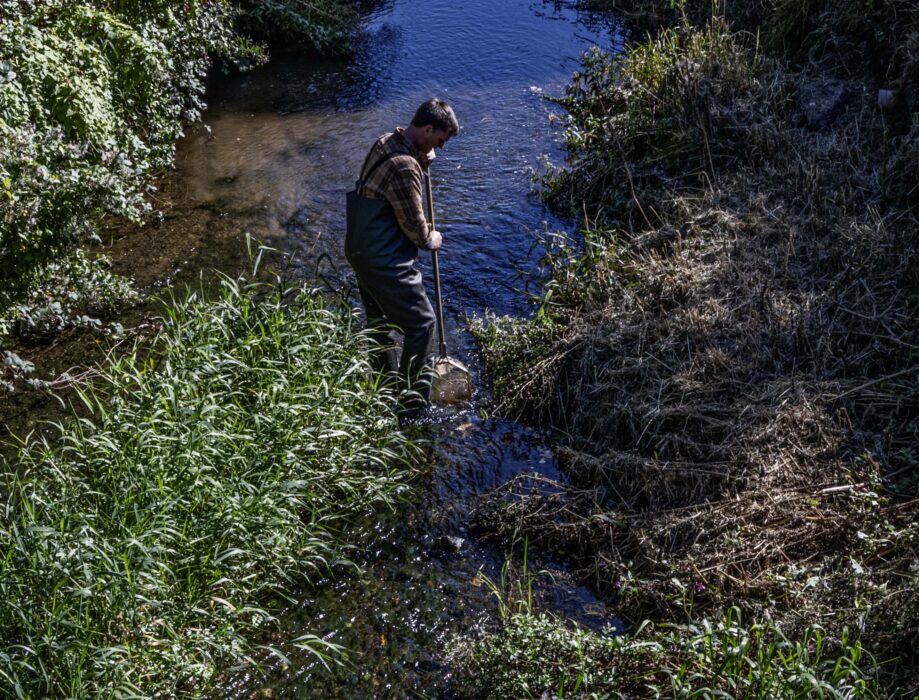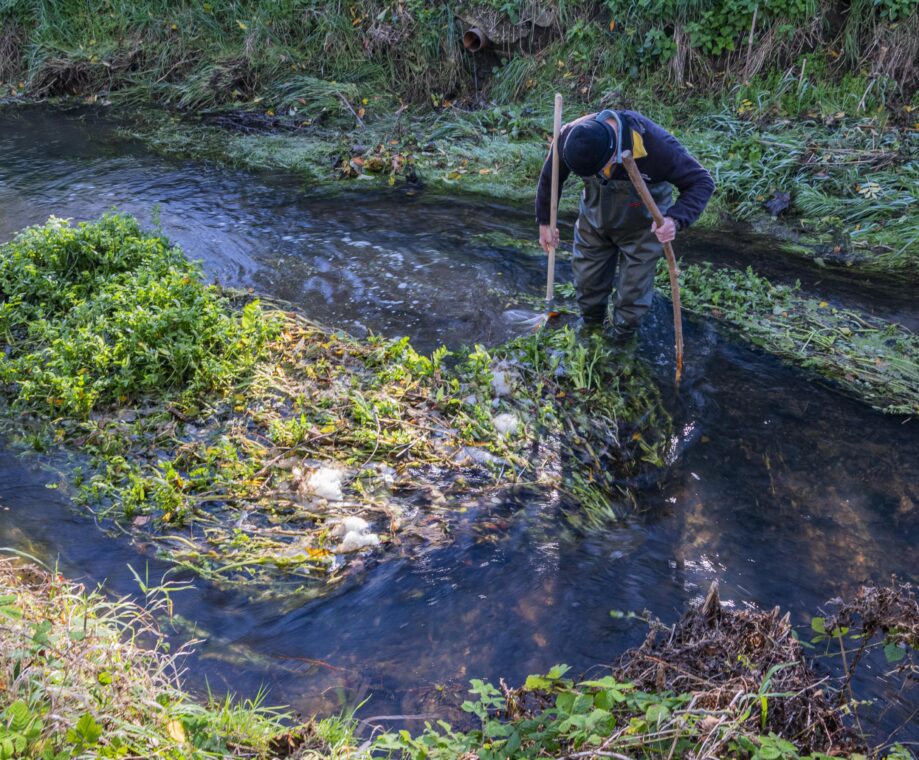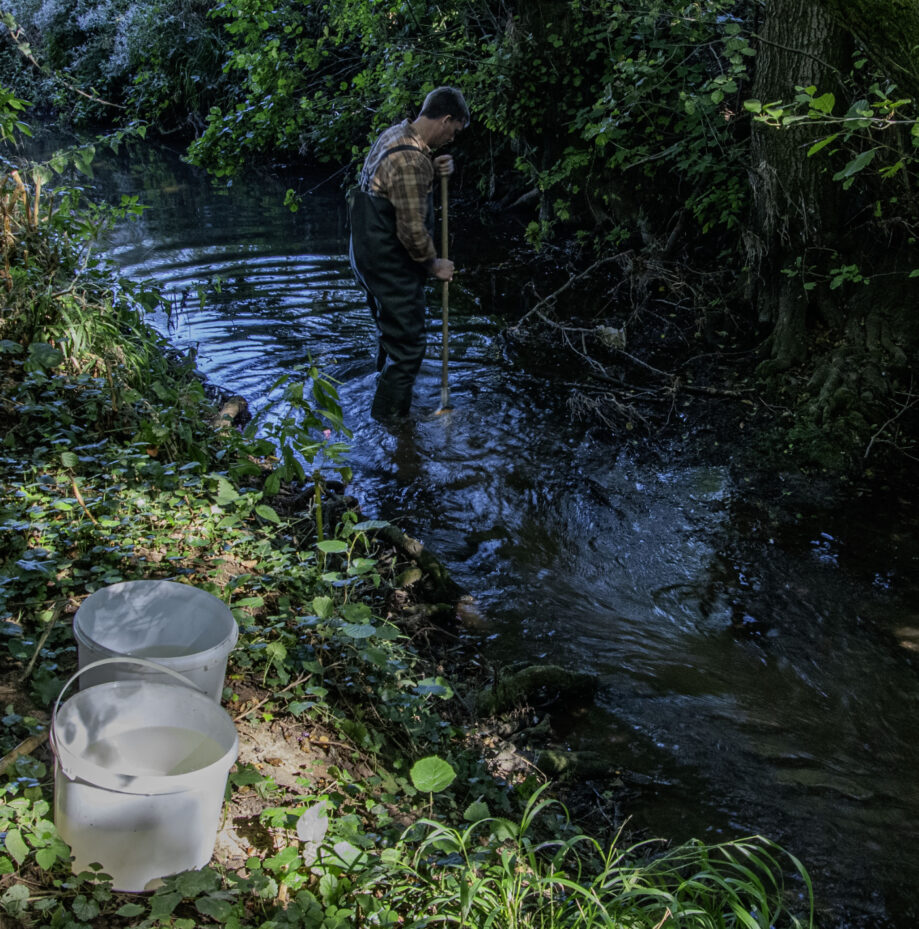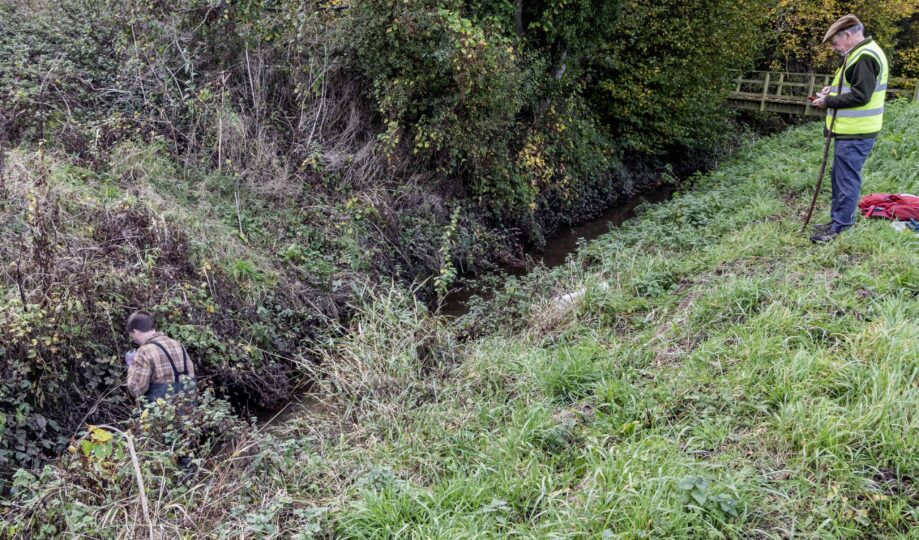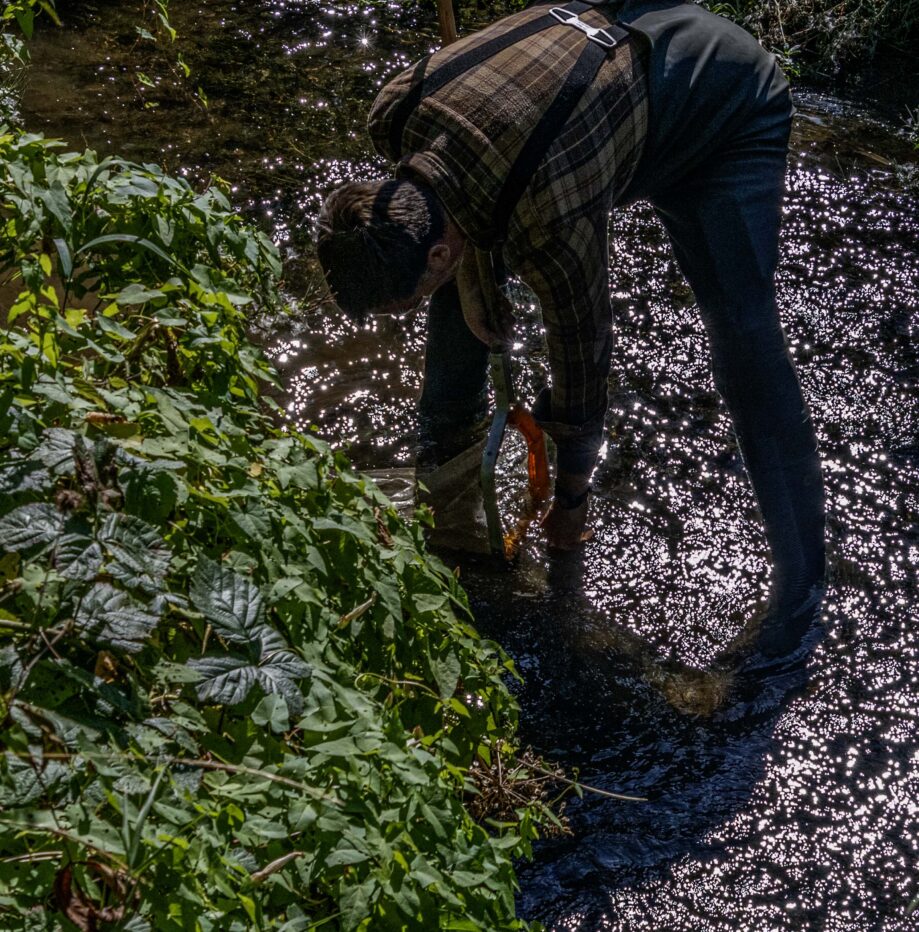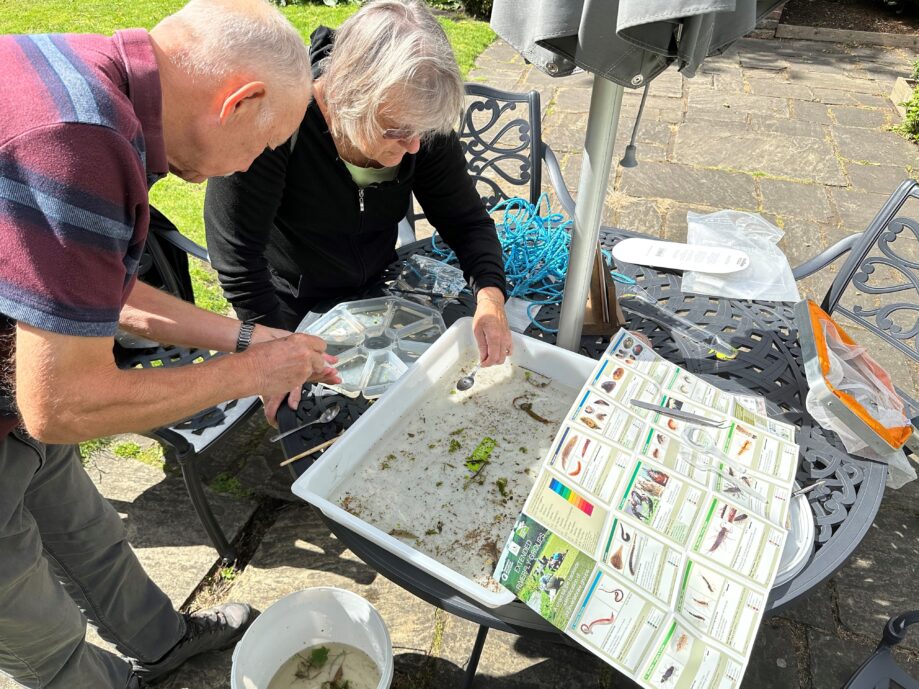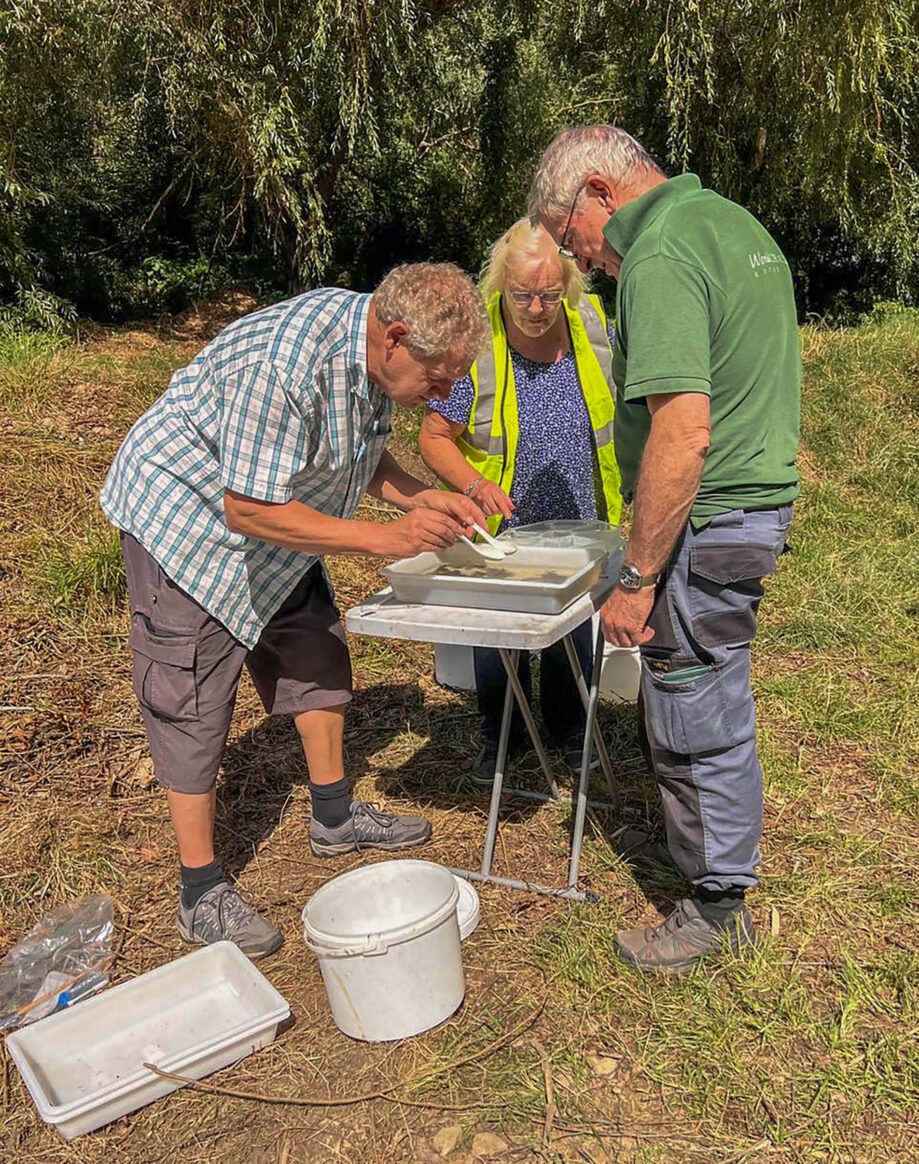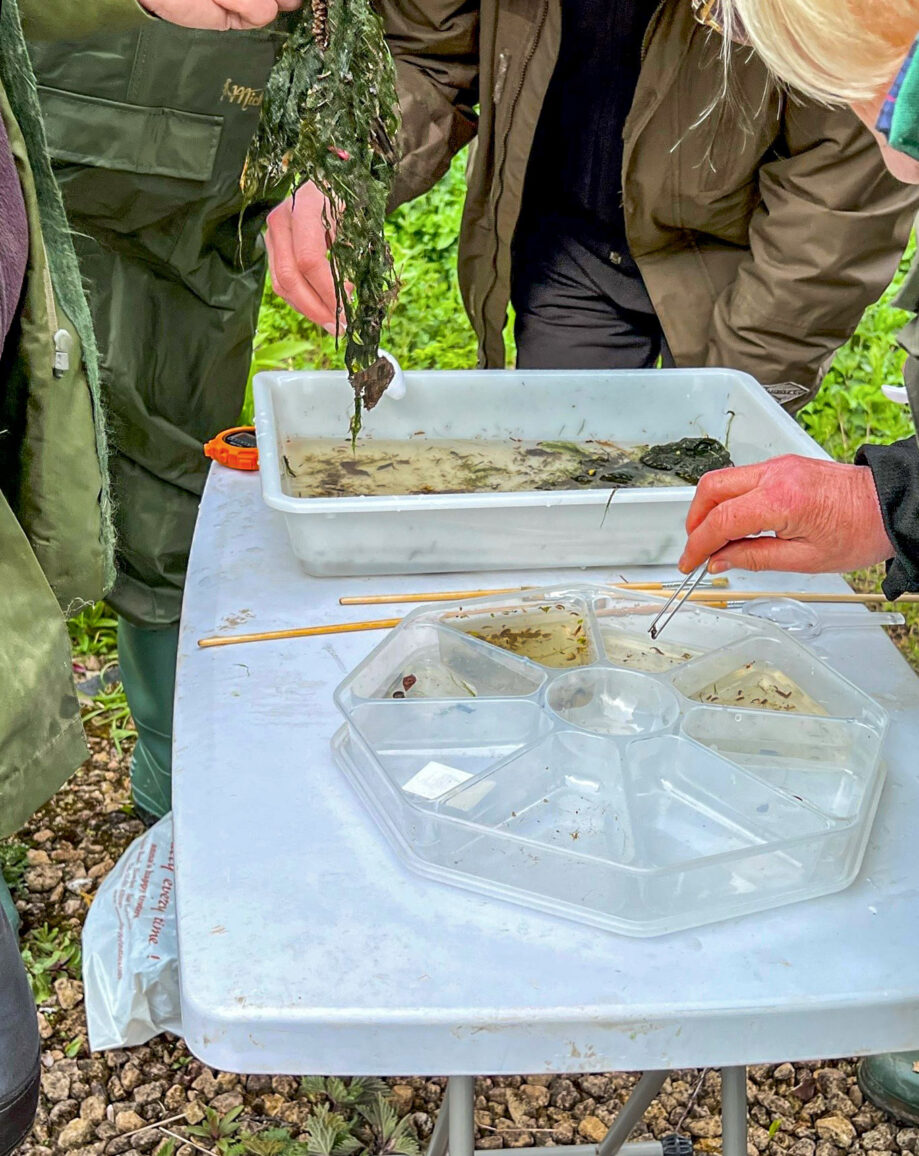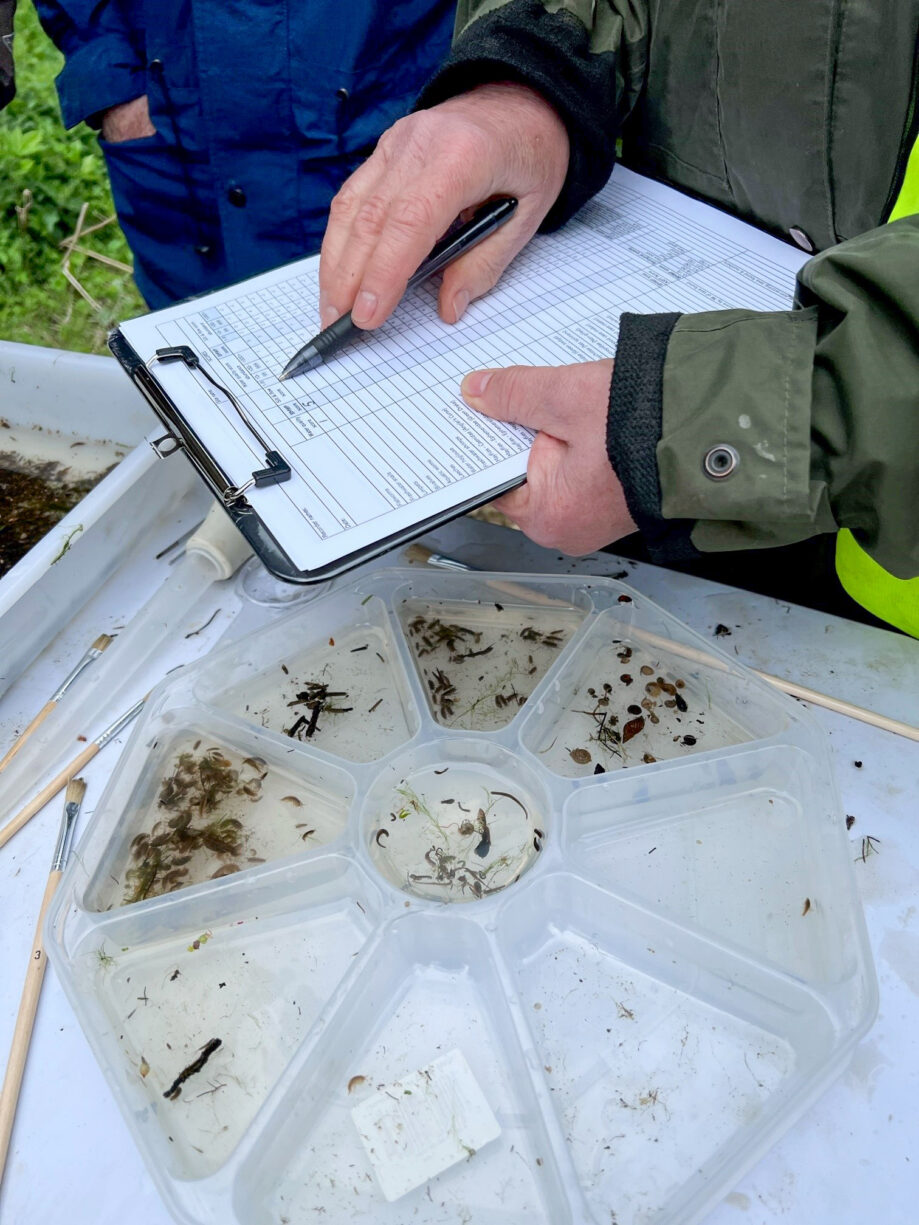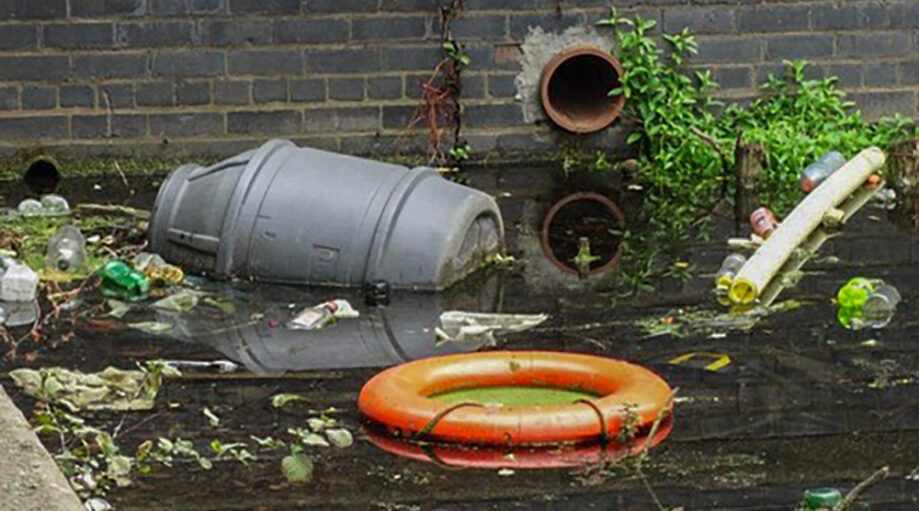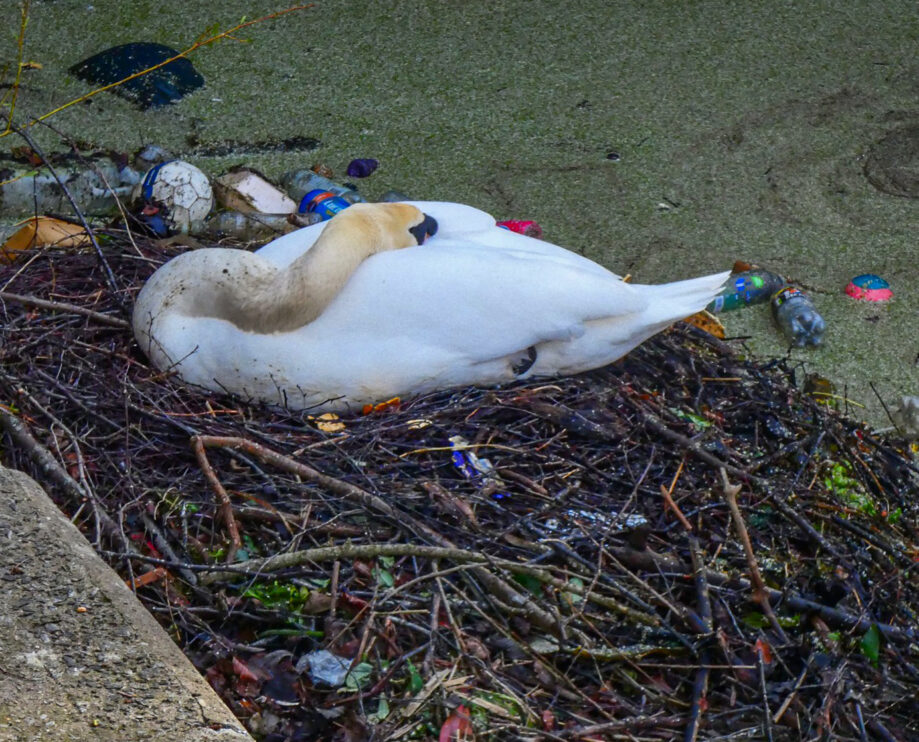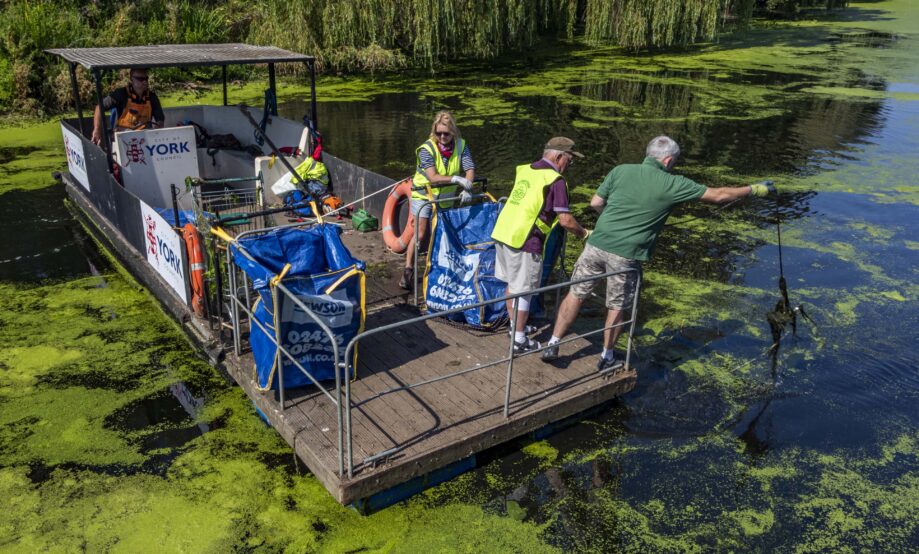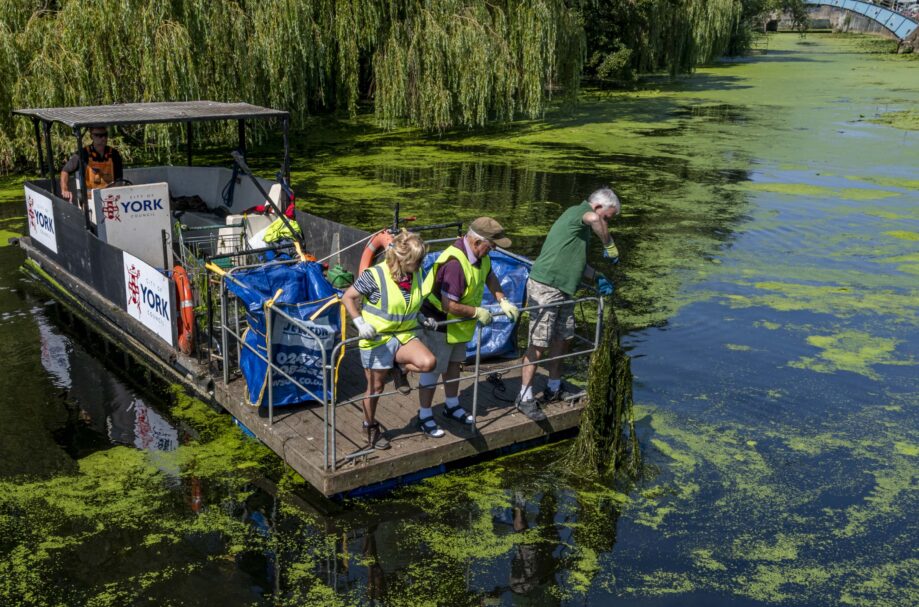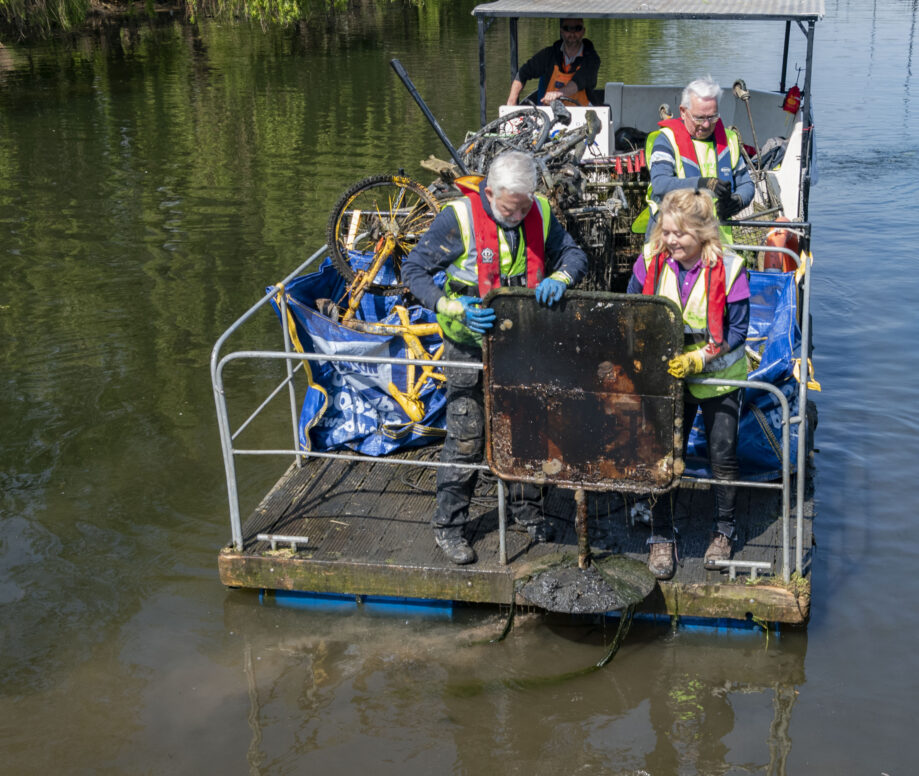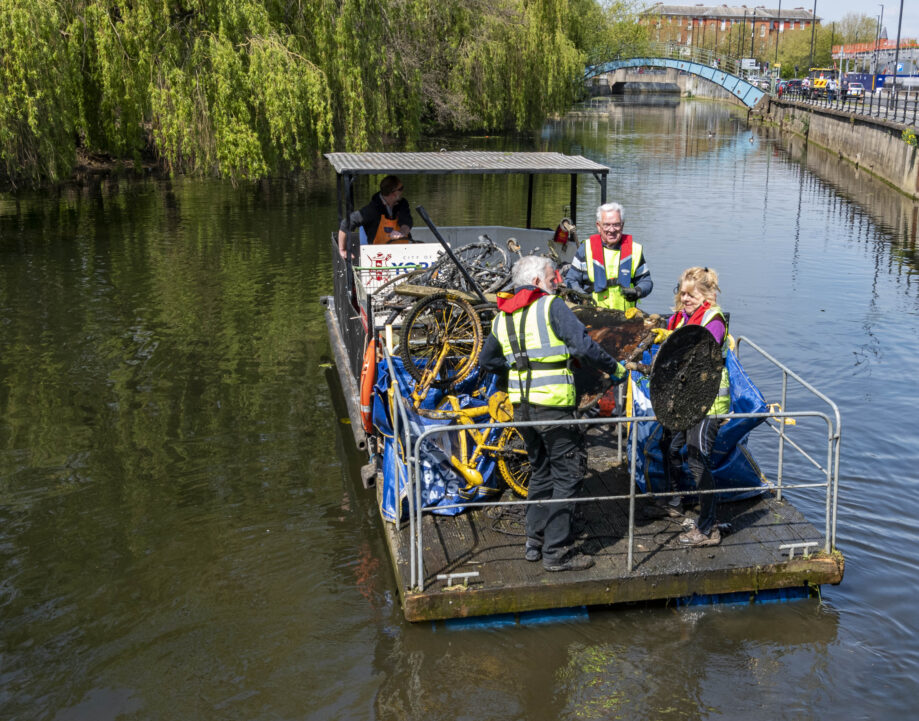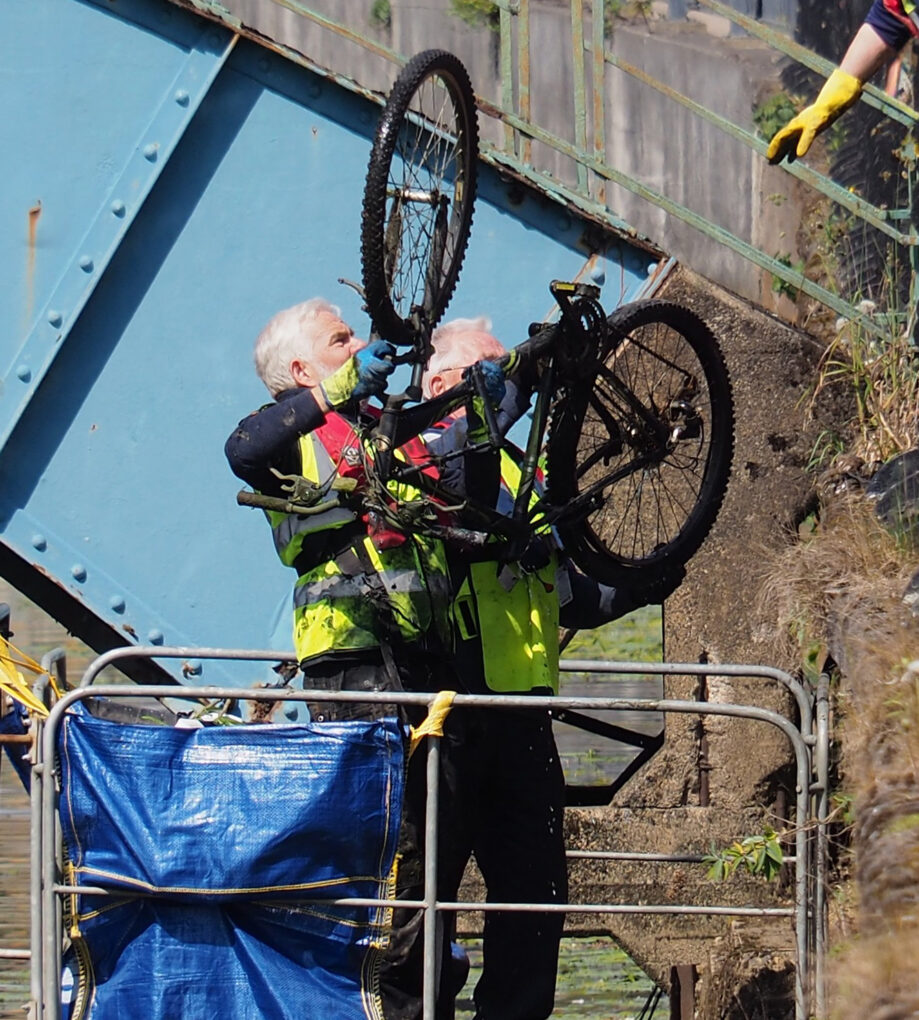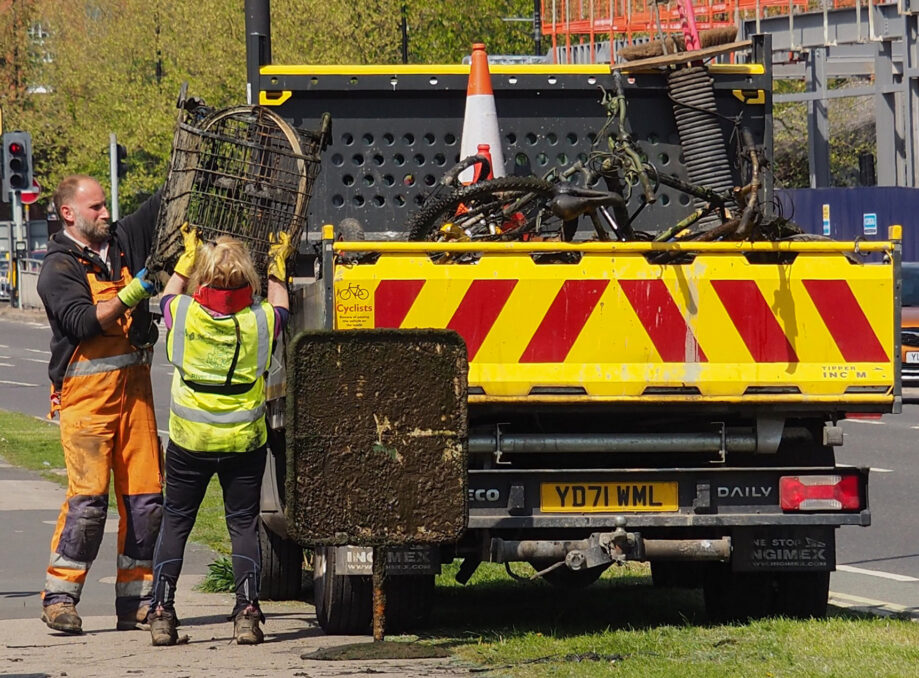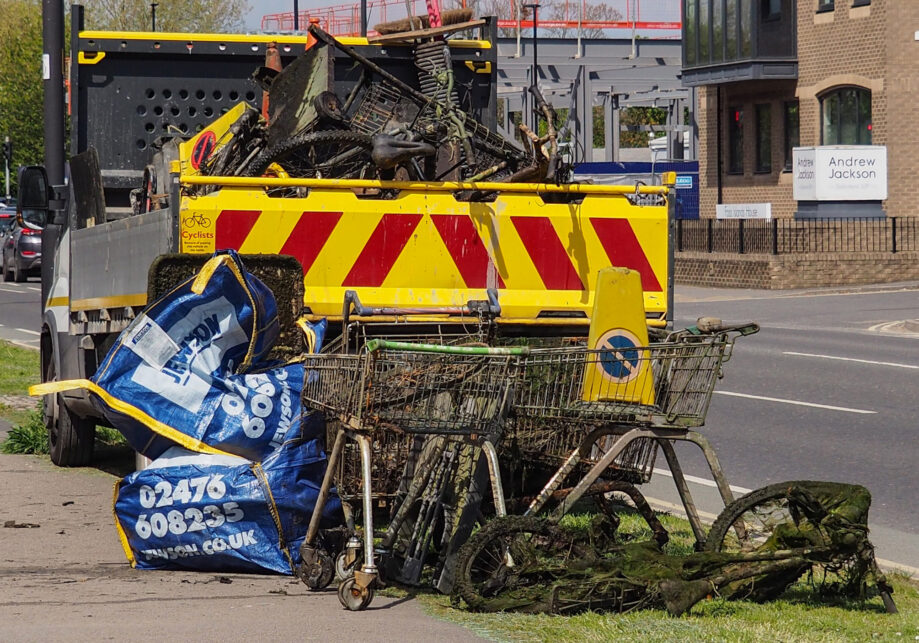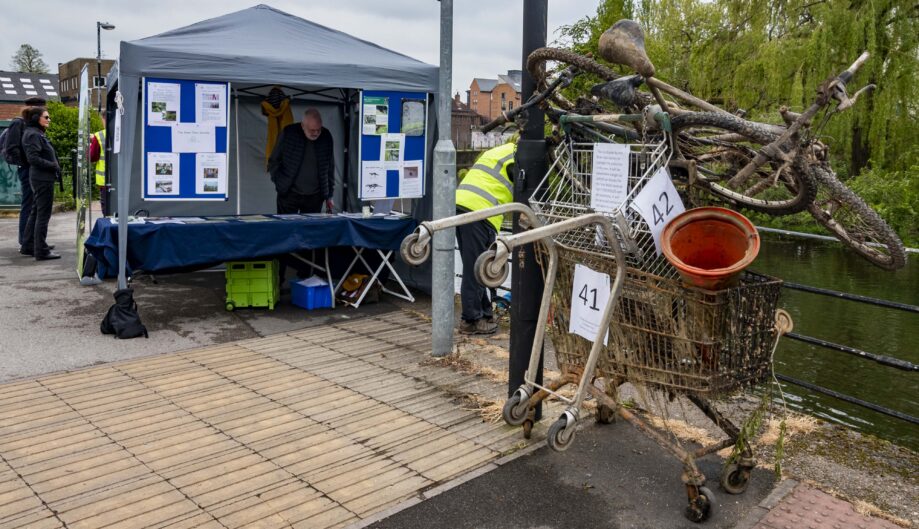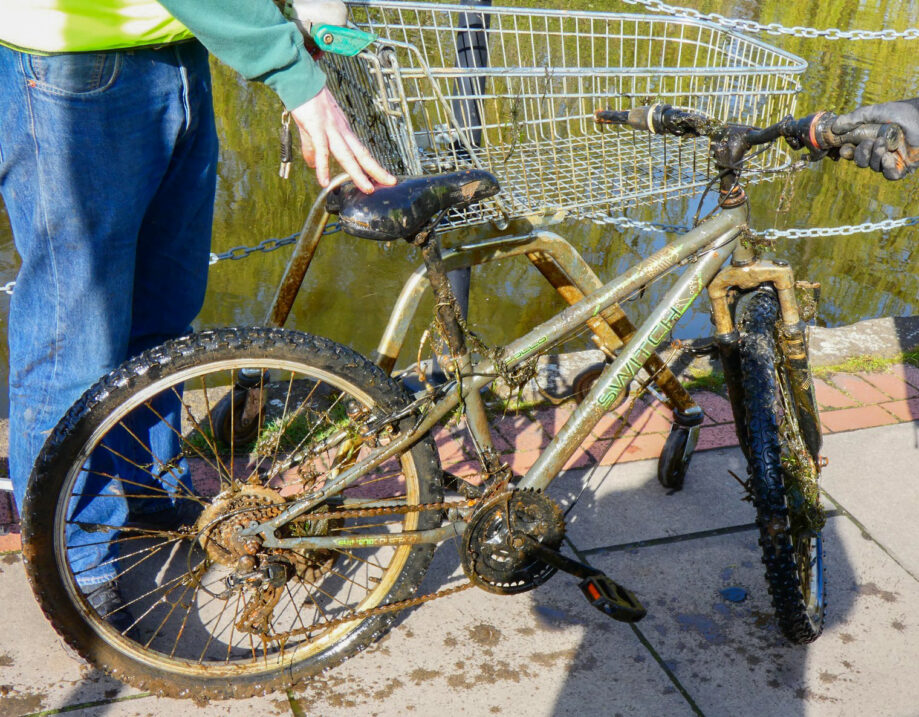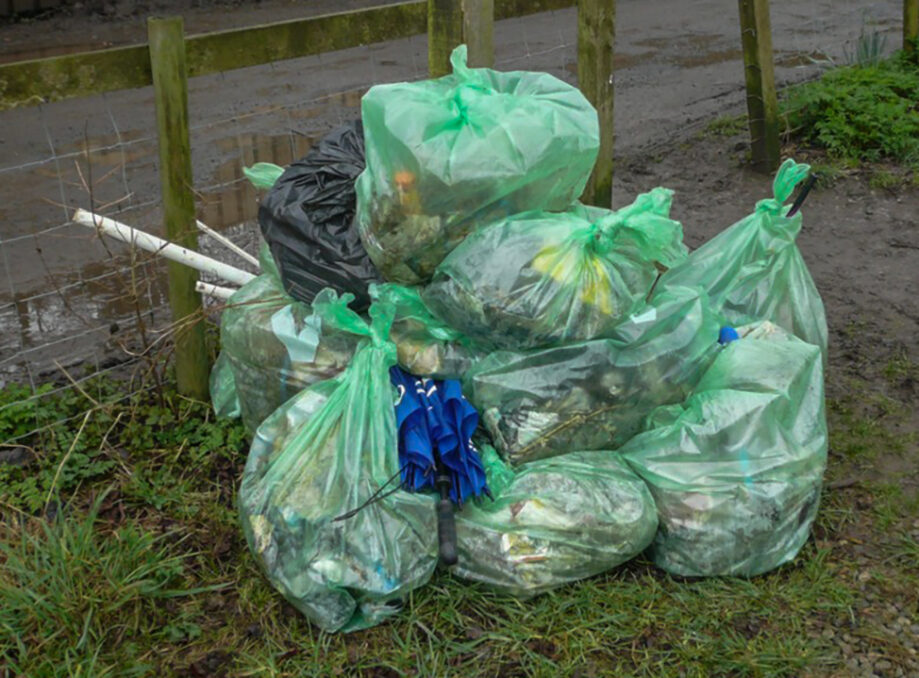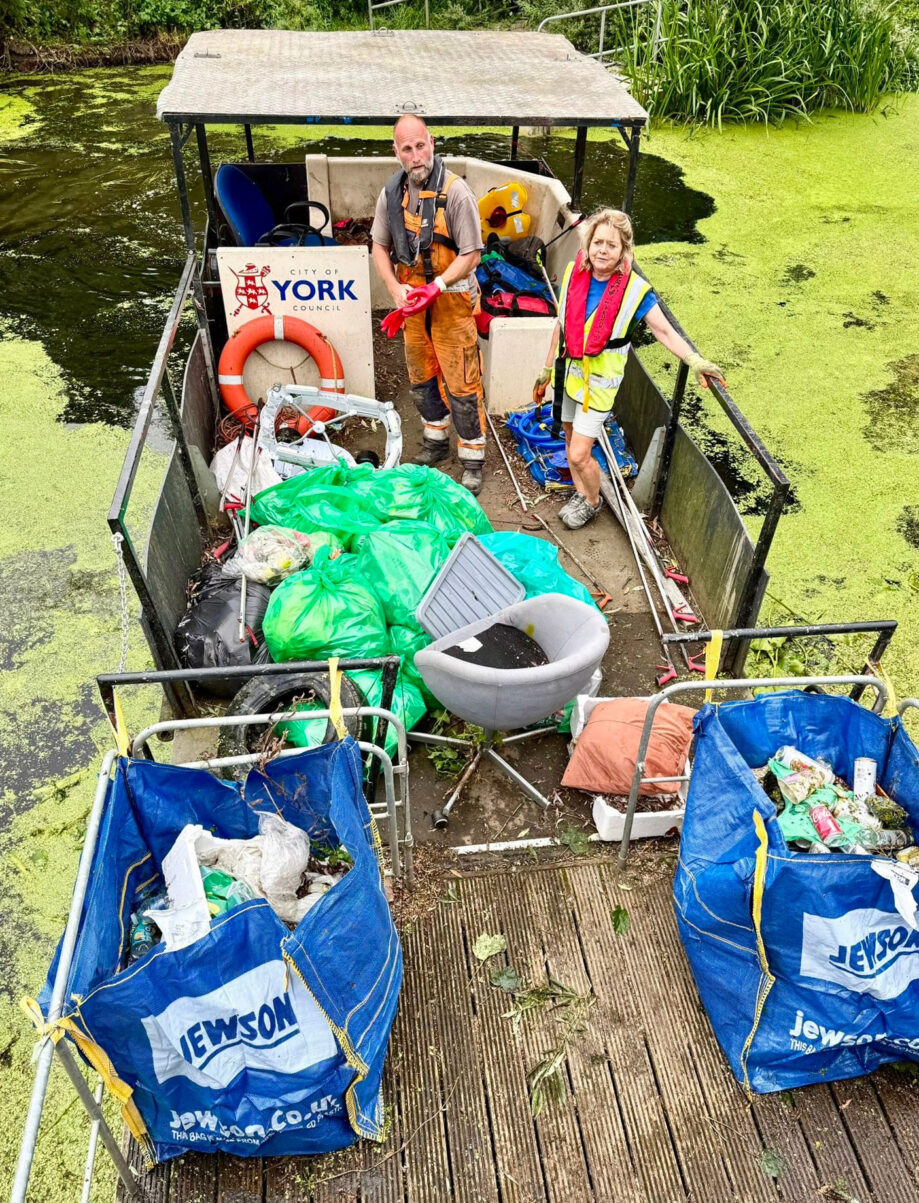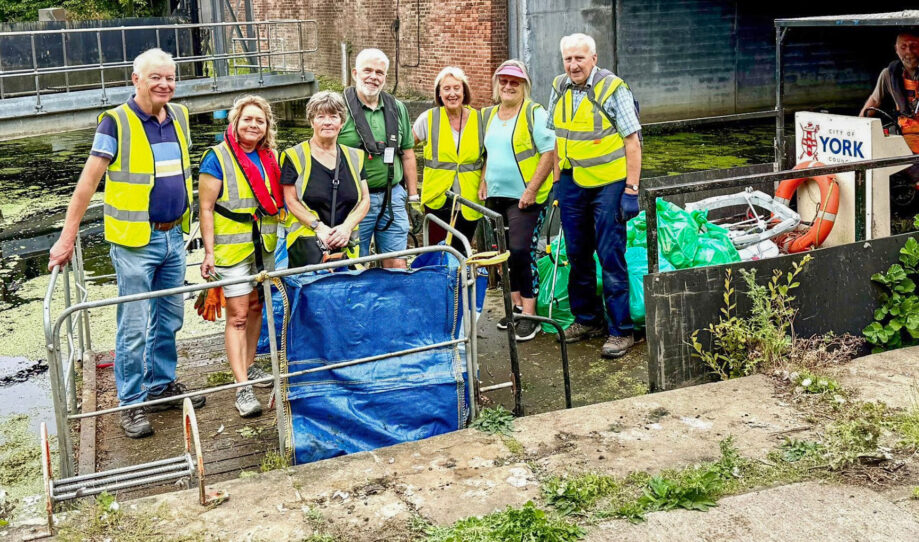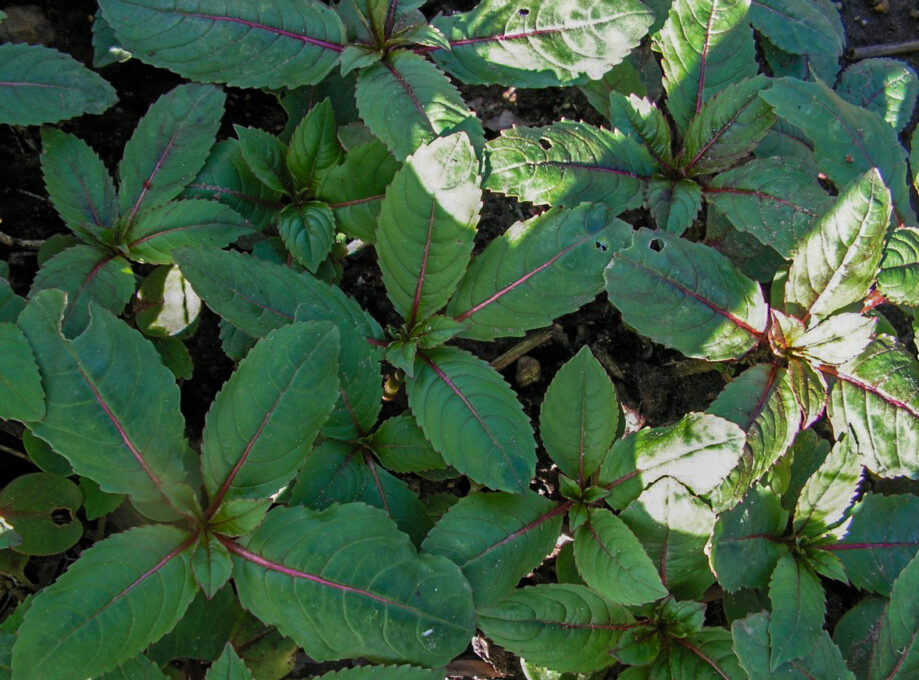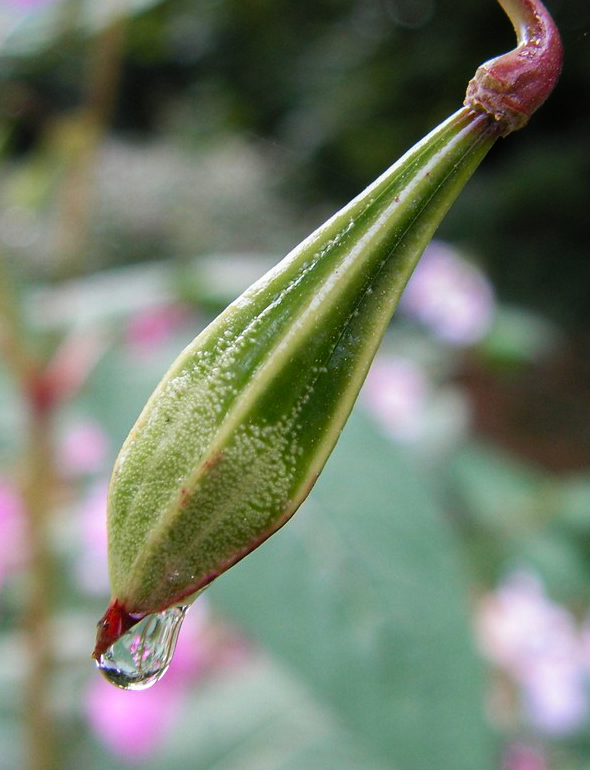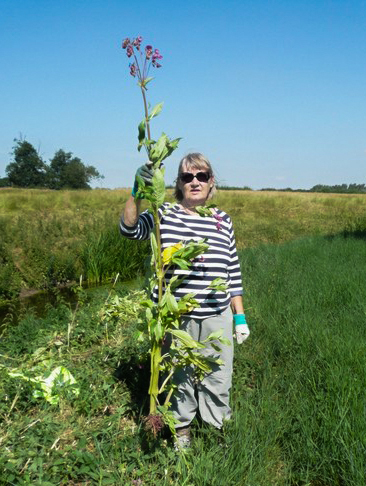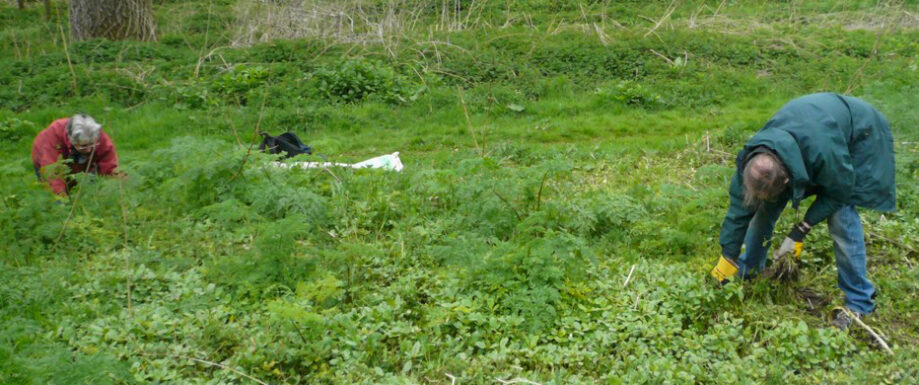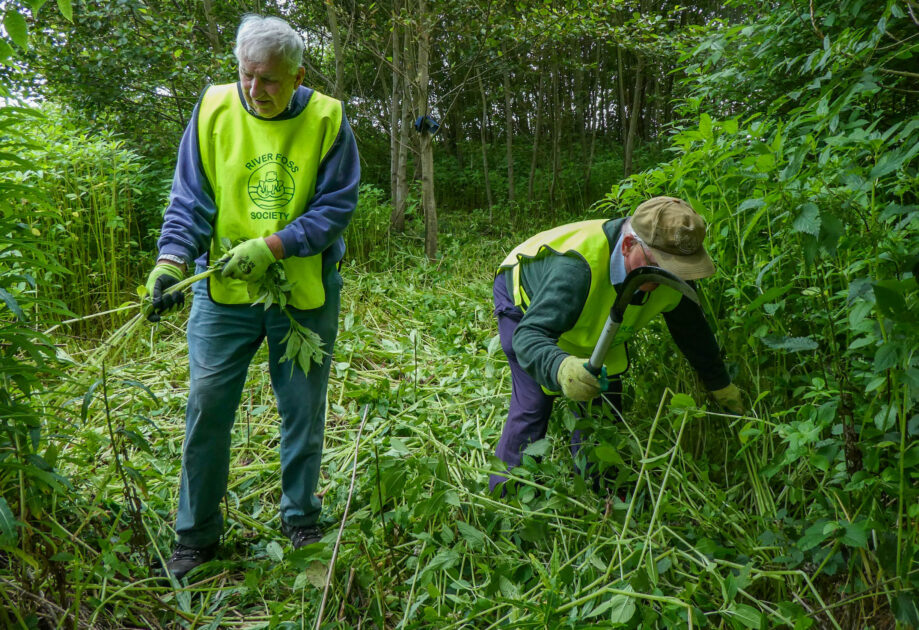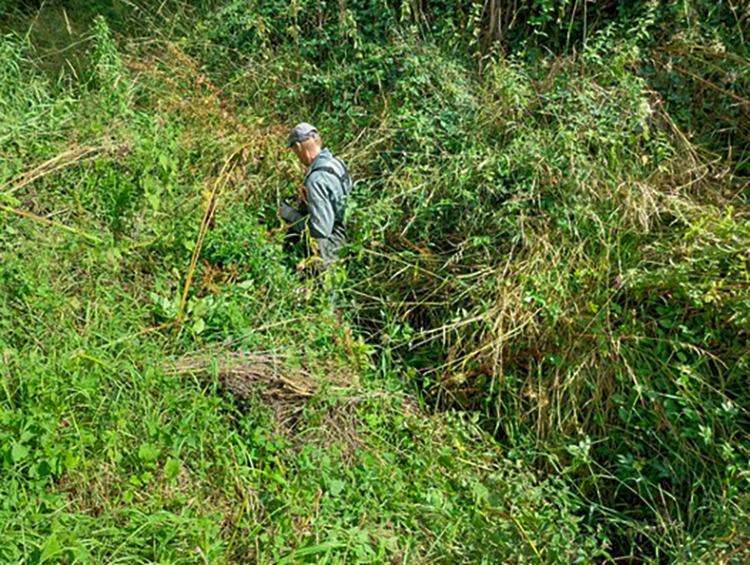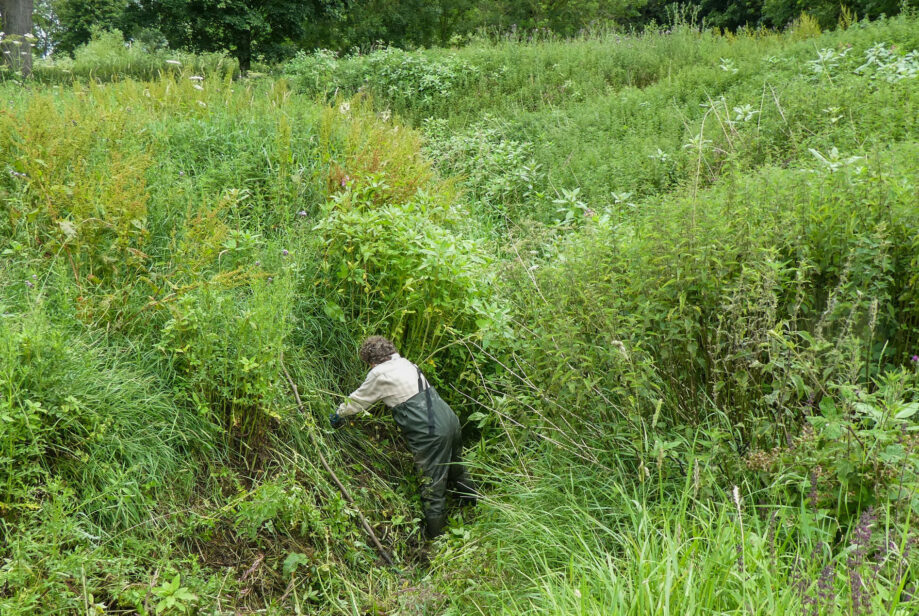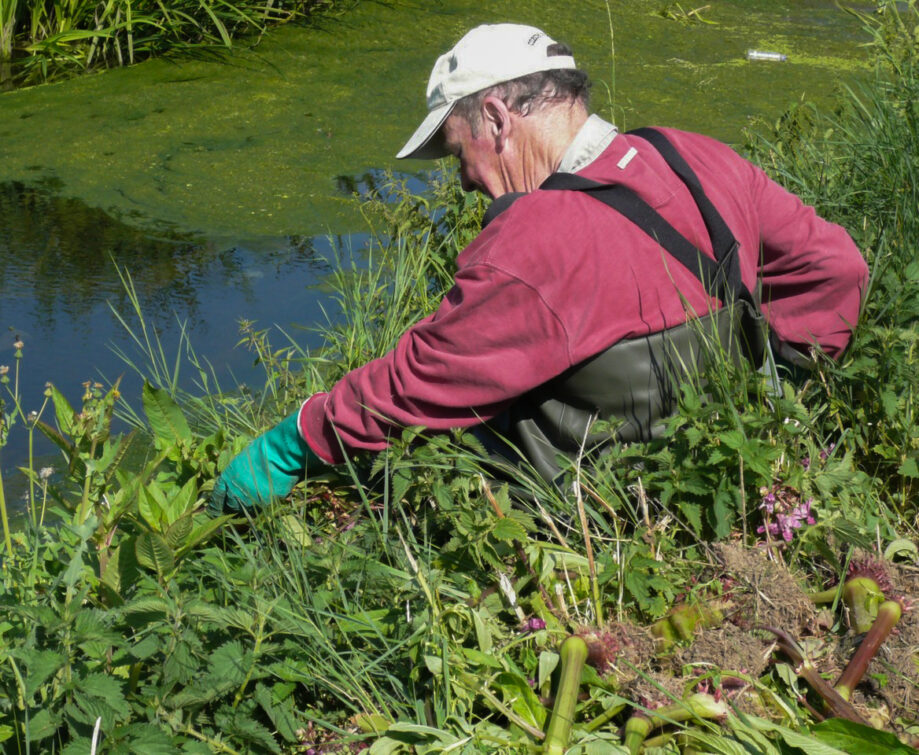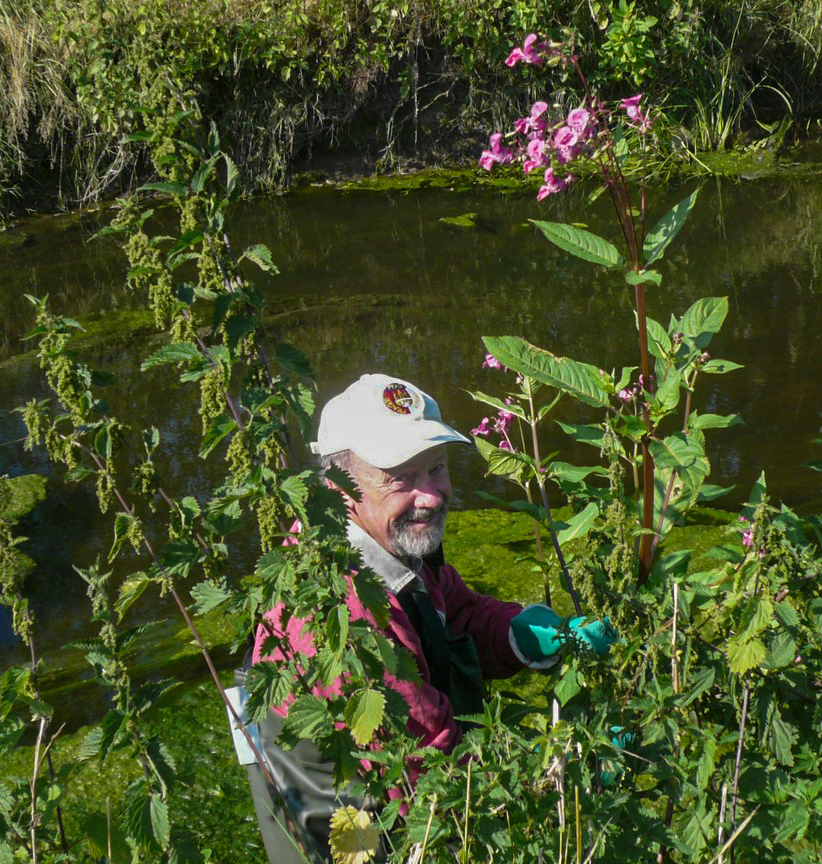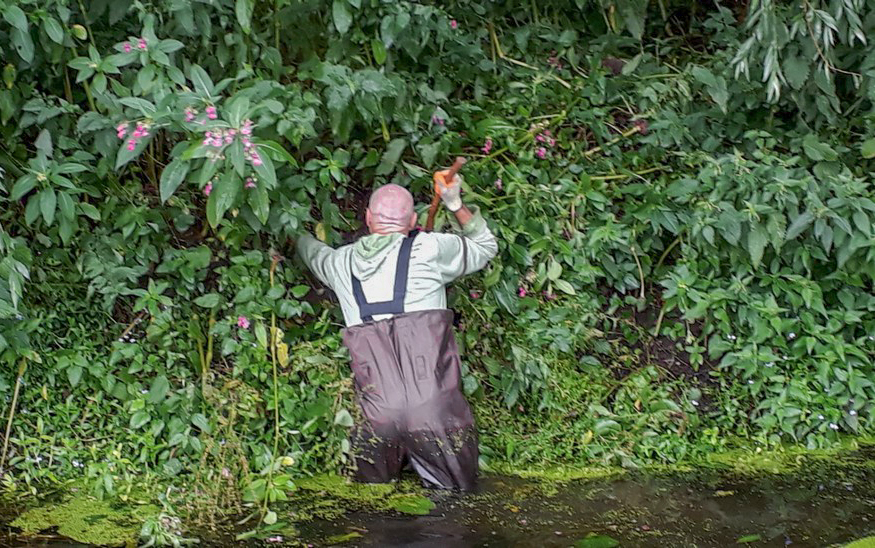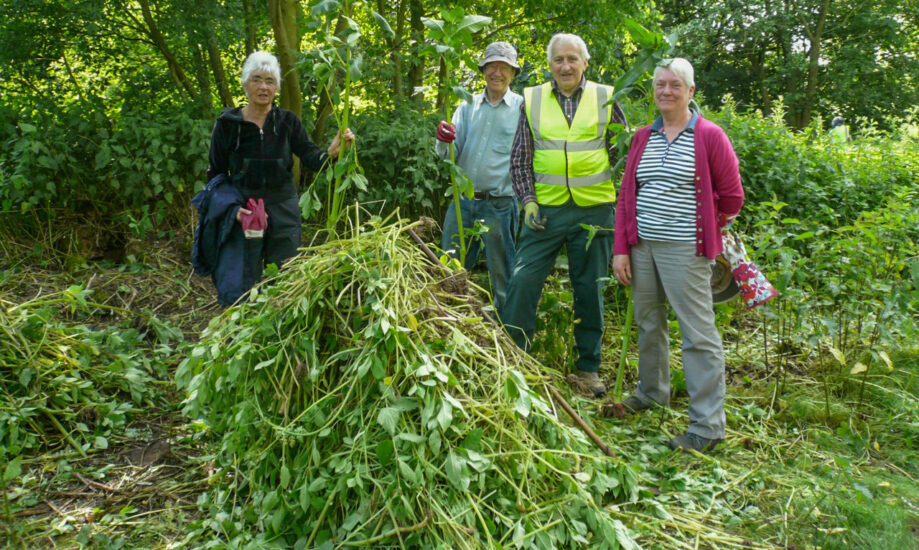Please scroll down the page to see regular, annual activities where we need help from volunteers
RFS members meet with York Outer MP, Luke Charters, October 2025
Four members of the Society, Alastair Fitter, our President, committee members Mike Grey and Barbara Hilton, and Alistair Grey, lead author of the State of the Foss report, met with Luke Charters MP, by the Foss, to discuss current problems associated with the river. These include sewage pollution from Yorkshire Water treatment works, CSOs, badly managed private septic tanks and sewage outfalls. Nutrient (organic) runoff from agriculture is also an important source of pollution from fertiliser use and manures as well as silt and sediment entering the river due to soil erosion and livestock movements. Dredging on sections of the river was discussed as this can have a severe detrimental effect on river wildlife. Towards the end of the hour long meeting, it was agreed that the RFS, along with other relevant organisations, will work together with Luke to apply pressure, where possible, to start to counter some of these problems.
RFS Stand at St Nicks Autumn Fayre, October 2025
The RFS stand at St Nicks Autumn Fayre was busy from the fayre’s opening to its closing! People asked lots of questions about the small aquatic animals on display, those collected the previous day from the cleaner headwater sites on the river and those collected on the day from the Foss’s city tributaries Tang Hall Beck and Osbaldwick Beck to compare the range of animals found. Children enjoyed trying to find the animals themselves from the freshly taken samples. Questions were also asked about the state of the river so we were able to explain how the small animals are so important in identifying how organically clean, or not, the river is.
Coffee and Cake Social, September 2025
Members had the opportunity to enjoy the superb cakes, scones, teacakes, etc at our annual visit to The Bakehouse Yorkshire up towards the headwaters of the River Foss at Crayke. As well as the excellent cakes (this cannot be repeated too often!) there was plenty of enjoyable chat in the lovely outside seating area with the weather being kind, as it always has been for this social event.
Visit to the Slowing the Flow Project and the Beaver Dams, Cropton Forest, August 2025
Members visited Cropton Forest to learn about the Slowing the Flow project which aims to store potential flood waters within the middle reaches of Pickering Beck and the River Seven to significantly reduce flooding in Pickering and downstream villages. We also learnt about the effect the addition of a beaver family has had on the project. Mike Potter, an integral figure from the inception of the project and through its development, explained the initial trials and tribulations and how the work has moved on from these in many positive ways. The project has been “hailed as a big success” by Forestry England. Beavers are now part of it and doing their bit to help.
Leaky dams, made from appropriate felled timber and installed by Forest Research, are a natural flood management technique which slow water movement in streams and rivers therefore reducing flood peaks downstream and are part of the Slowing the Flow project. A pair of beavers were introduced in 2019 to a 10ha enclosure, including 800m of Sutherland Beck and two old Victorian ponds, to see if they would build on these dams. The female produced two kits shortly afterwards with eighteen kits born since with a number now having been rehomed. The Cropton beavers have been industrious. They ignored the man-made leaky dams and built their own, including the longest in the UK, measuring 70m in length and 2.3m high, along with numerous smaller ones. Not only are they providing opportunities for various research projects at five universities, but the speed of water passing through the site has reduced and local biodiversity has increased significantly e.g. six clumps of frogspawn were counted before the beaver introduction in 2019 to an uncountable number in 2020, providing food for herons, otters, badgers and owls. Bat activity has increased four-fold and Noctule bats are present after a 30-year absence. The beavers’ tree-felling activities have opened up glades within the woodland allowing for native flora to flourish alongside aquatic plants in the ponds and wetland areas leading to increased numbers of invertebrates. So far, lots of positives for this project and the beavers, so many that other places across the country are looking to develop similar projects.
Social Evening, August 2025
Every month, from spring to autumn each year, a social evening is arranged for Society members at local pubs, each pub being in close proximity to the River Foss, to enjoy a chat about the state of the river, the state of the nation or any other interesting topic that might come up. At this meeting at the Blacksmith’s Arms, Huntington the chat included literature (from Lord of the Rings to Animal Farm), history, member’s adventures and misadventures in exotic and remote countries and the strange food items you might be expected to eat whilst in some of these countries and that was just at one end of the table. The pubs range from those in York up to those in Strensall. Members are always welcome to attend and details are available each month in the events email sent out by Mike.
State of the Foss Presentation to Society Members, July 2025
This was an opportunity for members of the Society to find out what varied activities are being carried out by the Society to learn more about the river and its environs, and hopefully ‘persuade’ the relevant authorities to take some action to improve the overall environment of the Foss. There is a lot of work being done by active members including water quality monitoring covering a range of chemical parameters, biological monitoring, Balsam bashing, monitoring Water Voles, Otter and Mink, litter picking, including a project by York University students on litter pollution on the Foss. The close collaboration we have with a range of research projects at York University and other environmental organisations was also mentioned. Speakers were Mike Gray, Barbara Hilton, Peter and Lynette Mills. Of necessity the presentation was an overview with Society President, Alastair Fitter, providing a resume at the end with suggestions of how to take the work forward. There was an opportunity for questions, followed by tea and biscuits.
York’s Hidden History Water Walk, July 2025
Dr Simon Rogerson guided a group of Society members on York’s Hidden History Water Walk looking at the history of the Ouse and the Foss. Starting at St Mary’s Abbey, Simon explained the importance of the Ouse for bringing in stone, metals and wool to the city, the former to build the Abbey and the latter to make York’s monks very rich. Following the river we walked past the Minster’s water tower, which no-one knows how it worked, past St Nicks new floating ecosystem to John Snow’s memorial – he was a York boy. With low river levels, we walked down to the Viking Recorder, which has monitored York’s many and various floods, then up to King’s Staith to hear about the different bridges built over the Ouse, their ups and downs, then onto the Esplanade with its reused Minster carving. We passed an overgrown record of York’s floods, viewed the Tudor toilet which discharged directly into the Foss from the guardroom of the Fishergate Postern Tower and then walked past St Denys’ church with its new masons’ marks as they continue to maintain the building following its much earlier and significant reduction in size due to subsidence (ongoing) following the draining of the King’s Fishpool on the Foss. We were taken to the best view of Rowntree’s Wharf and finished at the Merchants’ Hall, built on the bank of the Foss by those men who helped to make York a vibrant and successful mediaeval city, like the monks we started with.
New Members’ Meeting, July 2025
We held a meeting at the Riverside Centre for new and potential new members to inform them about what we do and what we know and love about our small river. We displayed a number of information boards showing the different activities we do to monitor and improve the river, a display of historical photos of the Foss plus a range of live, small animals (macroinvertebrates) caught in the upper reaches of the Foss the day before. Volunteers were on hand to explain things and also answer any questions. Roger Button gave a well-researched and informative presentation on the historic and present day photos donated to the Society by Mr Paul Thorpe. Savoury nibbles, cake, wine and other drinks helped the evening along!
Stand at Portakabin Safety Stand Down Day, July 2025
We were invited to have a stand at Portakabin Headquarters’ annual Safety Stand Down Day where members of their staff are encouraged to visit stands highlighting new equipment and health and safety measures within their industry, but also organisations relating to mental health and well-being. As we explained to Portakabin staff what the Society aims to do and what activities our members can take part in to improve our local river, we enjoyed conversations with them on a range of subjects from biodiversity to climate change, national water quality to how to encourage children to respect their environment. An interesting day in an unusual setting for us.
Biodiversity Walk Along the Banks of the Foss, July 2025
Professor Alastair Fitter led members of the Society along with members of York Naturalists’ Union on a walk from The Hound Lounge to Lock Cottage, across the relatively new ‘reserve’ adjacent to Haxby Road and back to New Earswick. Unusual flowers, grasses and trees were pointed out by Alastair, including Tansy, but without Tansy Beetles as yet on the Foss, Pendulous Sedge, once rare but beginning to spread locally and Wych Elm, unfortunately now rare due to Dutch Elm Disease. Due to the blustery conditions, few flying insects were about but those spotted were identified by Sam Buckton from York Naturalists. The relatively new ponds on land adjacent to Haxby Road and New Earswick Reserve, dug to encourage Great Crested Newts, were low in both water and aquatic plants so a bit more development will be needed before the newts possibly take up residence.
Wildflower Walk Along the Banks of the Foss, June 2025
Dr Margaret Atherden led a leisurely stroll along the Foss, from All Saints’ Church, Huntington to the footbridge over the river at Earswick and back to Huntington looking at many of the wildflowers found on that stretch of the river. These included the Common Spotted Orchid, Bittersweet, Grass Vetchling (much prettier than its name implies!), Ground Ivy and garden escapees such as the Multiflora Rose and Red Valerian. Many questions were asked and answered so, hopefully, those of us on the walk will look out for these flowers in the future and also feel encouraged to find and identify more.
York’s Hidden History Earth Walk, May 2025
Dr Liam Herringshaw, of York’s Hidden History, guided RFS members around York City for his interesting and entertaining Earth Walk. Liam explained the ancient, natural and scientific secrets of the city including the age of the city, finding York’s unexpected oldest building, the remarkable scientists who lived and worked in York and ending with the entirety of Yorkshire in pebbles!
RFS Information Stand for City Nature Challenge, April 2025
Our stand near the Hound Lounge, New Earswick on 27th April, 2025, was there to encourage people to take part in the City Nature Challenge where cities around the world collaborate to share observations of nature. York secured a position of 47th out of the 669 participating cities from 62 countries, securing a GOLD award for the total number of species observed with 1487 different species recorded. Apart from all of these species found, photographed and uploaded to the iNaturalist app for confirmation of identification and counting, one or two more undesirable items were also found in the Foss! Stalwart volunteers from the Society dragged the offending items out of the river in New Earswick and they were then collected for disposal by City of York Council.
Biological Monitoring – Annually, from spring to autumn
Biological monitoring, by kick-sampling, takes place from spring to autumn each year, currently at 19 sites on the main river and some tributaries. We use professional equipment and sample to professional standards i.e. using a 3-minute kick-sample followed by a 1-minute hand washing of stones where possible. The animals are sorted, identified to family level using the Extended Riverfly Groups and then professional biological indices are calculated to assess the biological health of the river. Teams of two or more trained citizen scientists do this work at most of the sites, some of which are very close to excellent cafes and pubs! One or two sites are rather difficult due to depth of the water (see Haxby Weir!) or depth of the bank sides (Black Dike) so sweep-sampling might be used when necessary. It’s important work which will hopefully identify any future improvements in water quality so if you would like to get involved and find out more about the smaller animals in the Foss, just contact us.
Litter Picking – Annually, each month from April to October
Volunteer members from the Society collect litter and rubbish from the river every month from April to October each year. Specifically trained volunteers work on City of York Council’s (CYC) boat, Foxy, to locate, grab and load onto the boat large items ranging from motorbikes, bicycles (one being an electric bike), the ubiquitous shopping trolleys and a range of other interesting finds, including surface litter, all kindly offered to the Foss by citizens of York and tourists who seem to consider the river a large, convenient waste bin. Other volunteers work in groups collecting the usual litter, bottles, cans, discarded food wrappers and containers, etc, from the banksides with well known hot spots for litter including Castle Mills car park and Castle Mills Bridge. All of the litter and rubbish is then collected by CYC for appropriate disposal. Any bicycles that can be salvaged are passed onto an engineer in York who refurbishes them and donates them to charity. Members of the public who see the amount of litter and the range of large items collected at each litter pick are always shocked but grateful for the work the Society does to remove it. If you would like to help with this important work – litter not only looks awful and contaminates the water, it is also highly dangerous to wildlife within the river – then please contact us.
Balsam Bashing – Annually from April to August
Himalayan Balsam (Impatiens glandulifera), also called Policeman’s Helmet due to the shape of the seedpods, was brought to the UK from the Himalayas by the Victorians who considered it a beautiful addition to their gardens. Now it is an Invasive Non-Native Species (INNS – listed under Schedule 9 of the Wildlife & Countryside Act 1981) and a Species of Special Concern (under retained EU Law) as it is one of our most rampant weeds particularly along river, lake and pond banksides, within ditches and on damp ground. It is illegal to cause Himalayan Balsam to spread and there are restrictions on growing, cultivating, selling and transporting it.
Himalayan Balsam is the tallest annual plant in Europe. It grows rapidly early in spring, out-competing our native wildflowers for light, space, water and nutrients and it spreads easily due to the explosive seedpods which scatter up to 2,500 seeds per plant as far as 7m from the parent plant. The seeds are frequently distributed by floating downstream therefore contaminating all reaches of rivers, but also by attachment to animals and humans and by the moving of contaminated soils. Banksides can become inaccessible due to its uncontrolled growth. When it dies back in winter it leaves river banks, etc bare of vegetation and susceptible to erosion leading to increased siltation within rivers. Traditional control methods such as scything and pulling the plants up (which is quite easy as they are shallow rooted) cannot generally defeat the plant’s continued spread but, at the moment, it’s all we have and we must keep on removing as much as possible. Research is ongoing into the use of a Rust fungus which attacks Himalayan Balsam in its native regions but, following strict international testing procedures, has been shown not to attack other related species. It is currently being tested at 50 sites across the UK so there may be hope for a more efficient means of control which will, again hopefully, not be too expensive. Meanwhile we are always looking for volunteers who would like to help us control this dreadful invasive plant which dominates many stretches of our river. Do contact us if you would like to release any pent up emotions by bashing and helping to destroy an invasive species or you would just like to help clear our river of a plant which causes so much damage.

